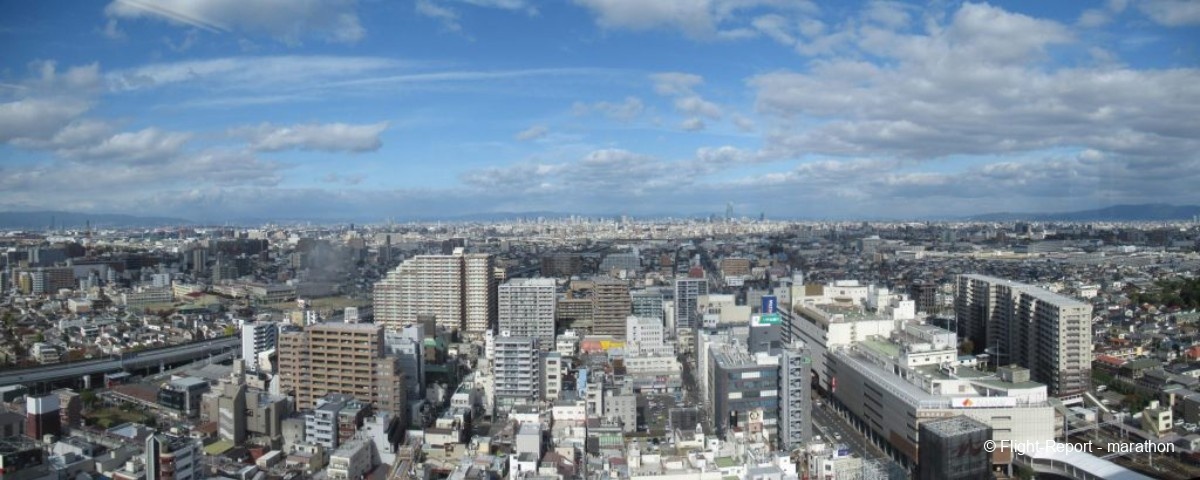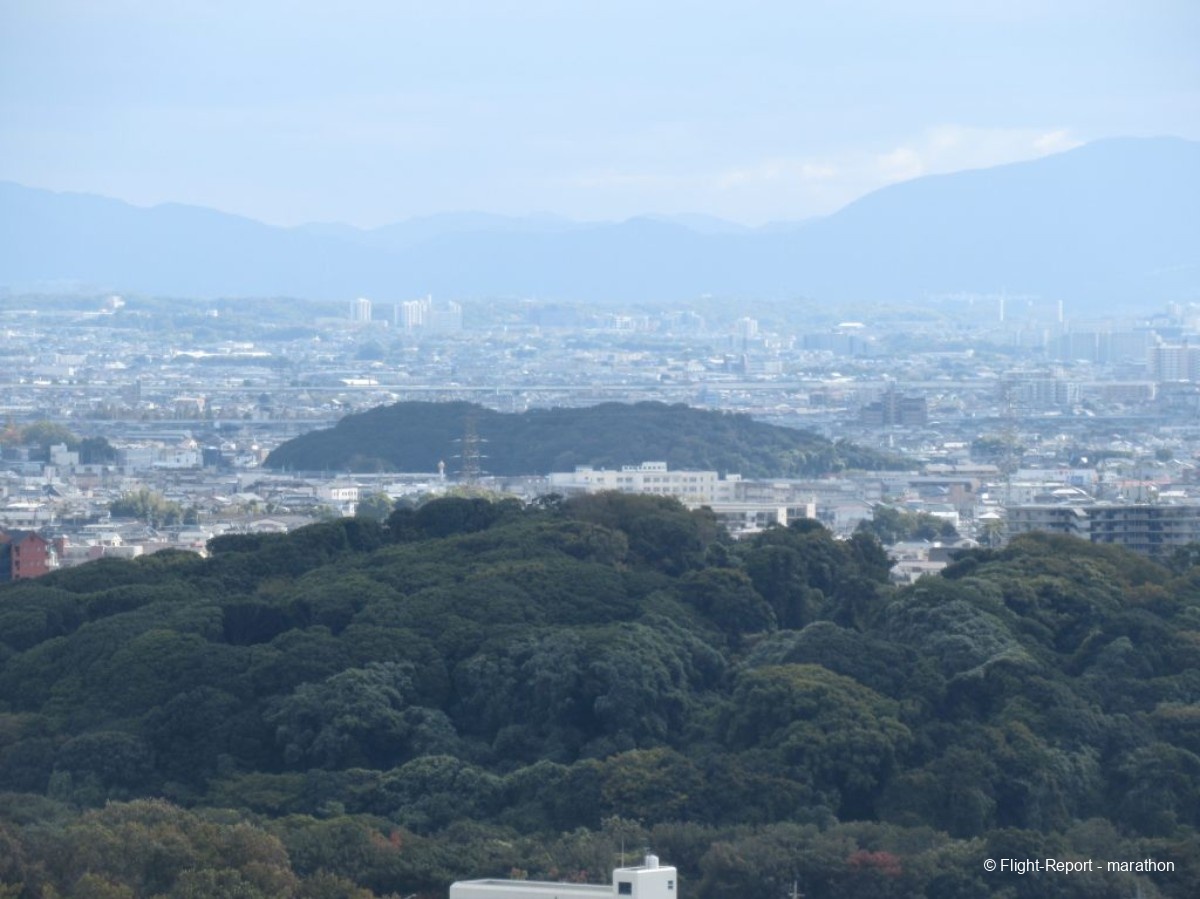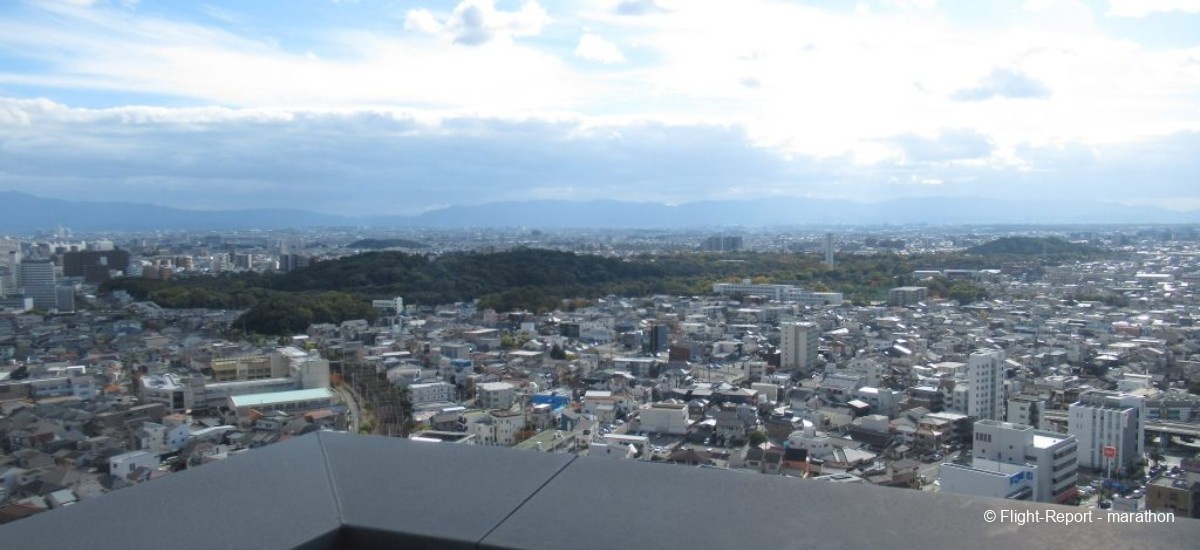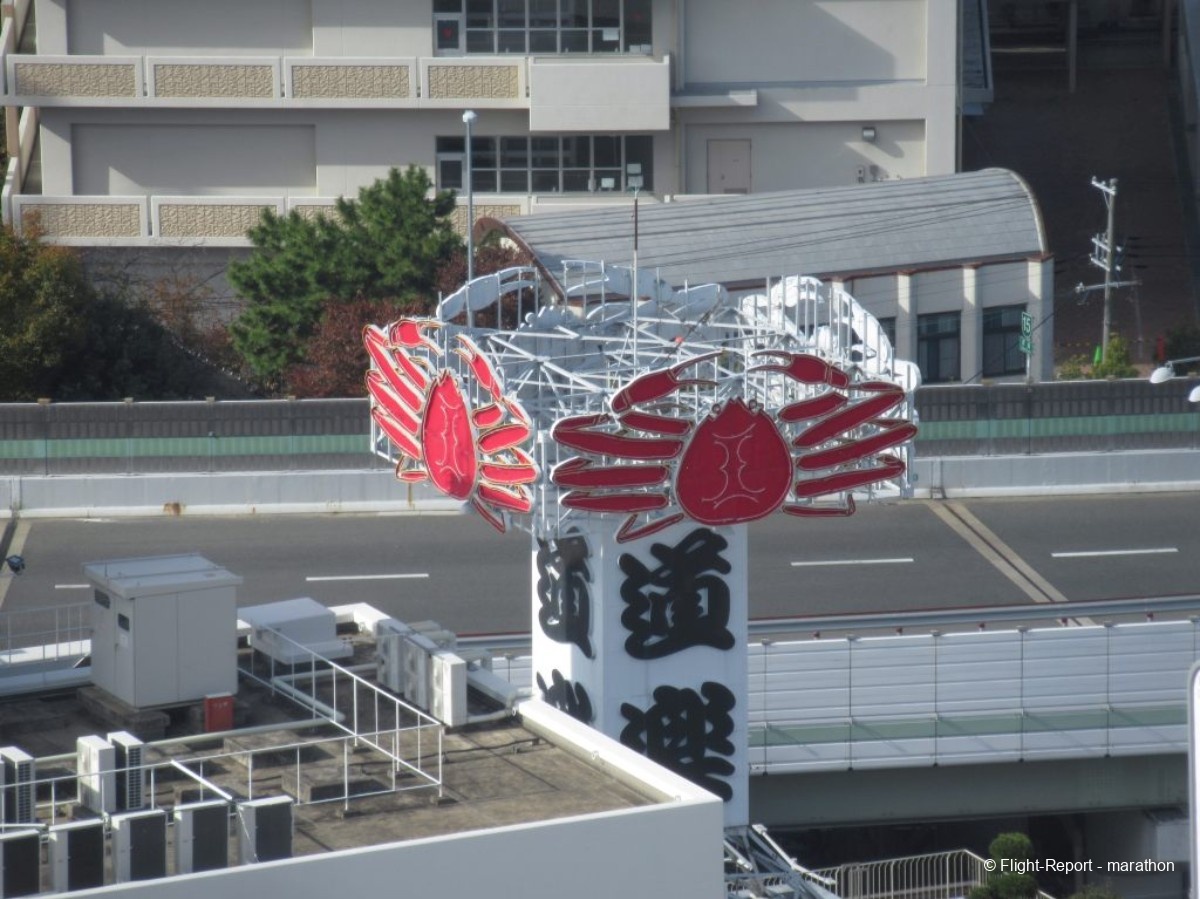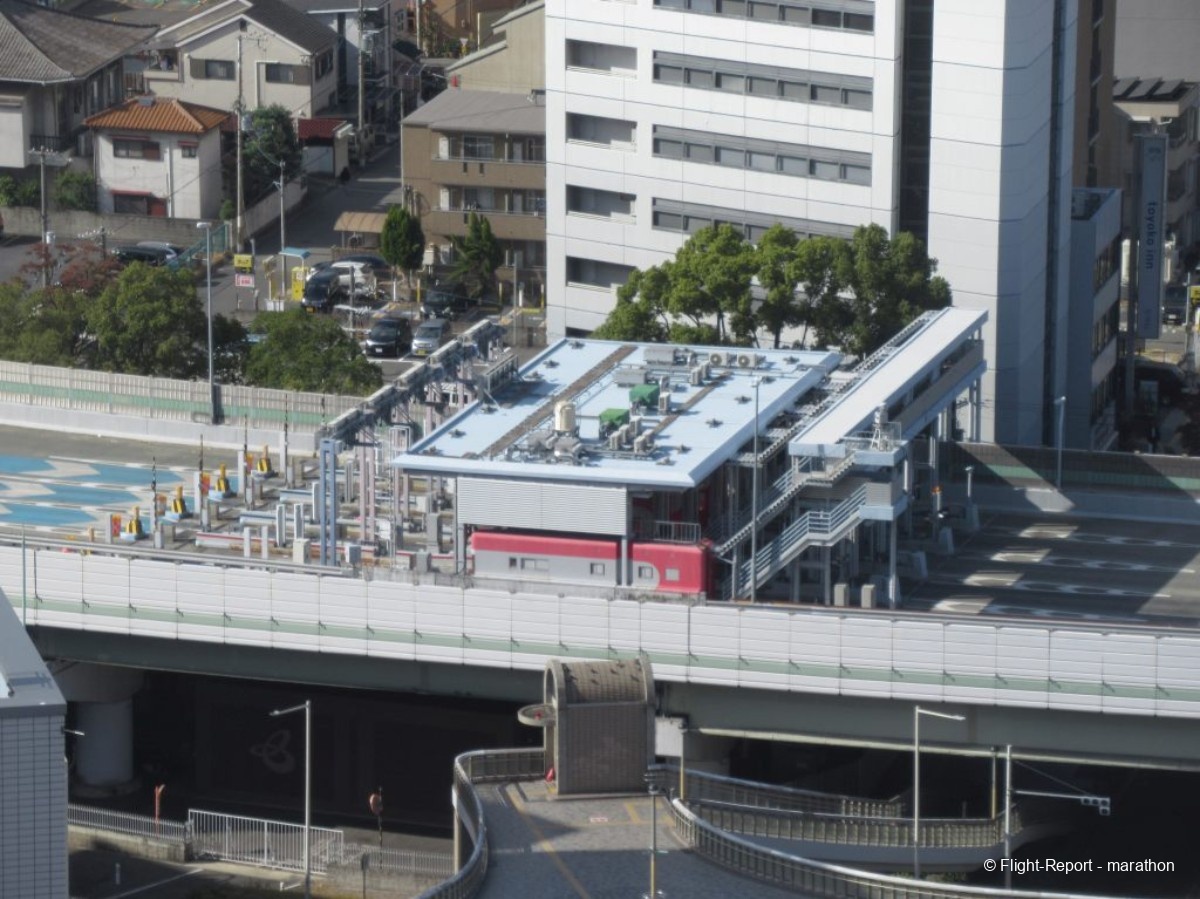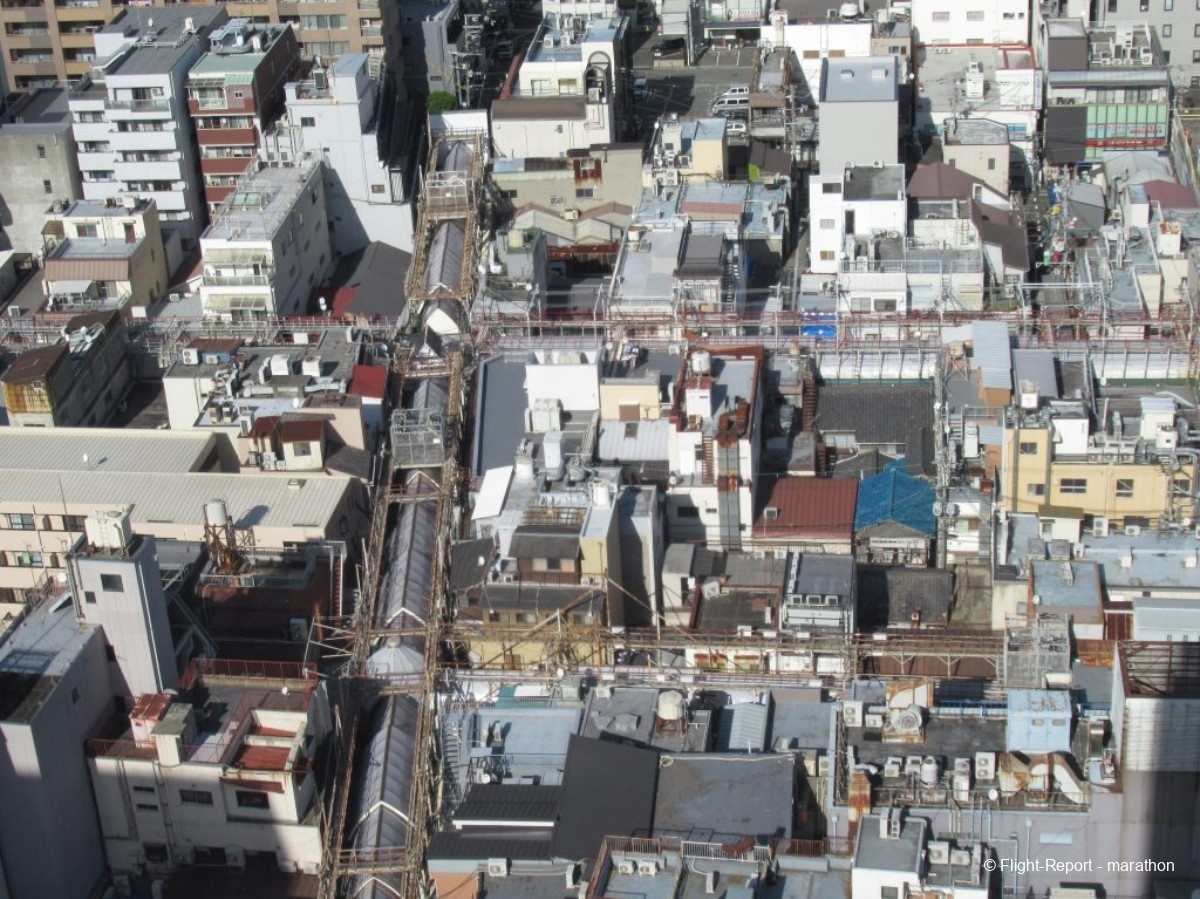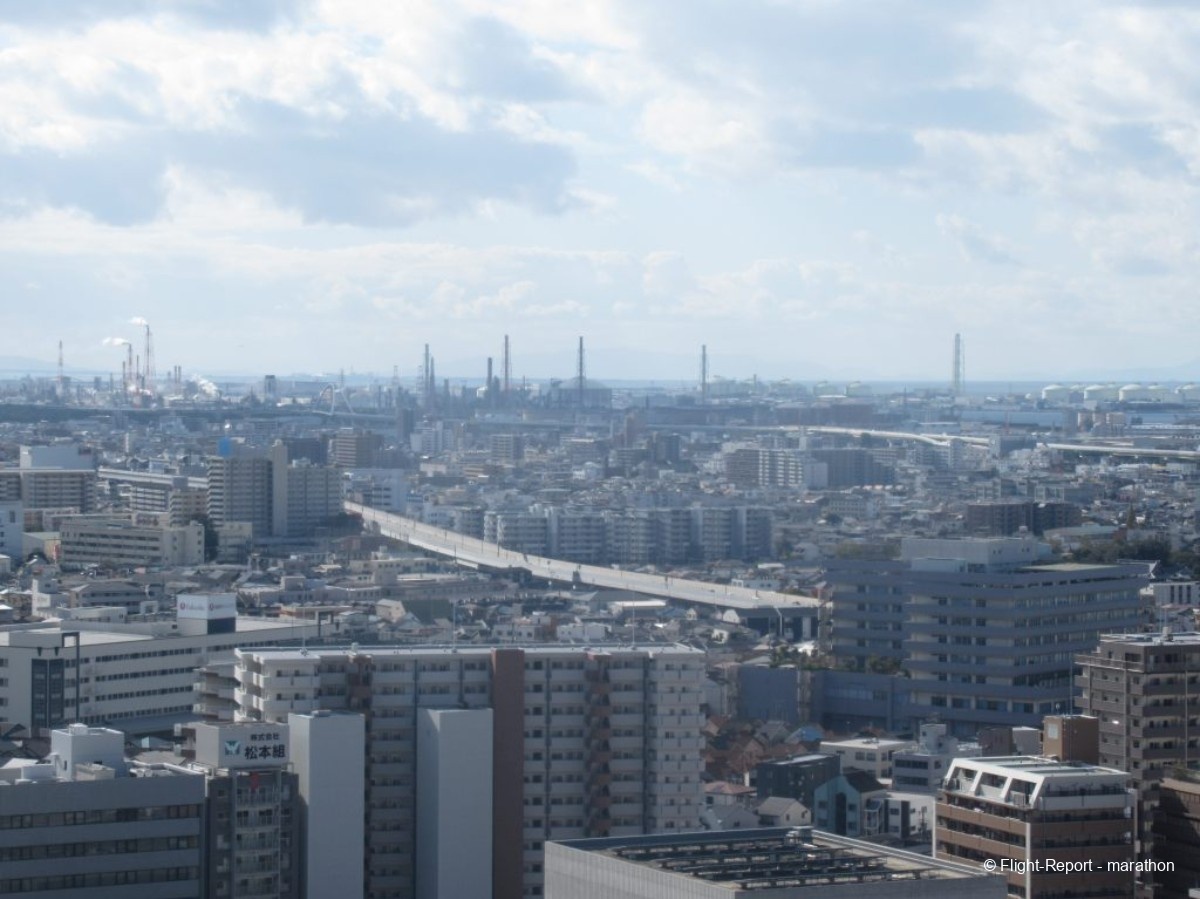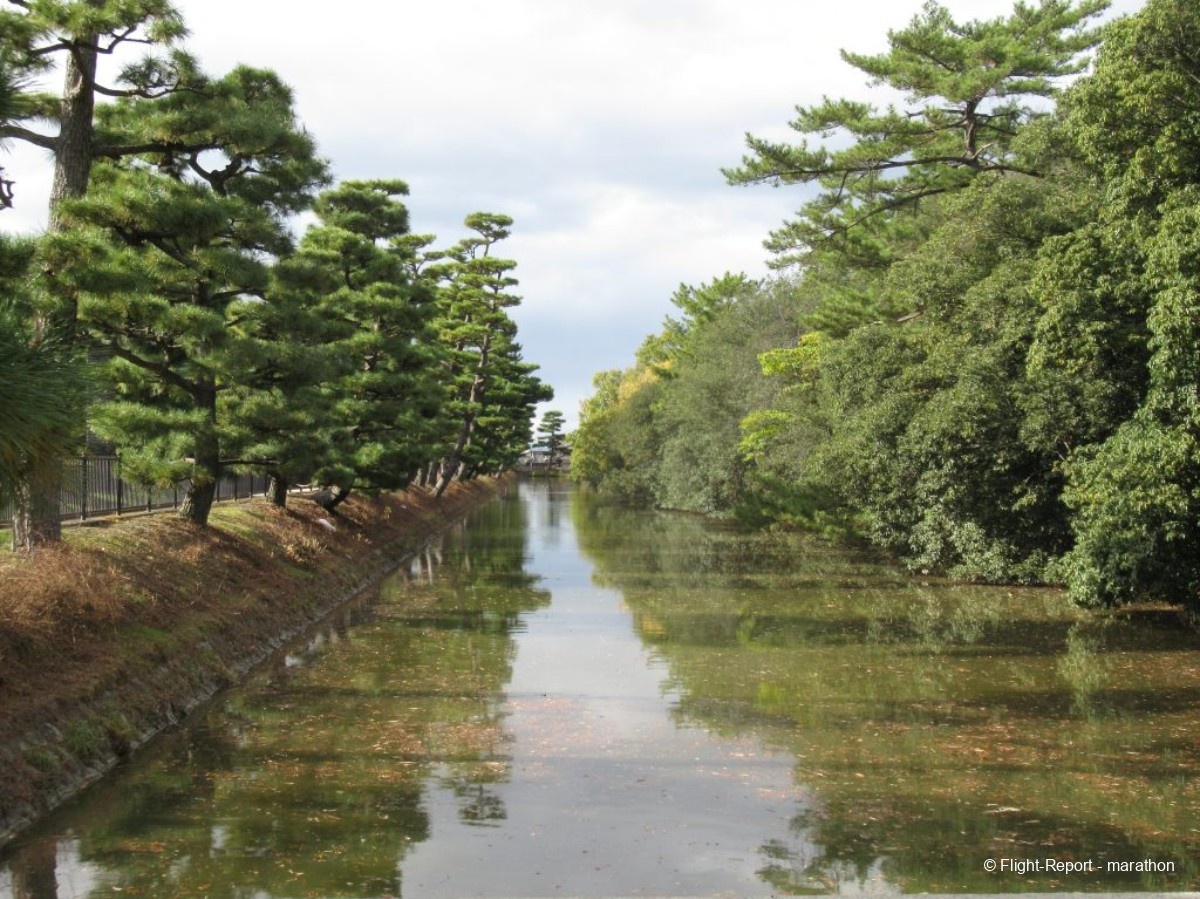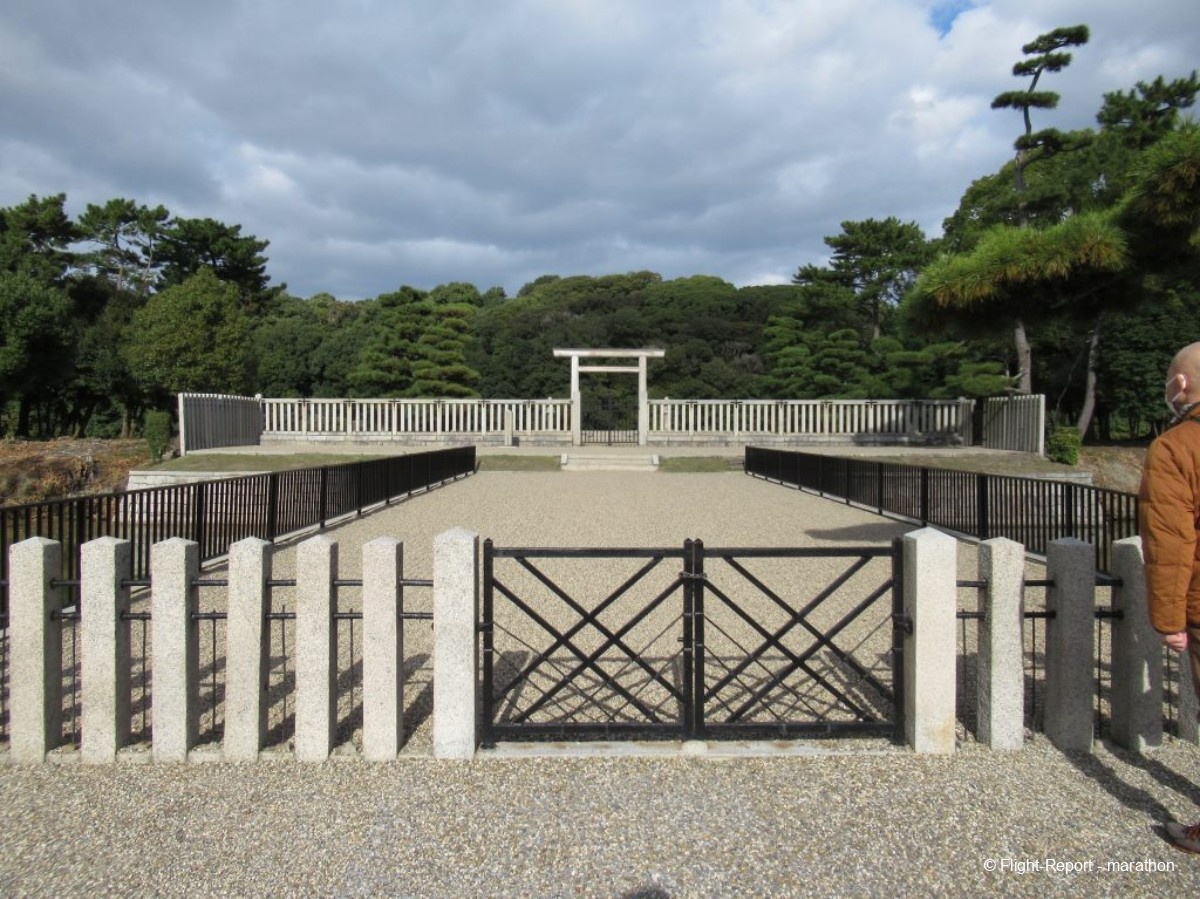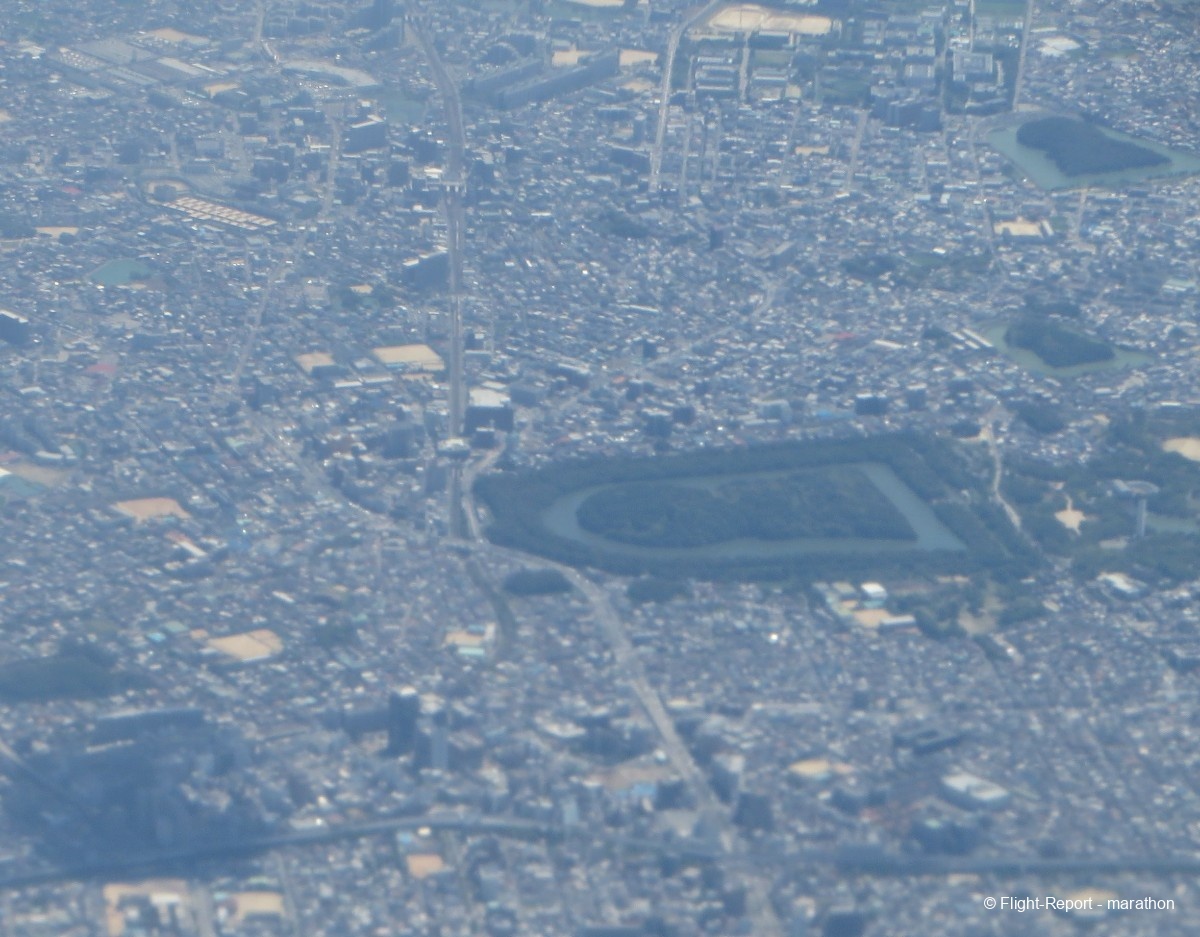Introduction
This report is the first segment of the long journey back to Paris, after three stops in Hong Kong and mainland China, and then in Japan.
For more details on the structure of this journey, see the introduction of the first FR of this series.
Enchainement de vols
- 1
- 2
- 3CX507 - Economy - Osaka → Hong Kong- Boeing 777-300
- 4CX261 - Economique - Hong Kong → Paris - Airbus A350-900
Reaching KIX by car
Train, bus, friends' car: I’ve had the opportunity to use each of these means of transport to get to KIX. This time, it was the car of the friends who hosted us in Osaka.
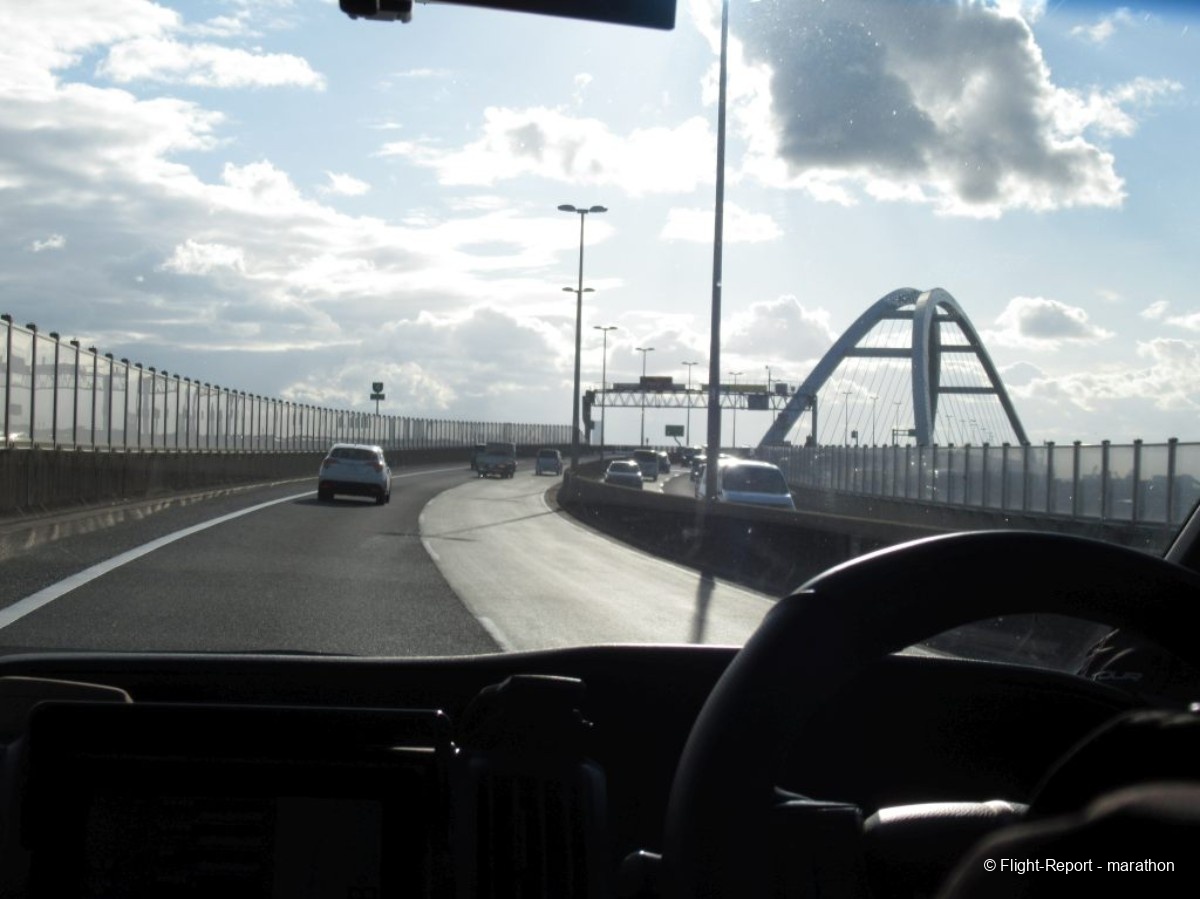
This is the combined road and rail bridge
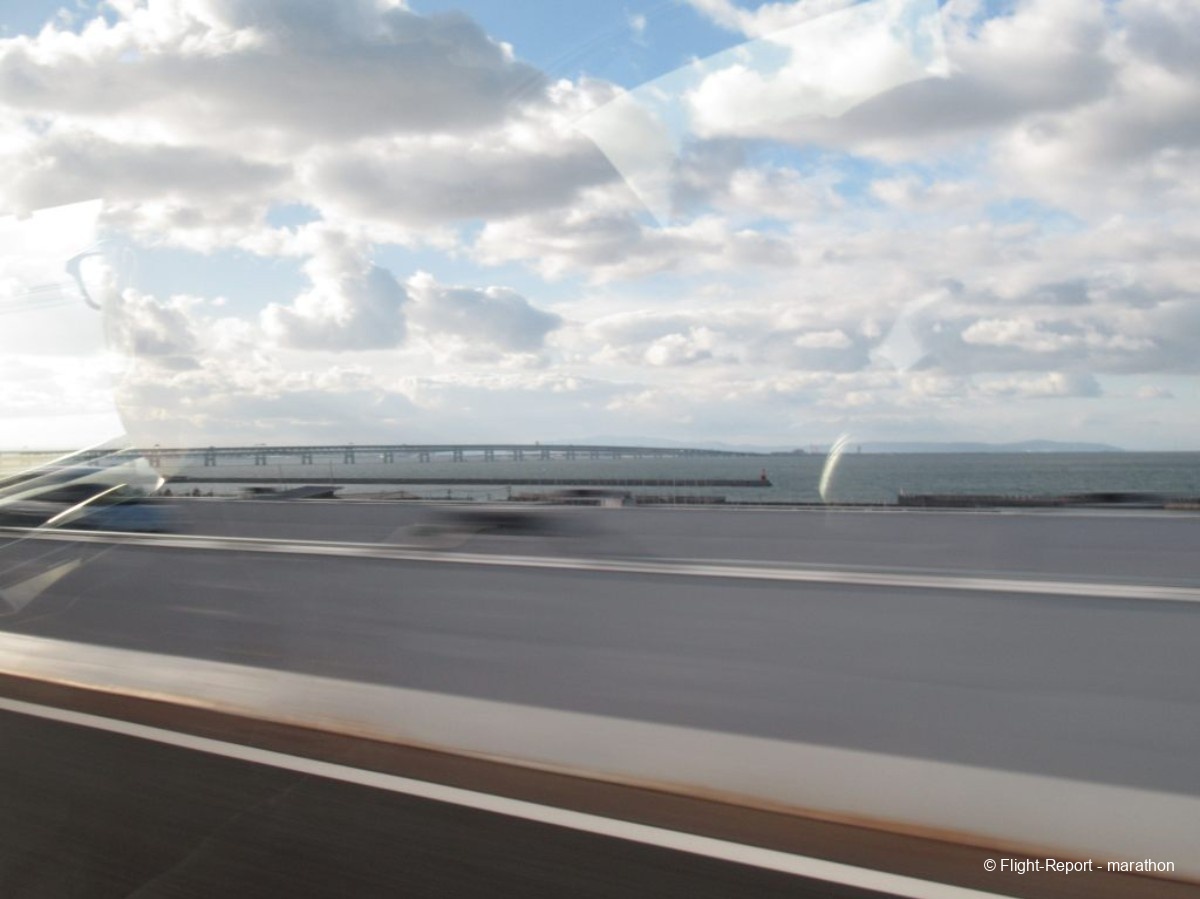
This sign specifies that parking is prohibited, except in the event of a vehicle breakdown, which was the case there.
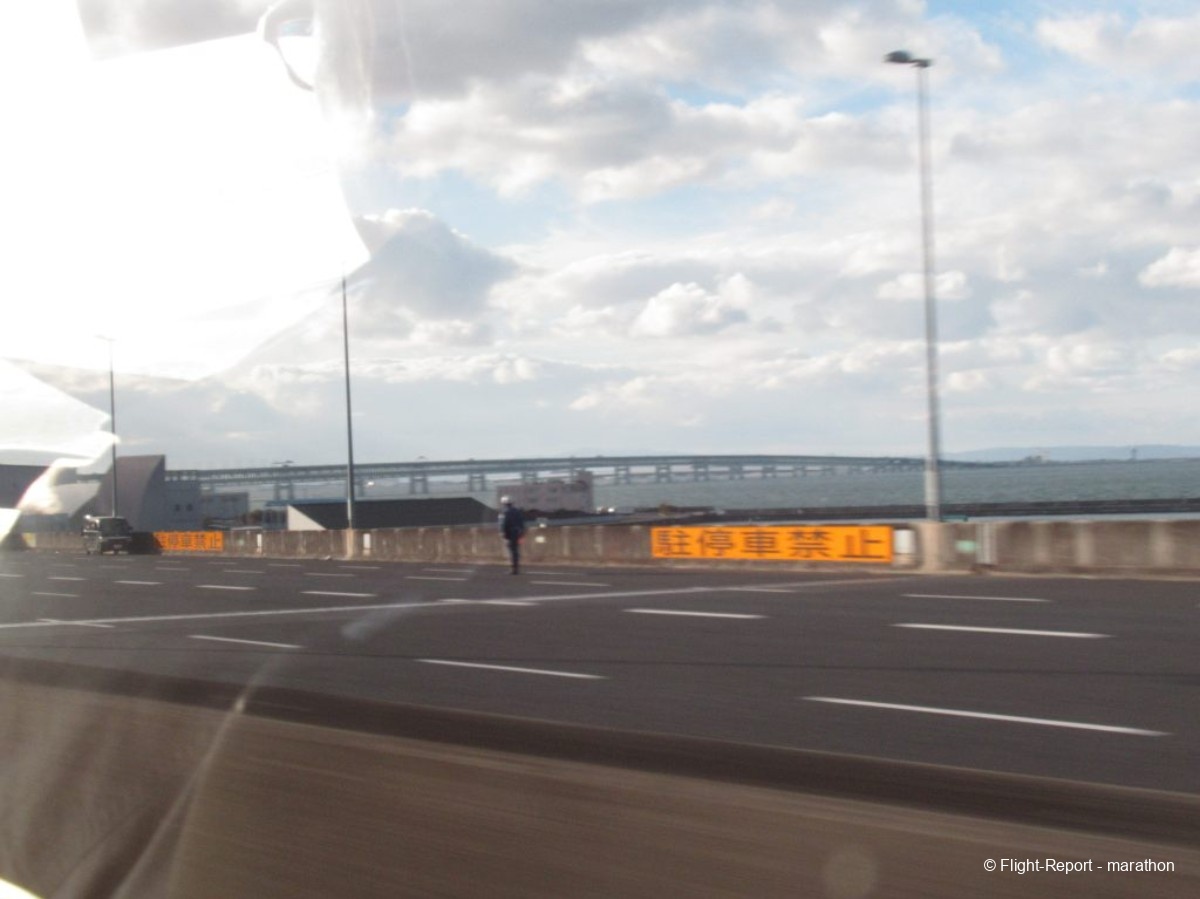
The Japanese use bicycles a lot for local trips and were shocked to discover – too late – that no bike lane had been planned for this bridge. It would have been of little use to passengers (apart from a few rare cycle tourists), but a number of airport staff would have used it.
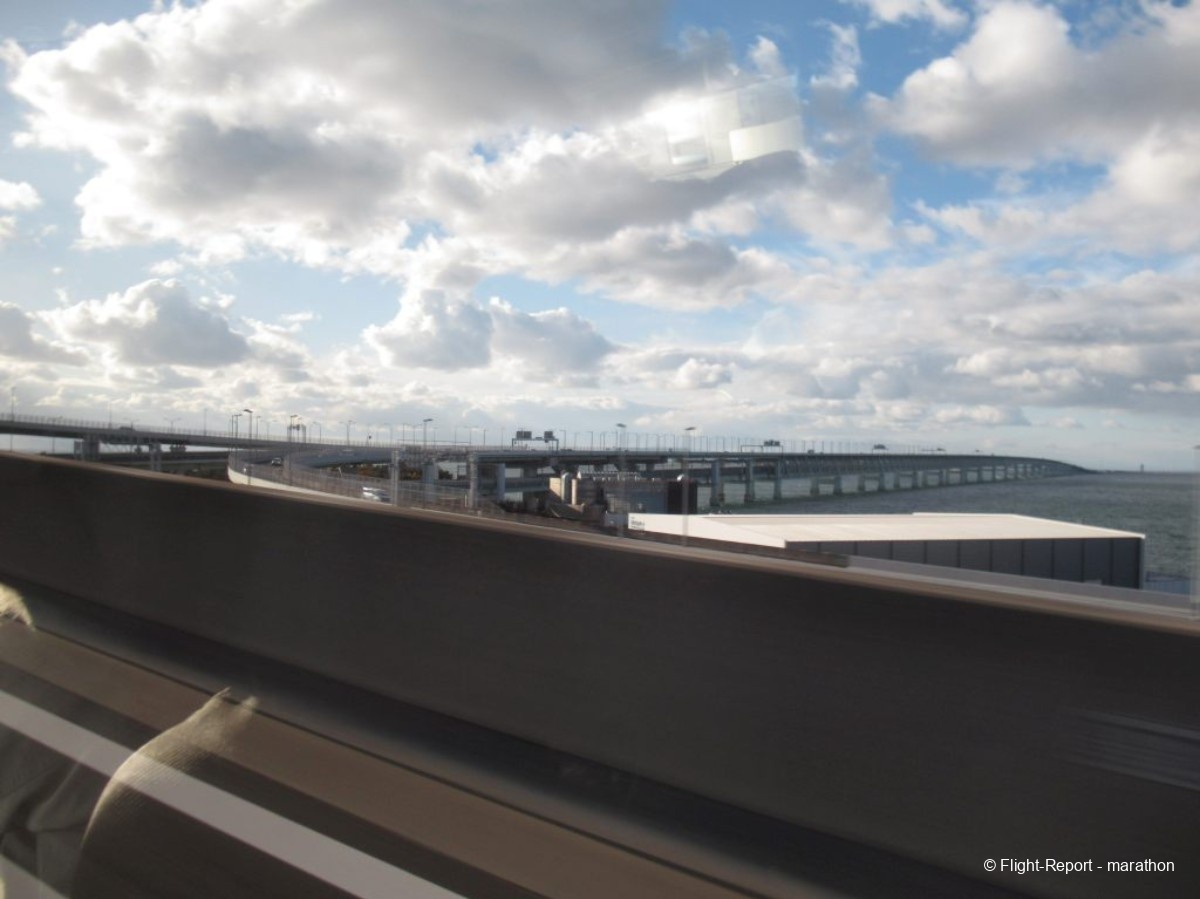
A China Airlines aircraft returns to Taiwan
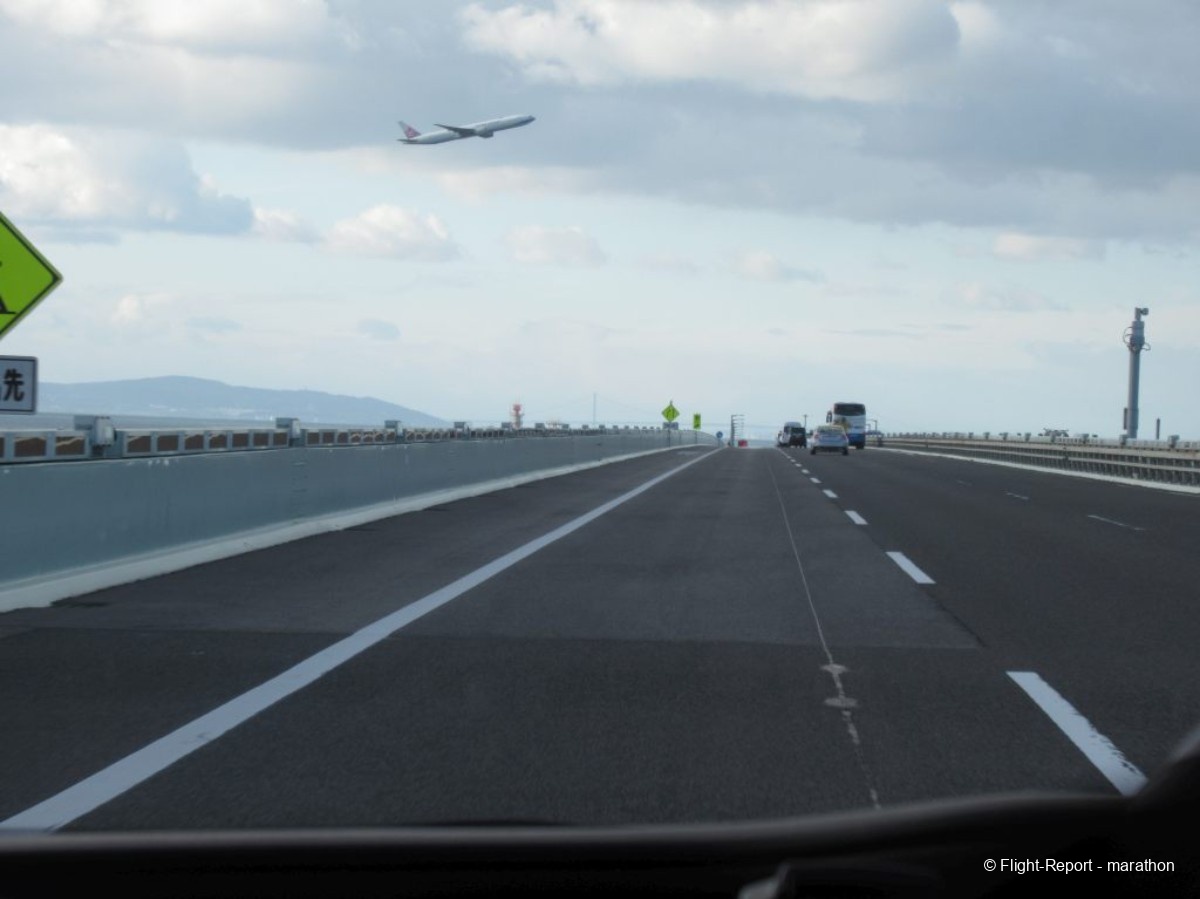
KIX landside
Our friends dropped us off at this kiss-and-drive spot, whose minimal design and usage illustrate the marginal share of car drop-offs at KIX.
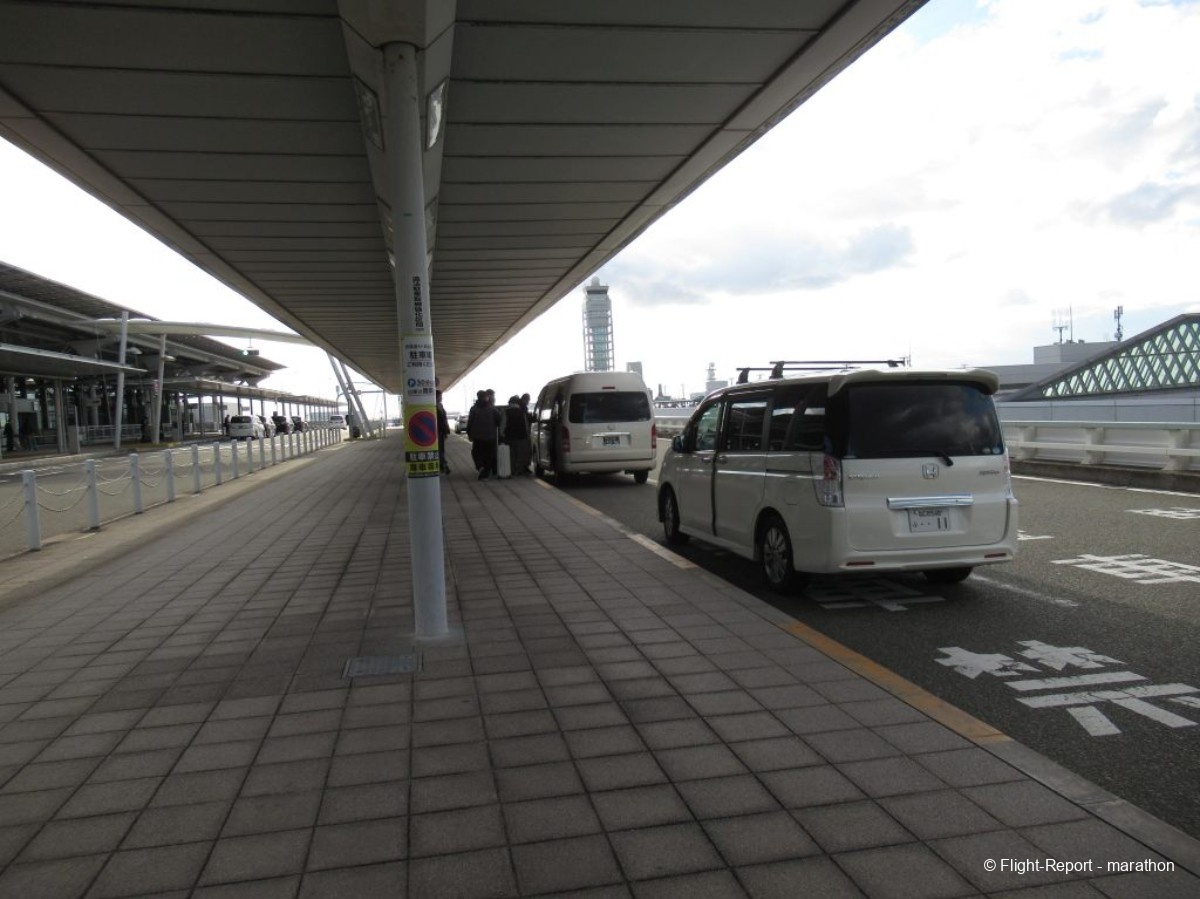
The entrance to Terminal 1 is just in front.

The Departures level towers over the Arrivals level
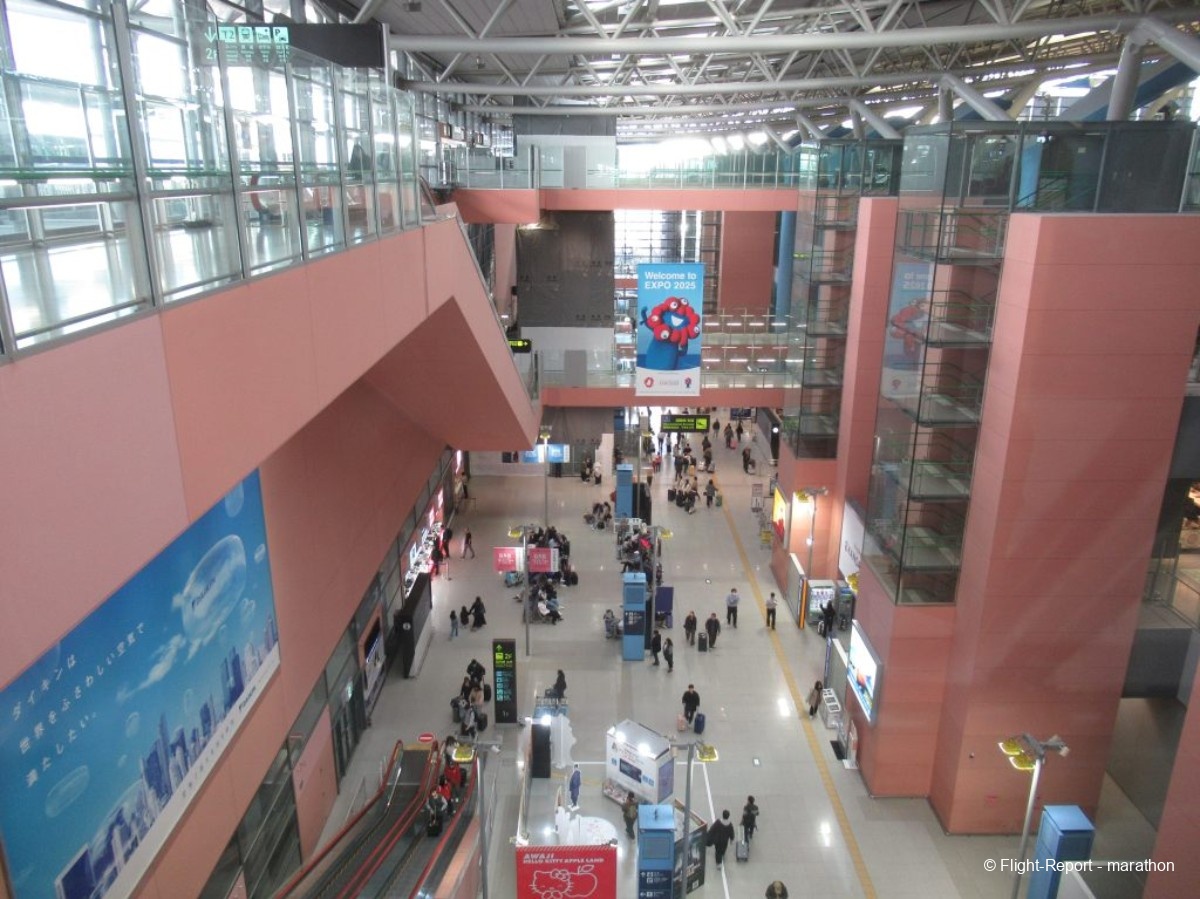
It was just after 3:30 PM, so we had plenty of time; the connection in HKG was going to be equally comfortable.
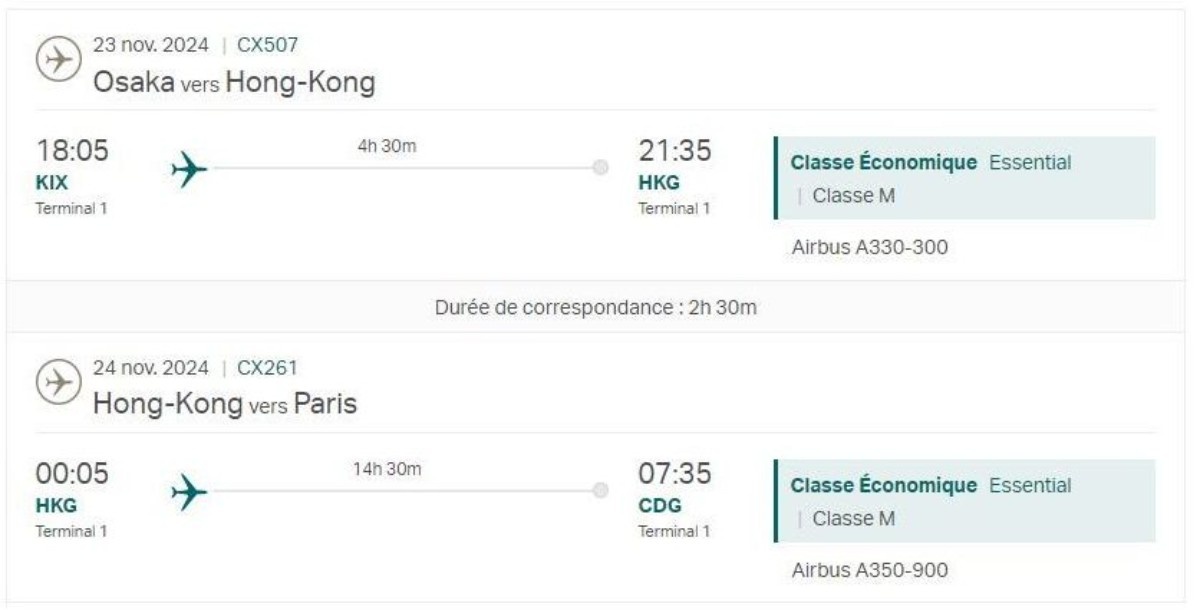
I had received this piece of bad news a few days before: the flight had sold much better than CX had expected when I bought our tickets some ten months earlier, and CX had replaced the originally planned A330 with a 777-300, a rather rare model: only 60 have been built, out of the 1,463 passenger B777s built.
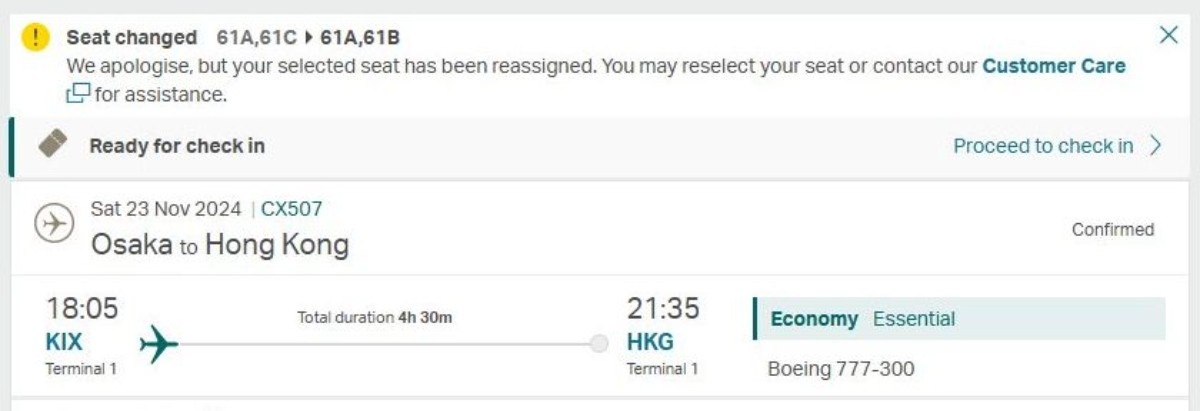
The bad news was that no matter the rarity of this particular type, 777s have a 3-4-3 layout, whereas I had booked a twin set of seats on an A330, and it was likely that there would not be any empty seat next to us.

Luggage check-in is largely do-it-yourself, with checked luggage tags obtained at these self-service machines. You're supposed to attach them yourself to your luggage, but I barely had time to hesitate that an employee was already there to do it for me.
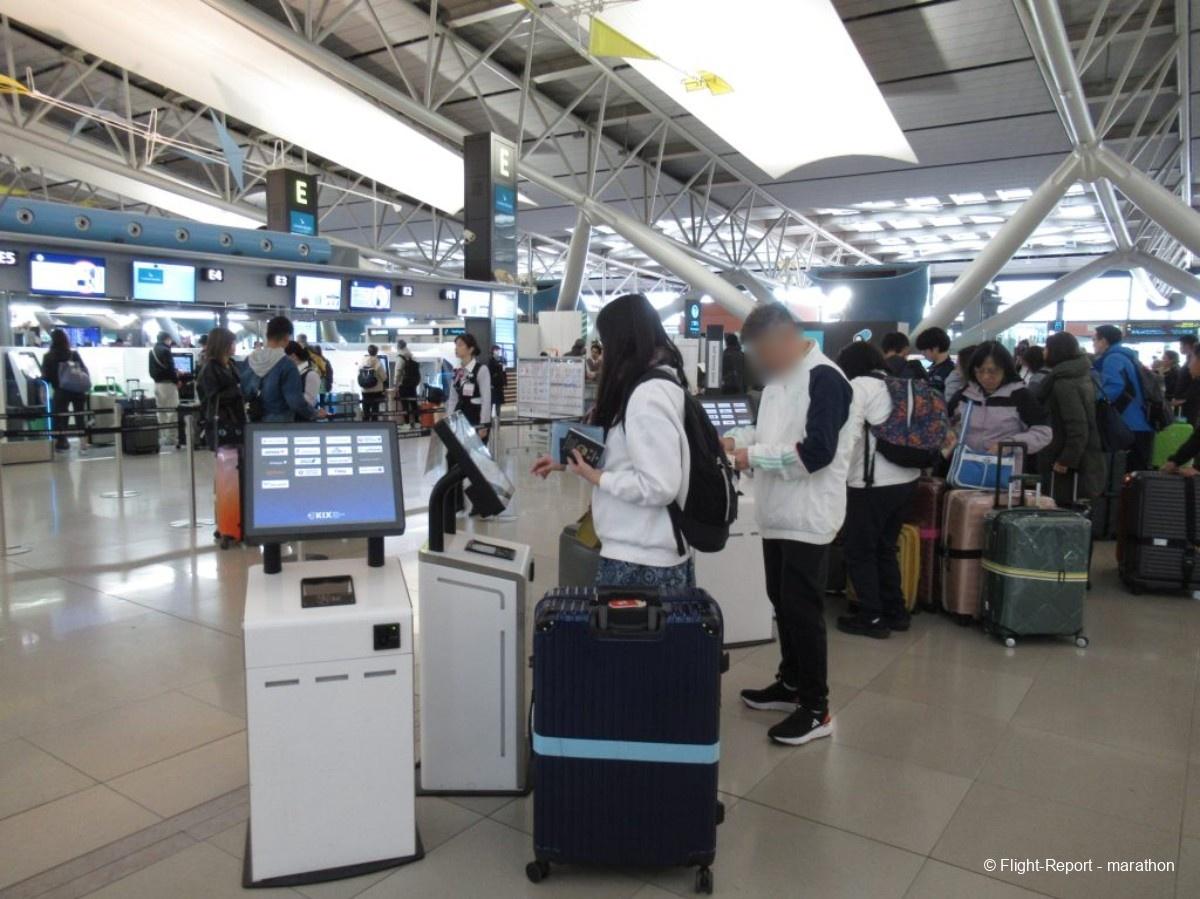
We were issued at the same time with thin paper BPs, providing a redundancy with the QR codes received the day before at the OLCI.
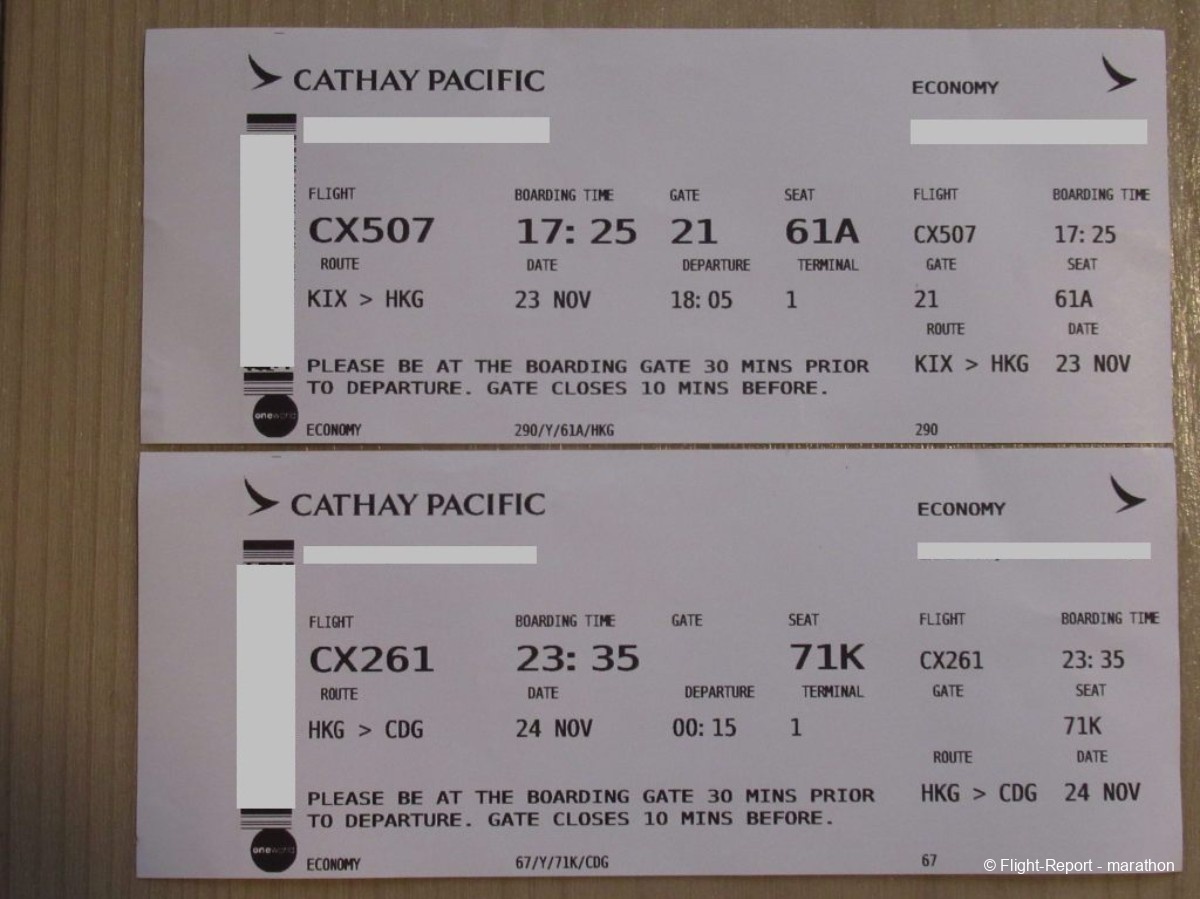
All we had to do next was dropping off our checked luggage.
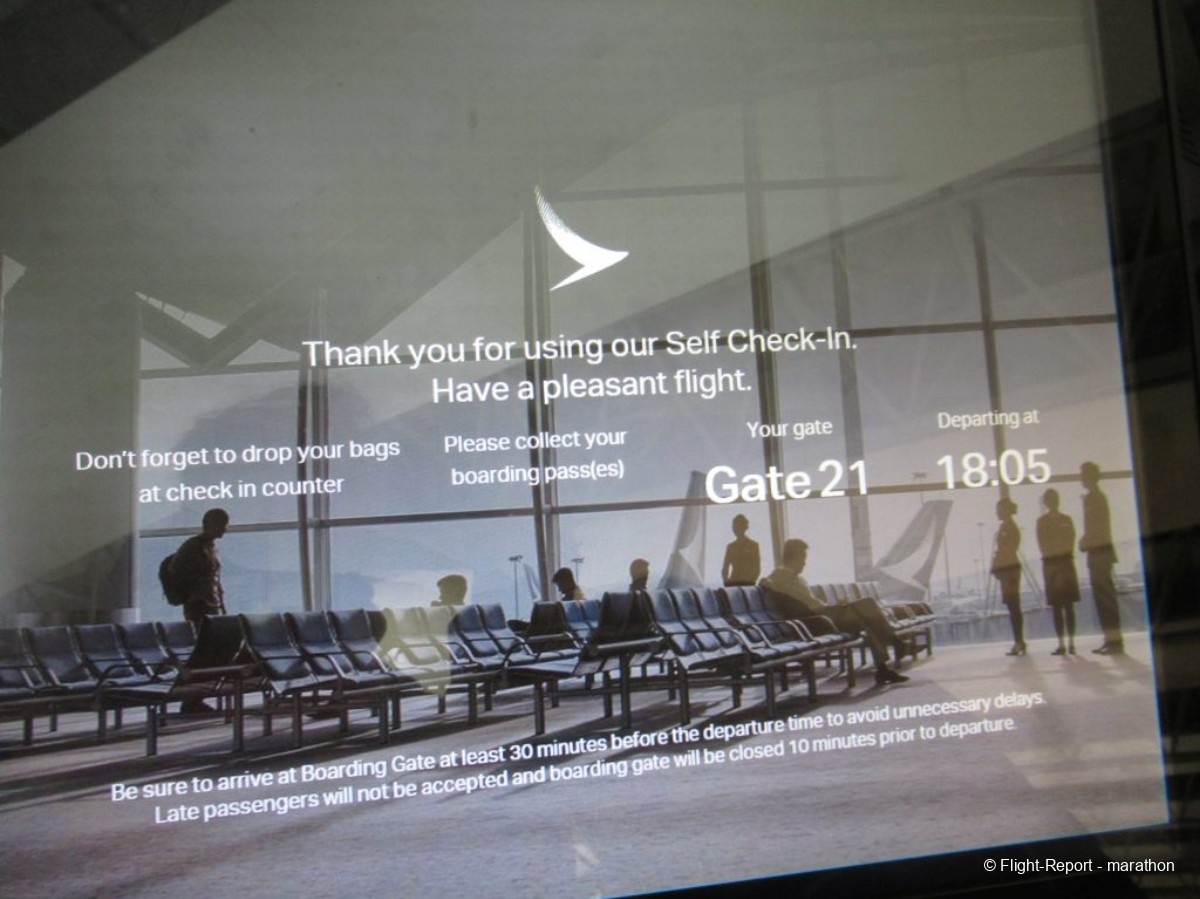
The self-serve machine reminds us of the journey
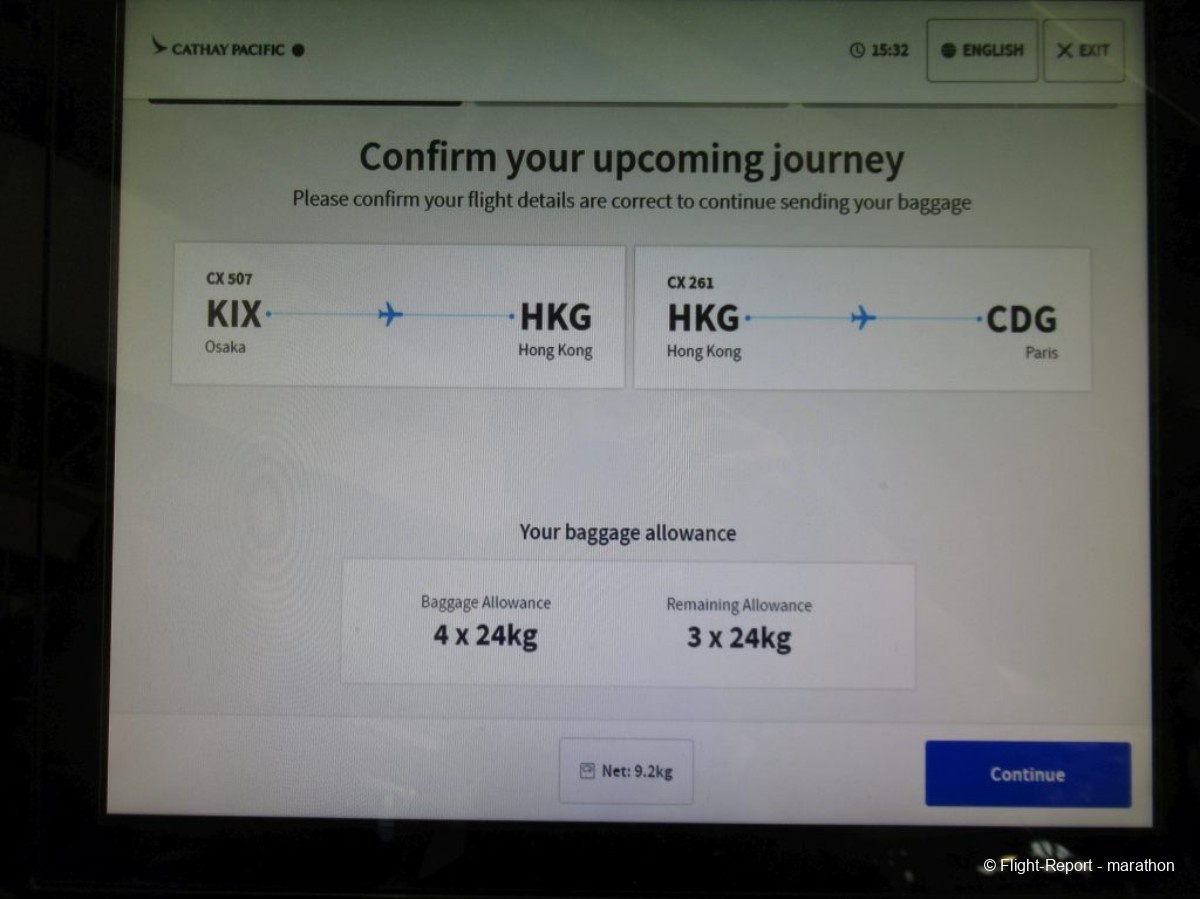
And they remind us that with a total weight of just over 20 kg, we are really very far from the 2 x 23 kg allowance included in our fare.
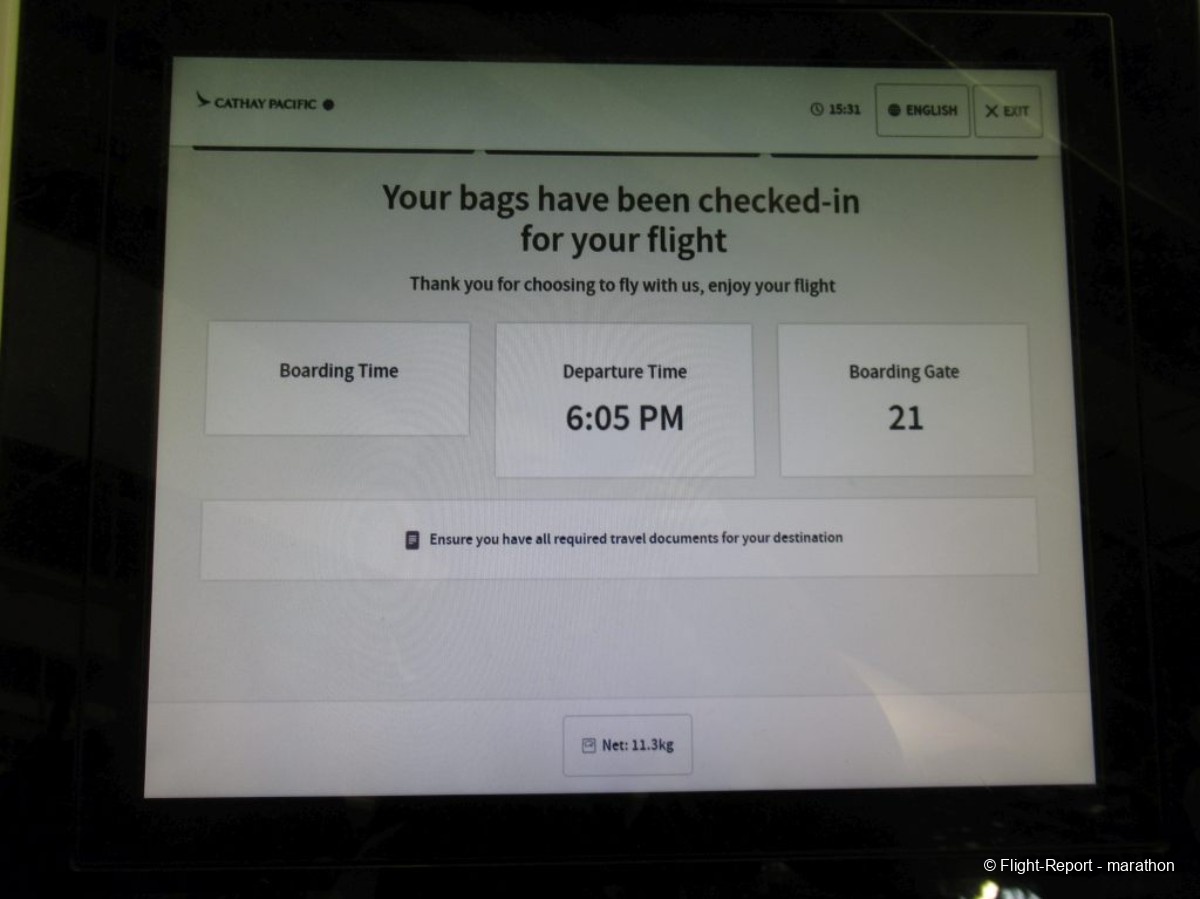
In short, our second piece of checked luggage also set off into the bowels of the airport. All inclusive, checking -in our luggage had take barely more than ten minutes.
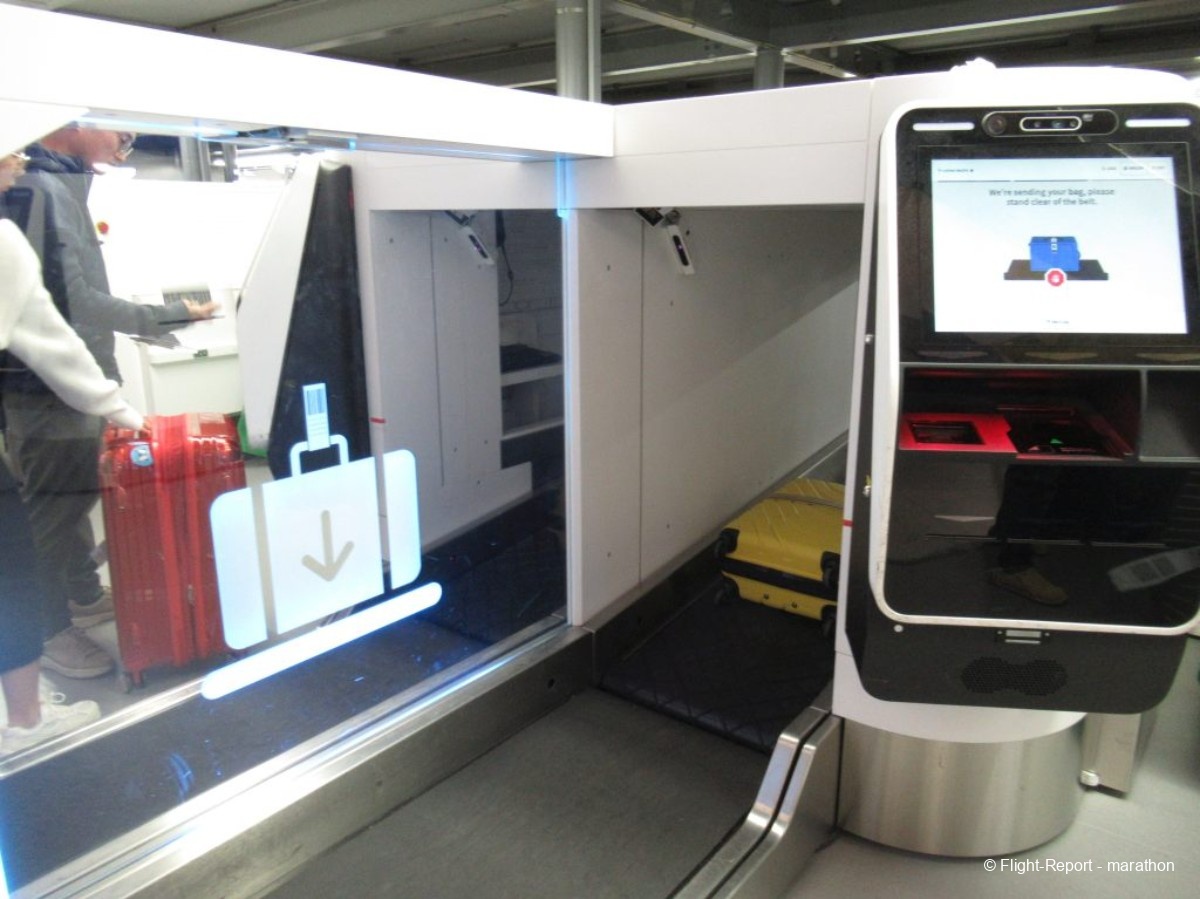
KIX makes extensive use of facial recognition, used both for screening passengers for access to the PIF and for exit immigration control: there is no longer an exit stamp in the passport.
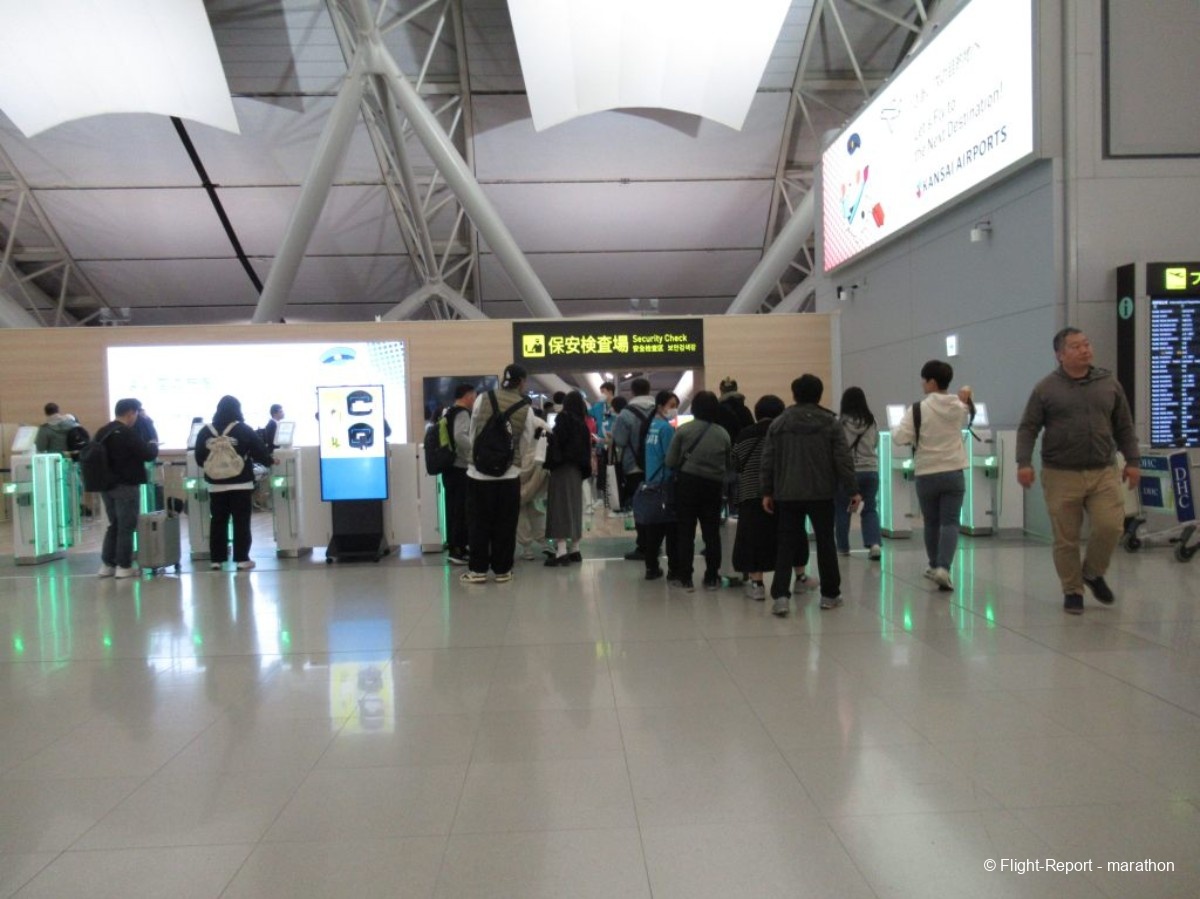
KIX airside and plane spotting
Going through the duty free area

The lines for paying for perfume and other cosmetic purchases were as long as long as the last time my wife bought stuff there in the pre-Covid era.
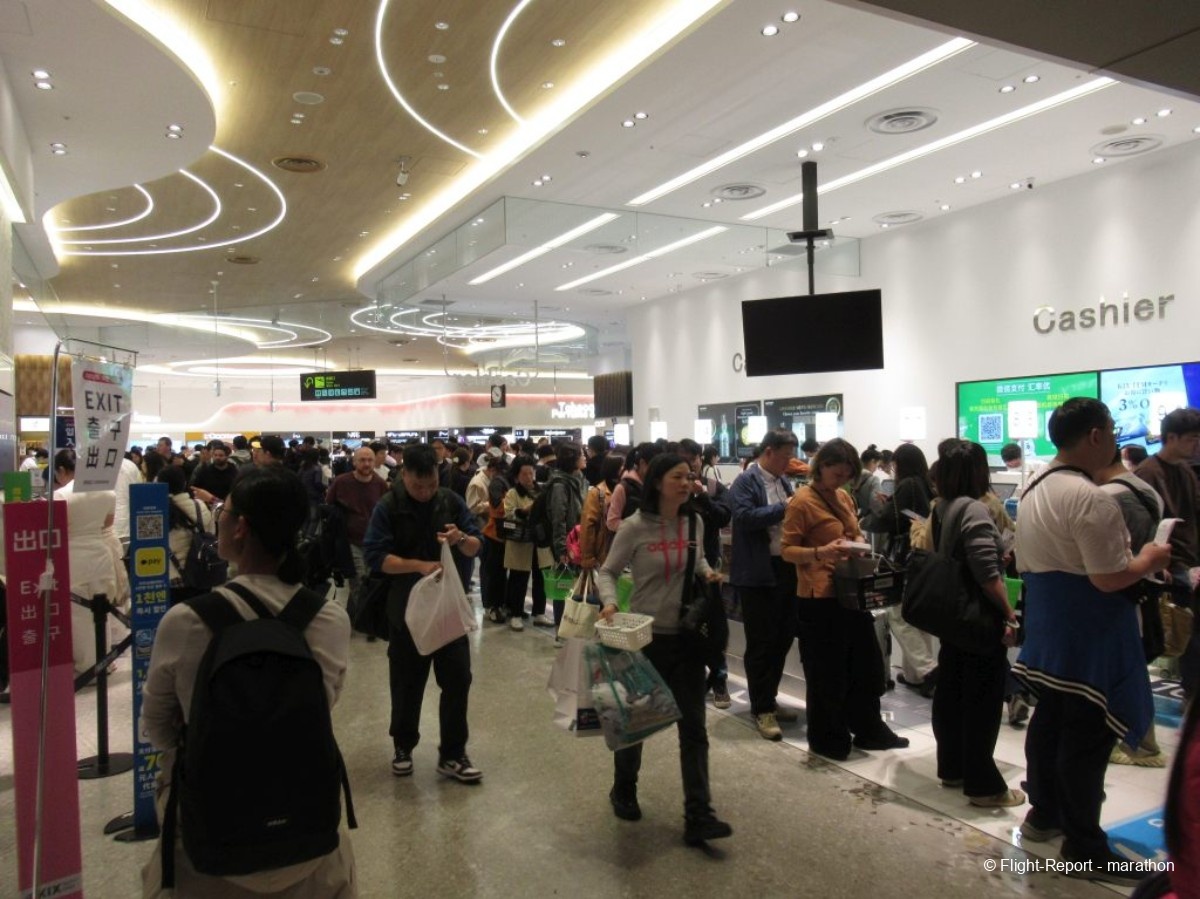
Some plane spotting: Juneyao Air A321ceo
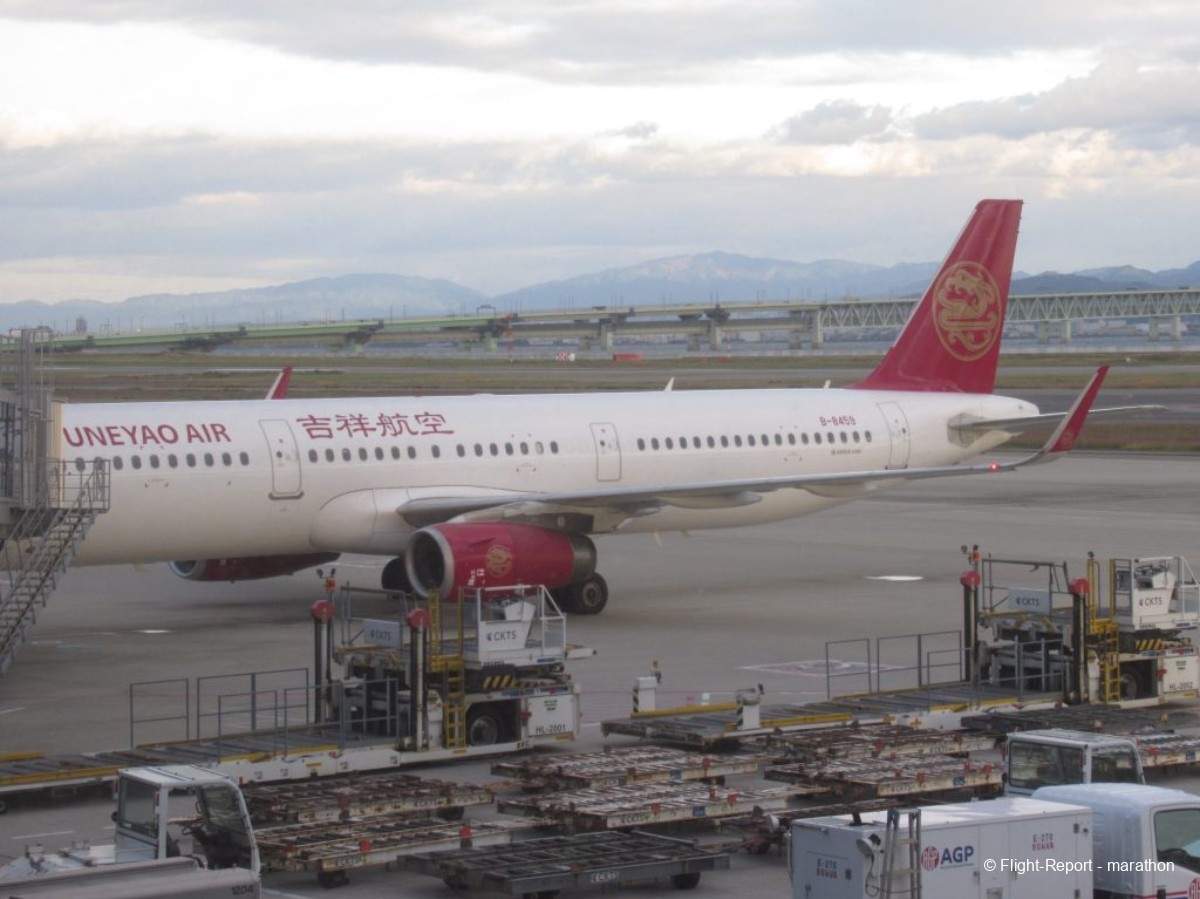
B-323A, a China Eastern Airlines A320neo, taking off
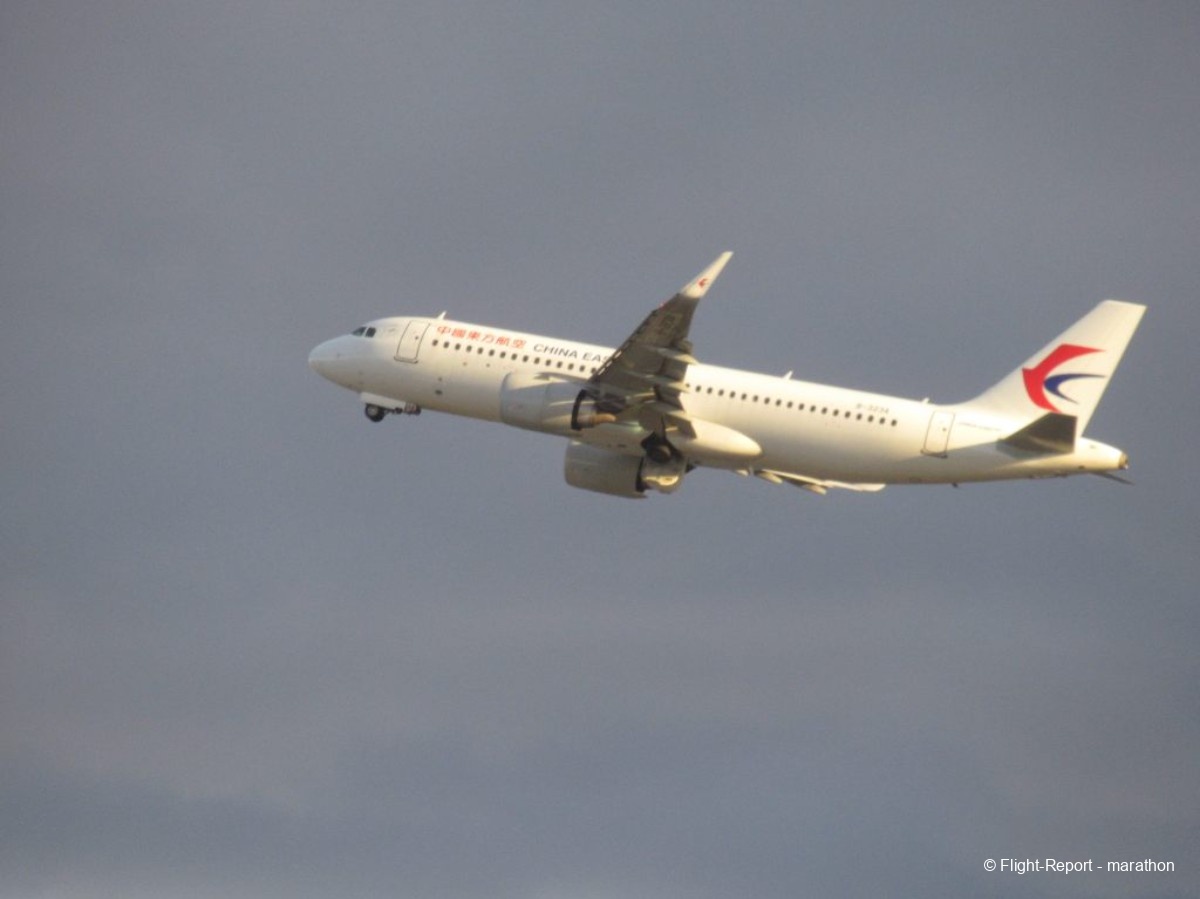
B-LHH, a Hong Kong Airlines A330-300
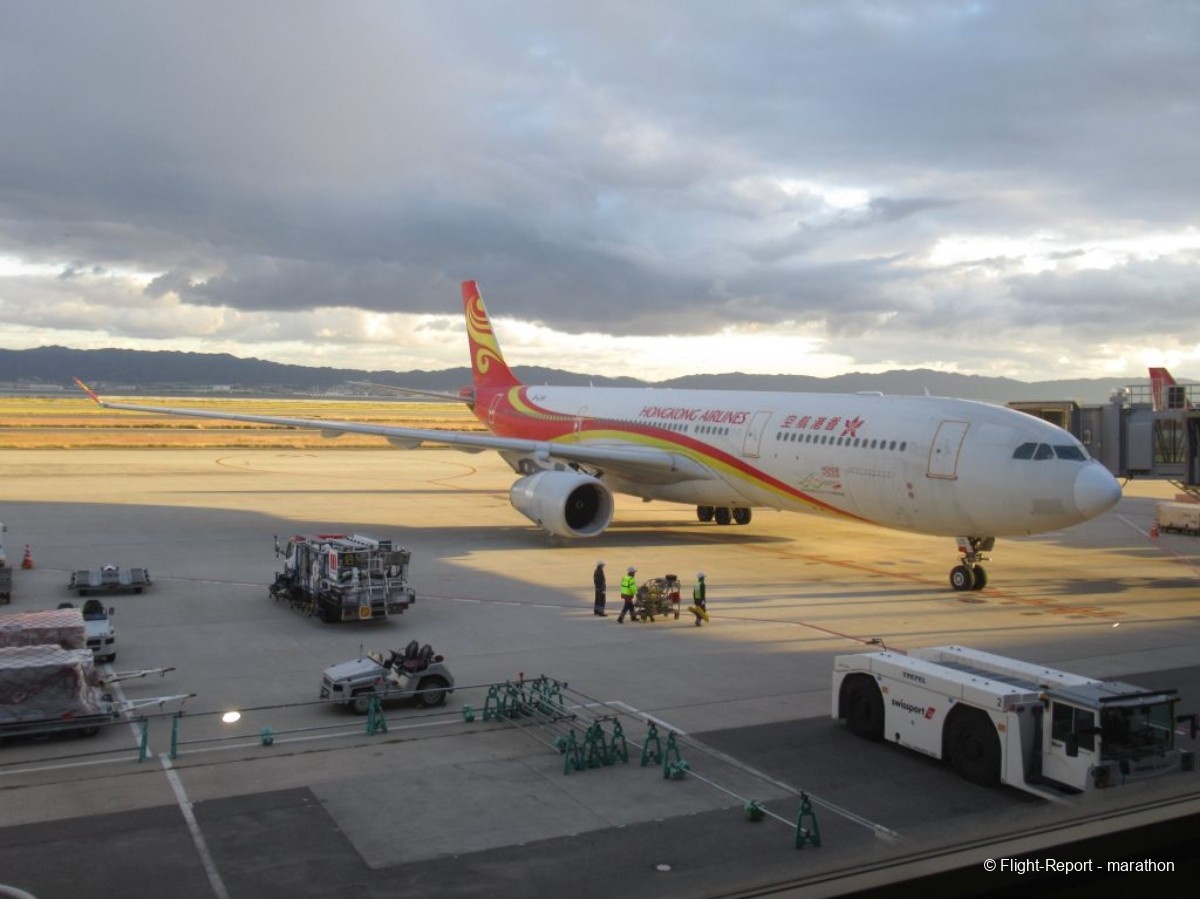
B-30D8, a Sichuan Airlines A321neo
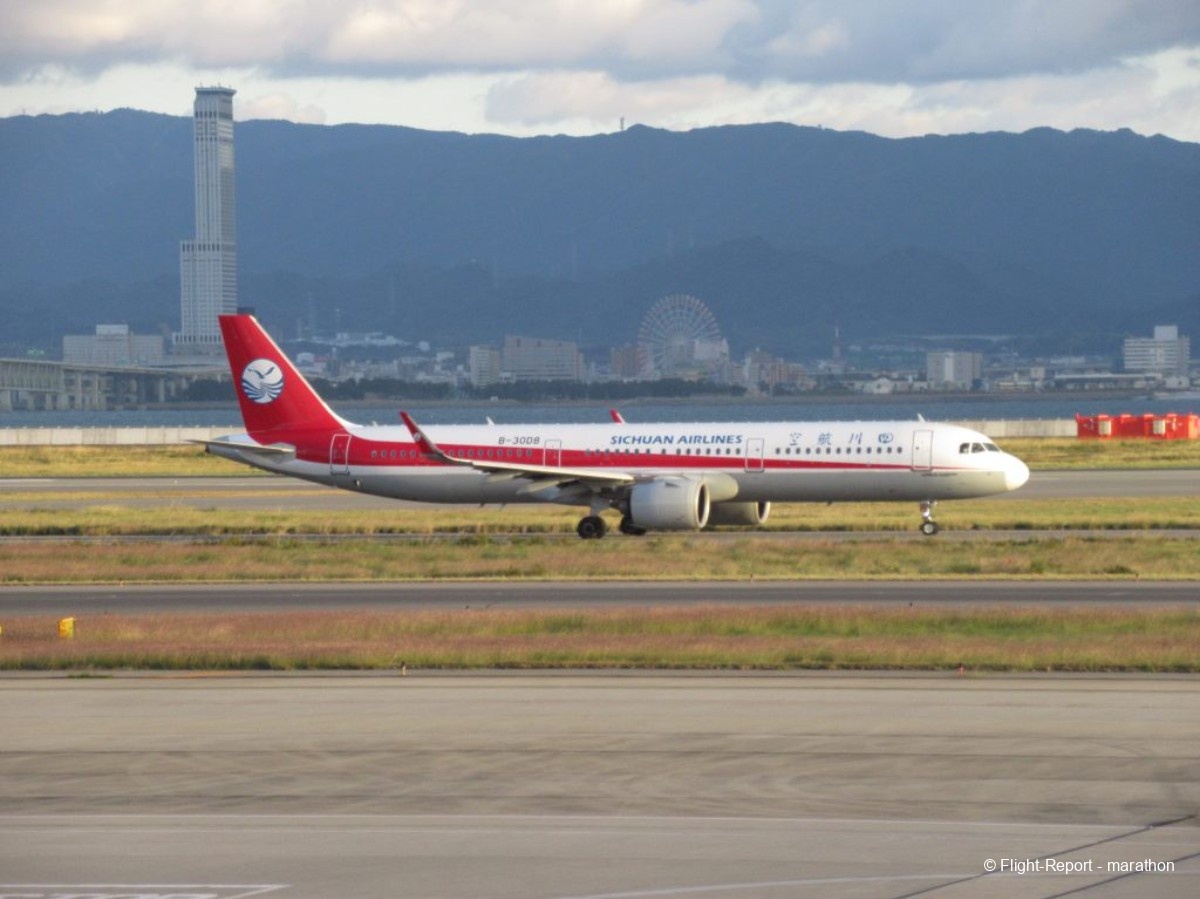
HS-TKU, a Thai Airways 777-300ER
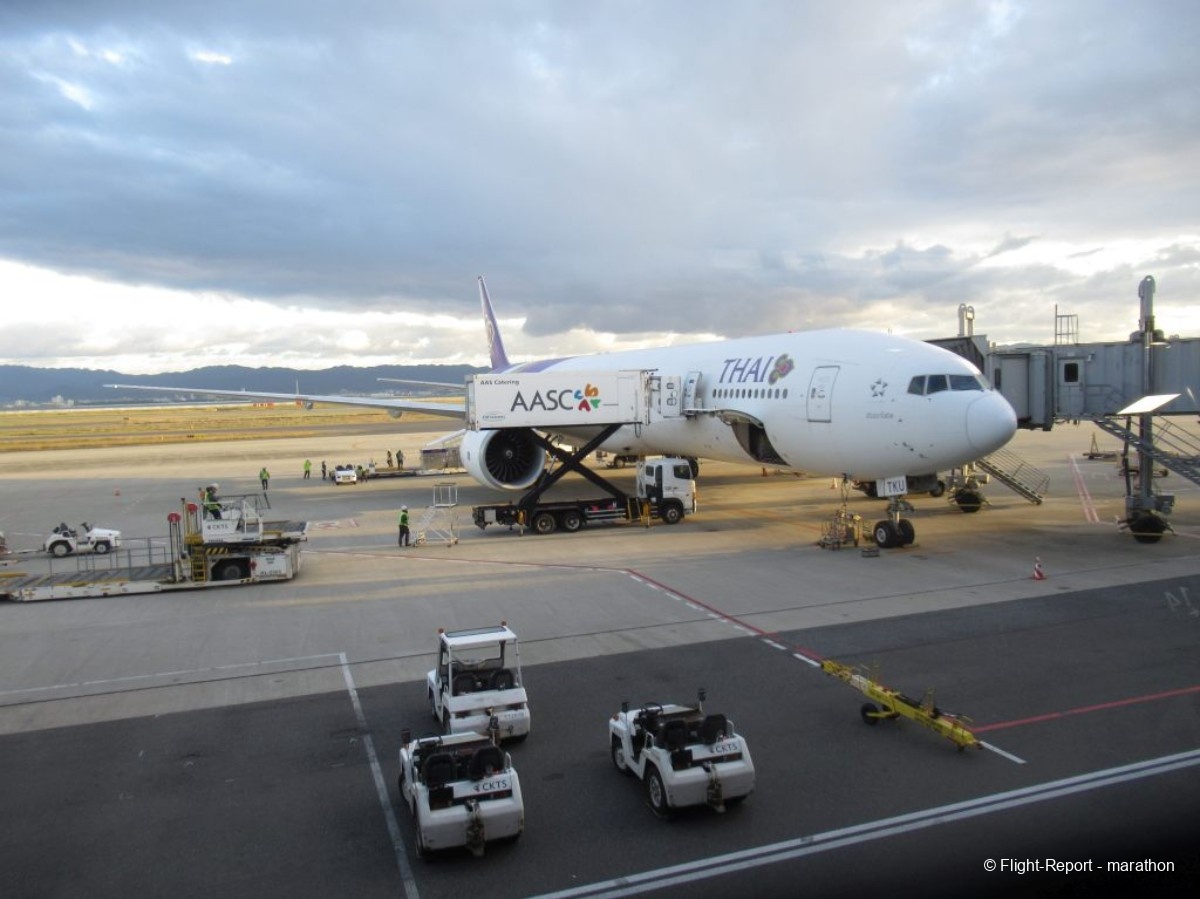
HL8329, a T'way Air 737-800
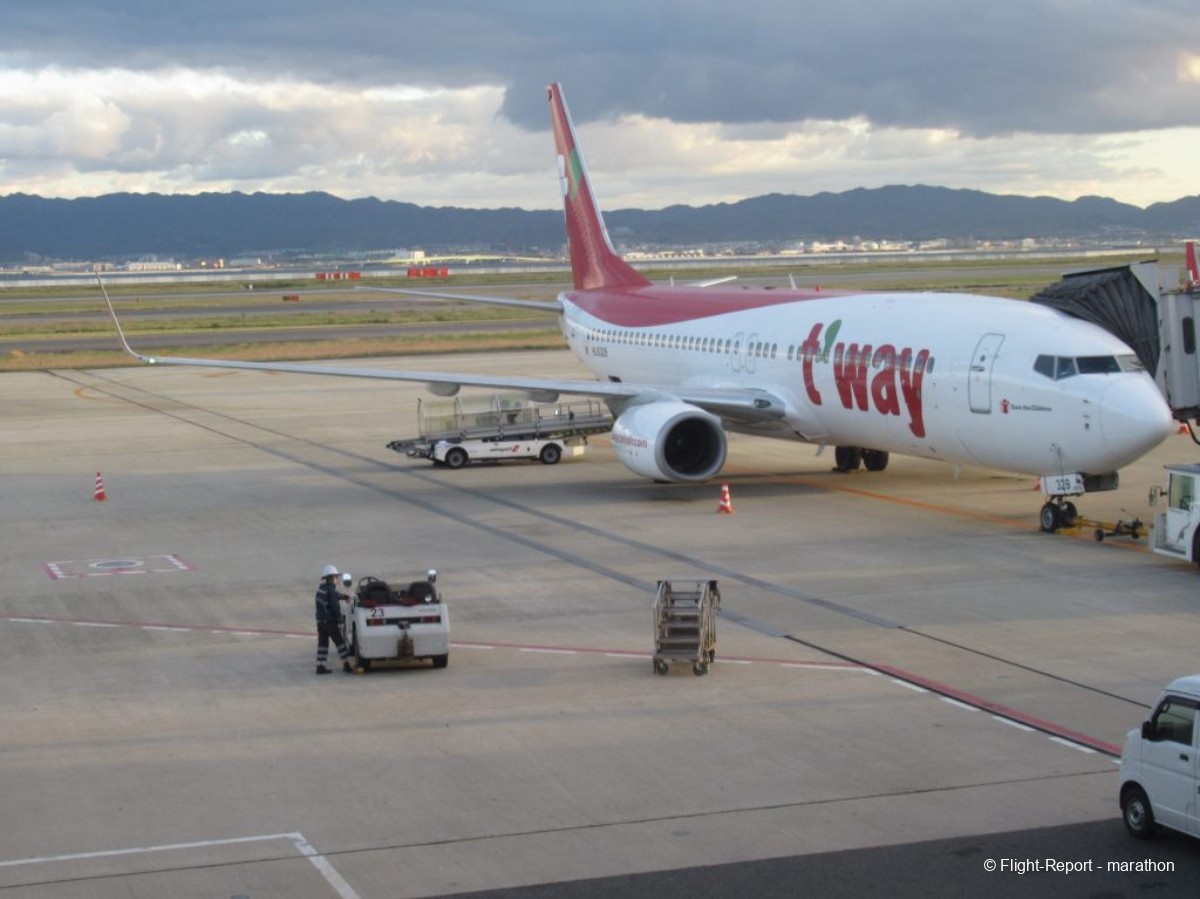
Beautiful lighting on the bridge connecting KIX to the mainland
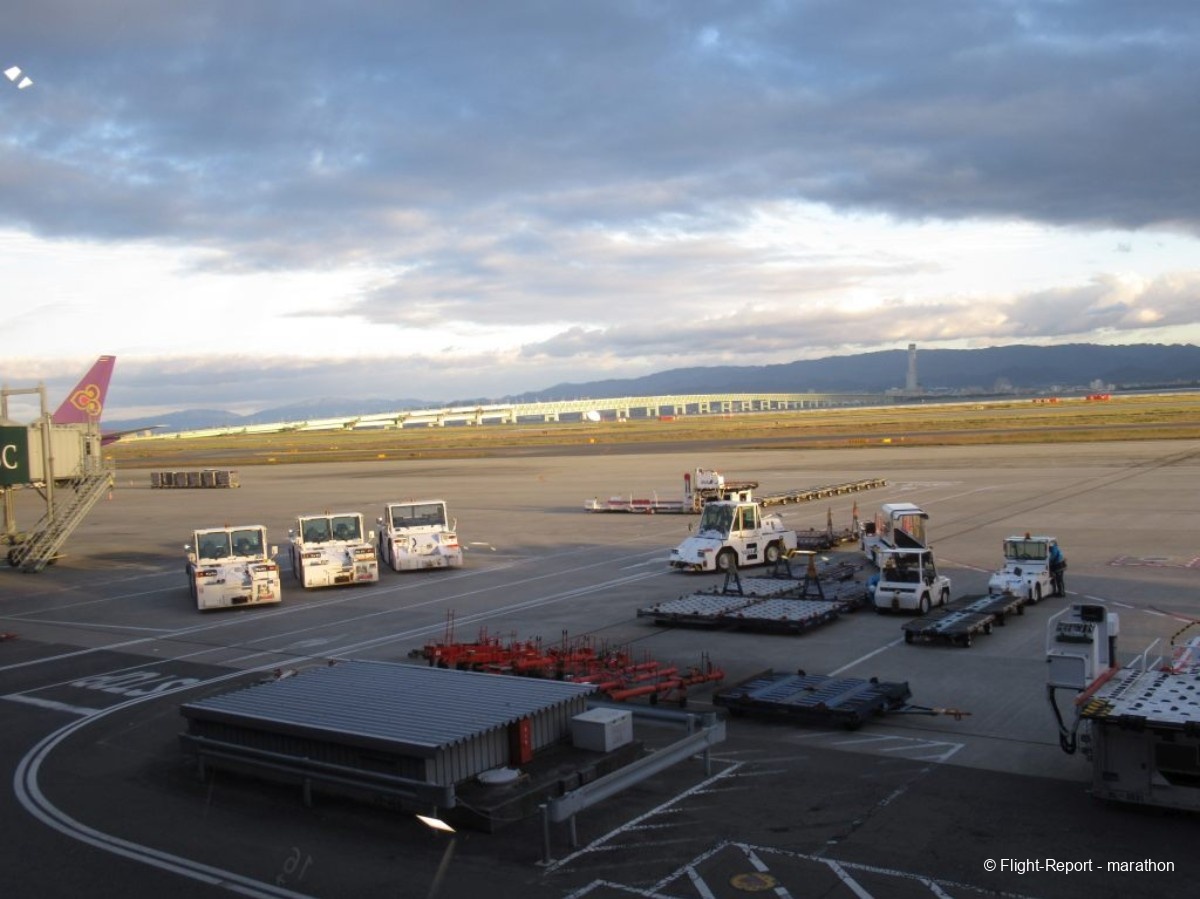
Smoking room that I did not patronize
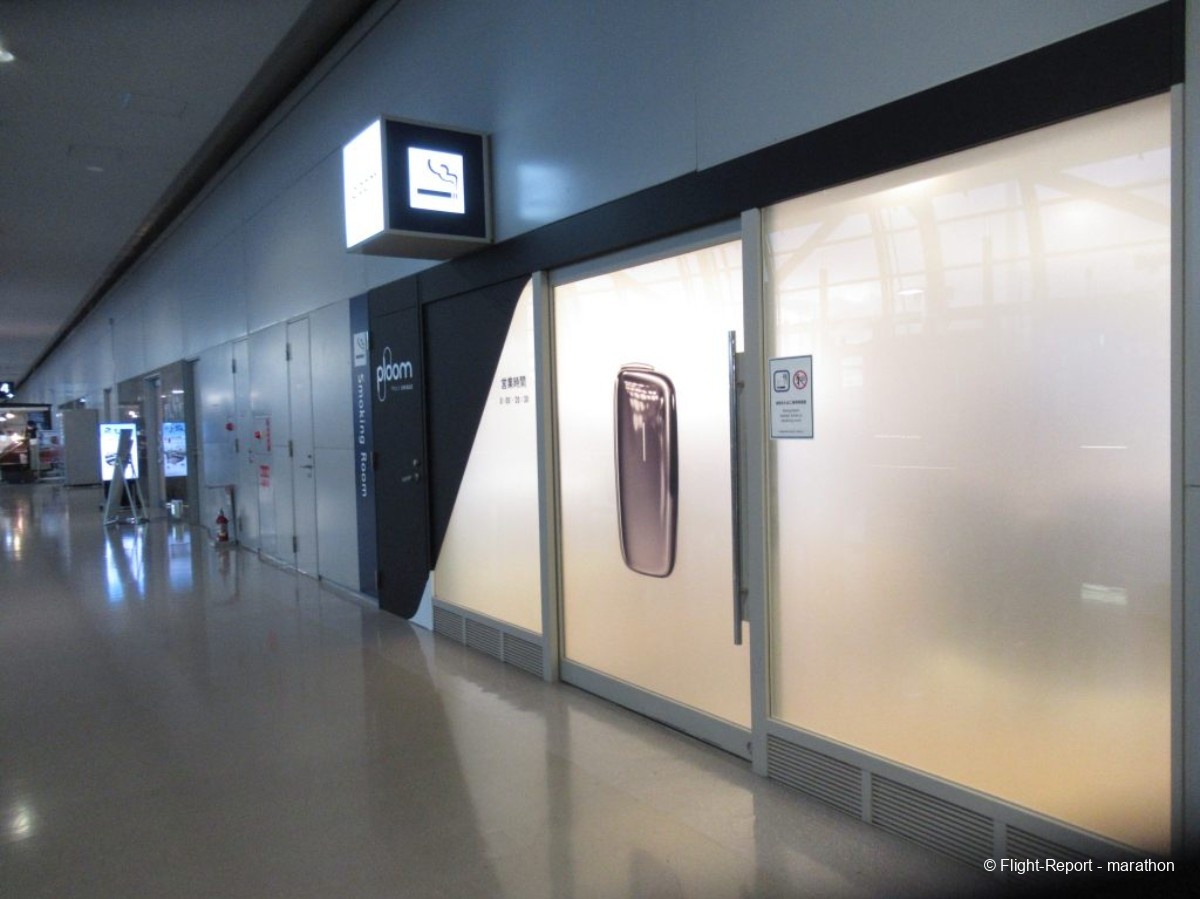
Prayer room where I didn't venture in either
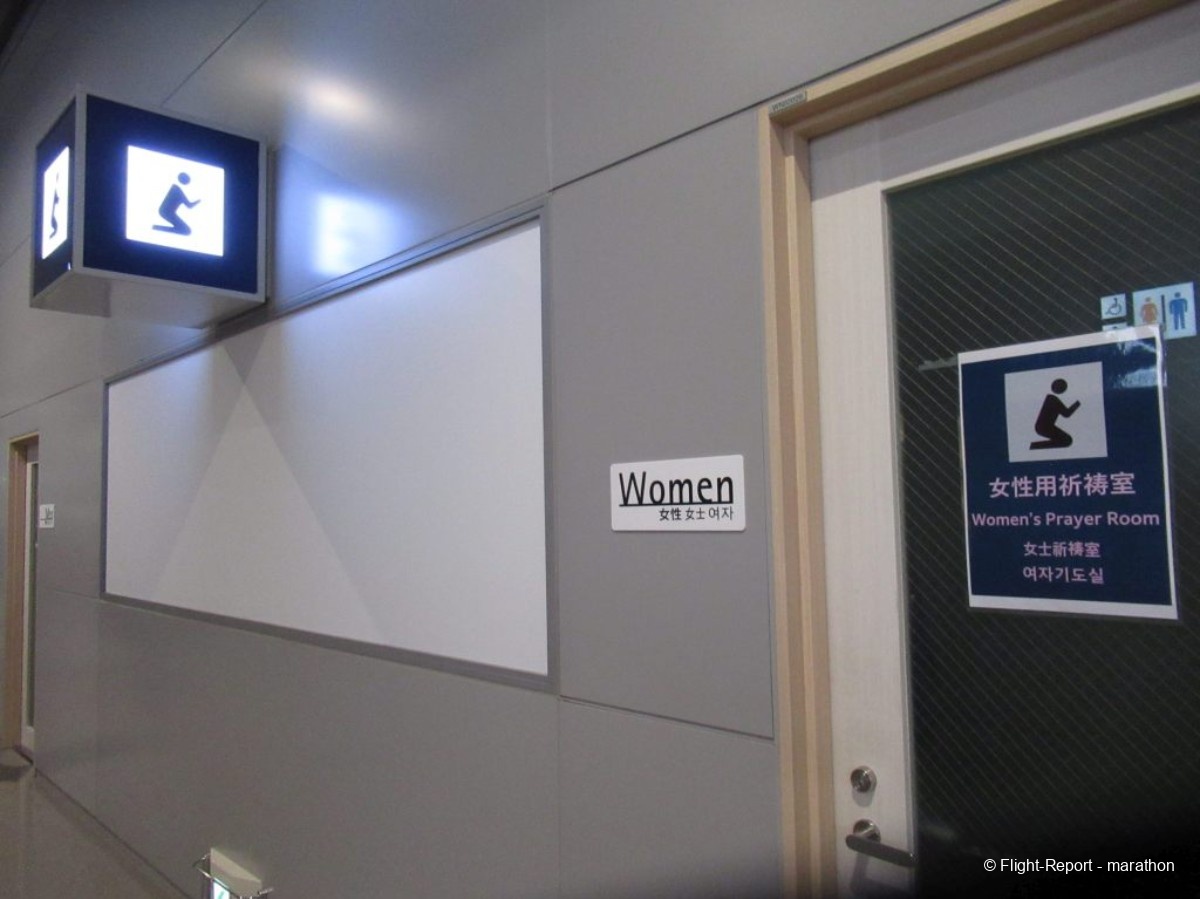
Its twin for men has a very bare aesthetic, but the Qiblah indicated on the ceiling
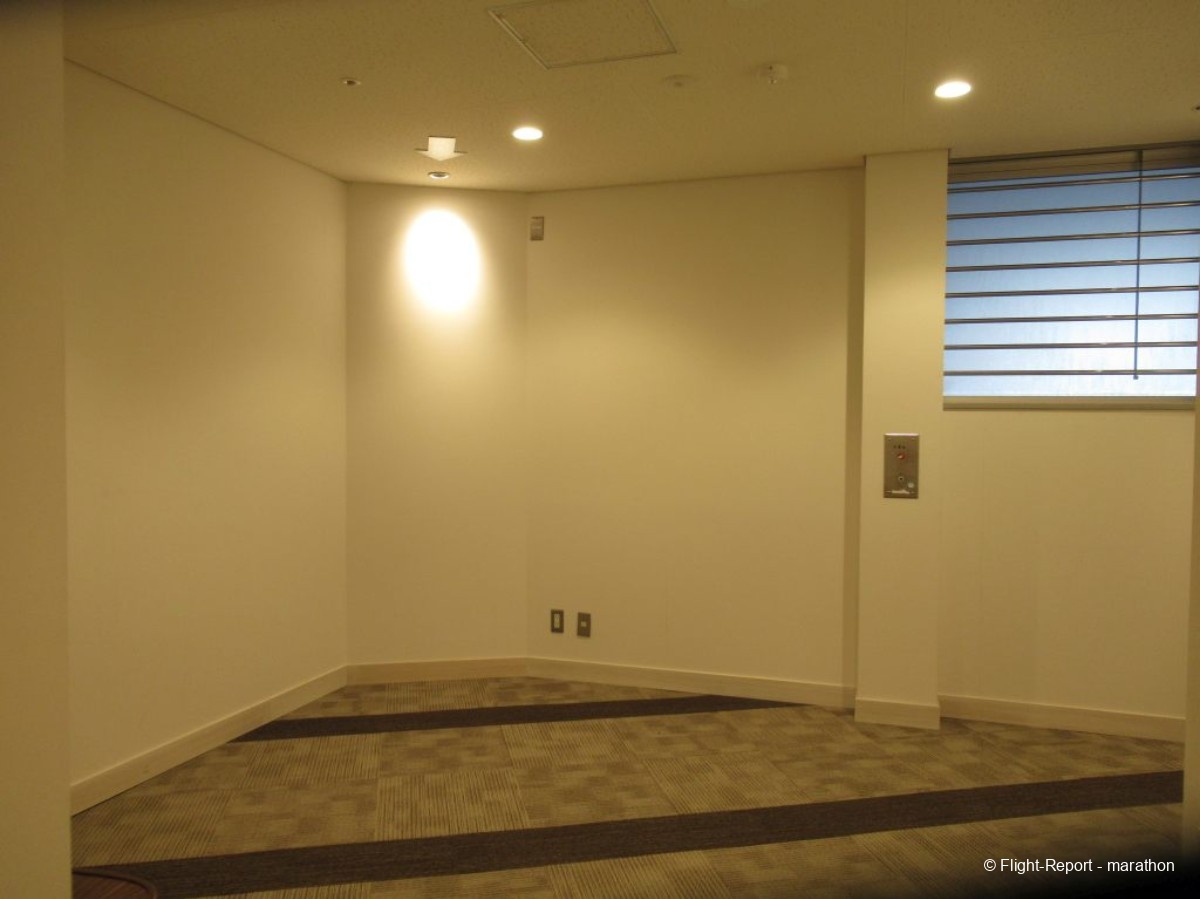
… and this device for ablutions betrayed its intended use by Muslims
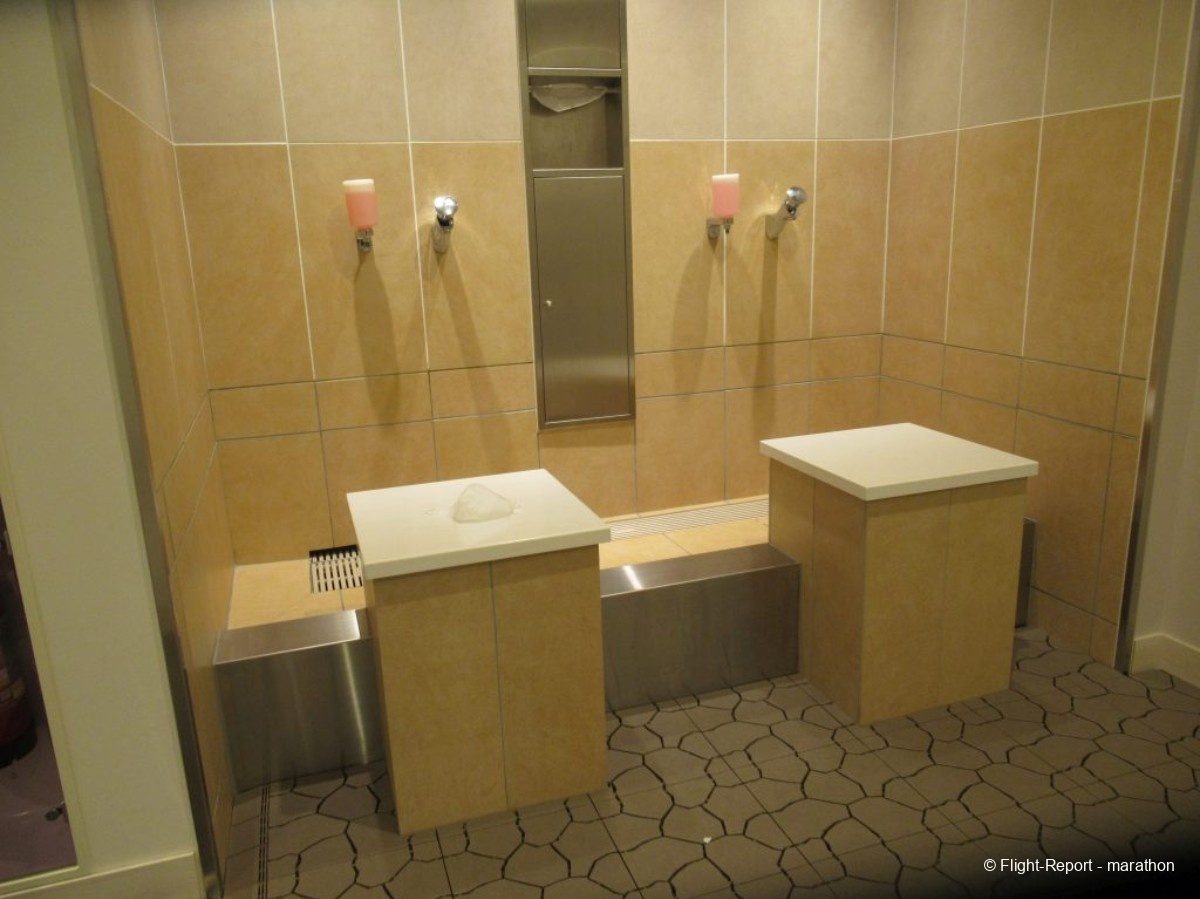
.. because it has nothing to do with the ablution fountain of a Japanese temple (here at Kyoto’s Nishi Hongan-ji).
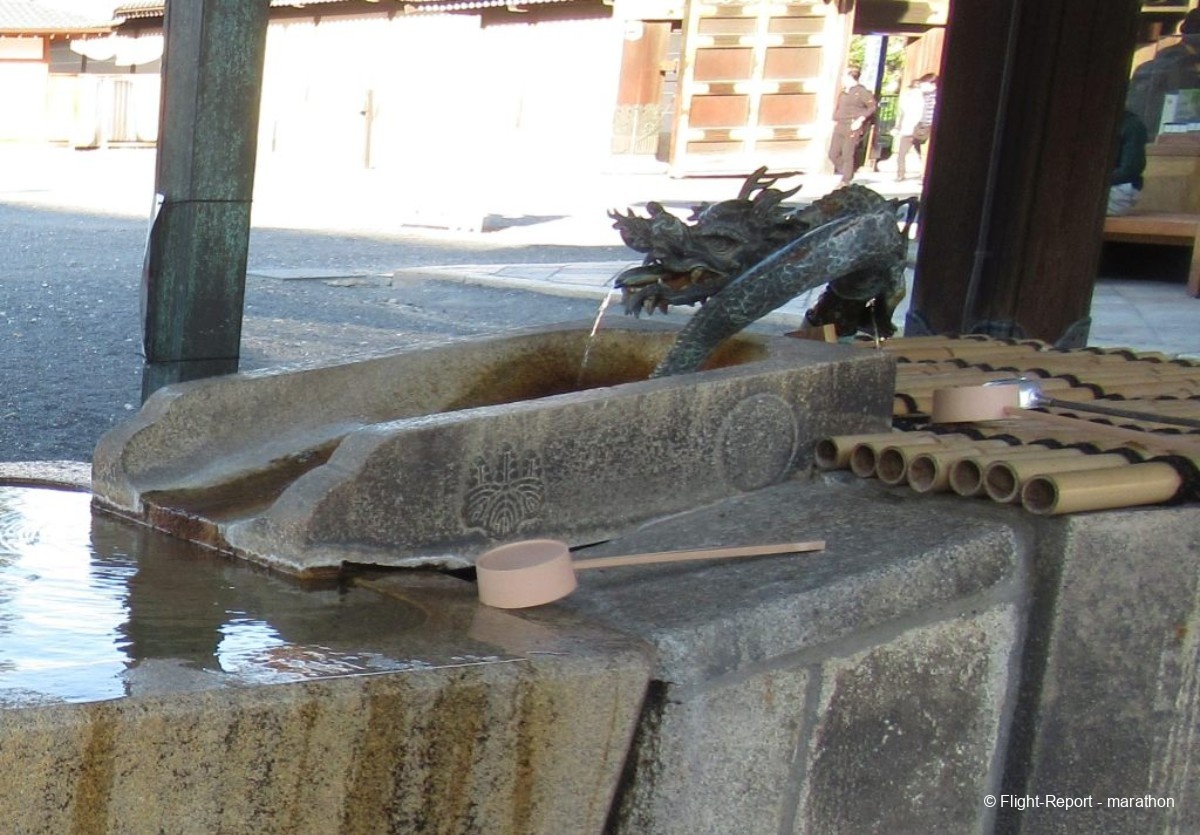
B-HNW, the 777-300 that will operate our flight, was out of revenue service until June that year, after being involved in a ground collision on January 16, 2024, caused by a Korean Air A330 on the tarmac of CTS.
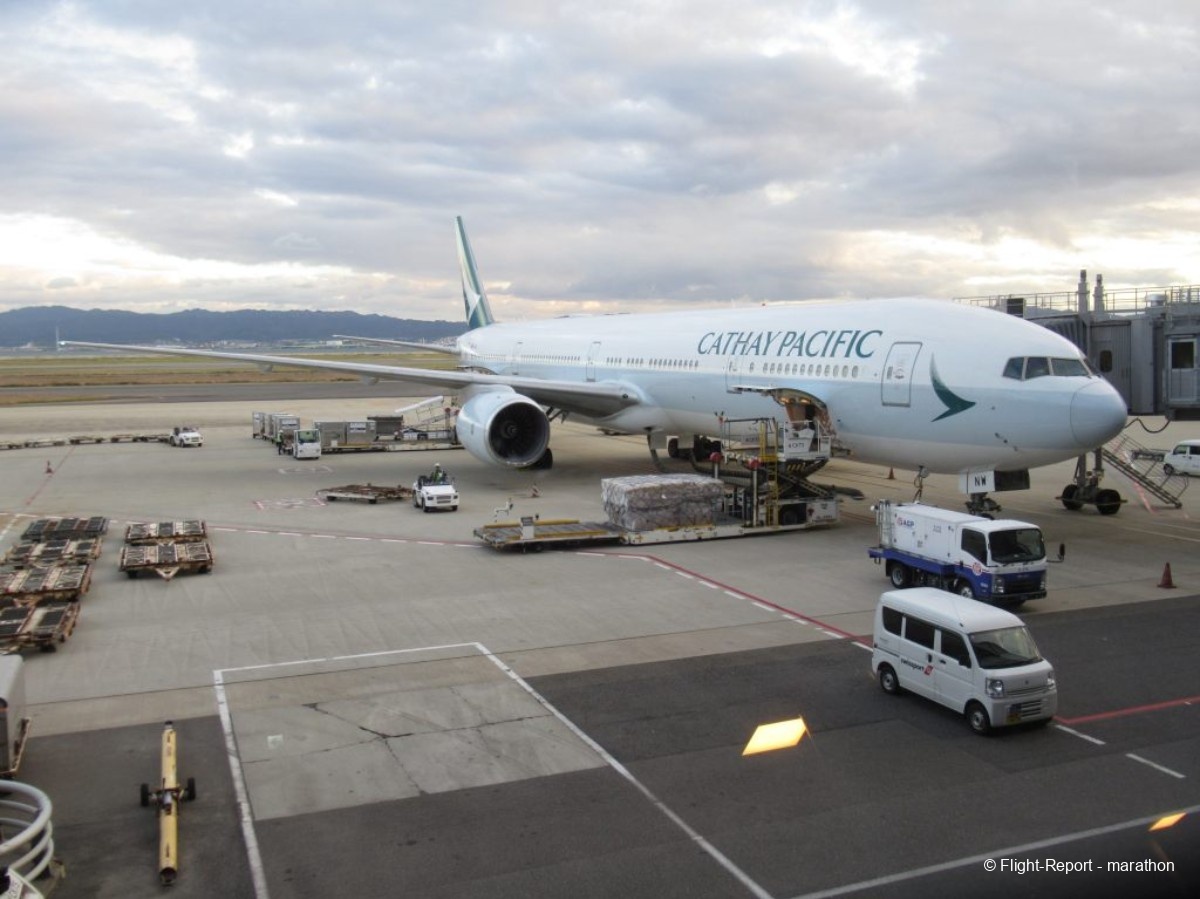
The seats near the boarding gate are equipped with AC (Type A) and USB outlets.
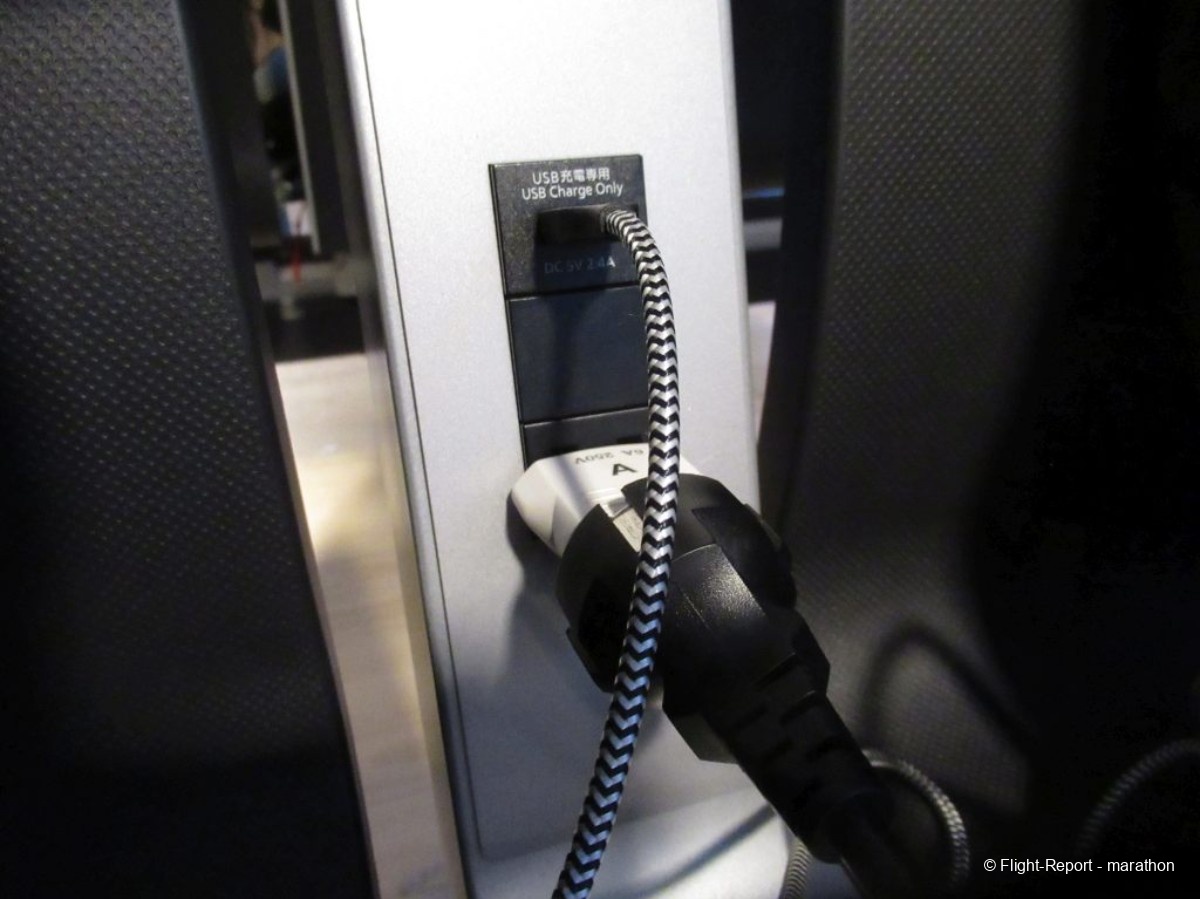
Boarding: The Cabin of a CX 777-300
A very long line appeared when boarding started, but why bother to rush? Like many other passengers, we had a small piece of hand luggage each, which would easily fit in the overhead bins: the Japanese often travel light and happily check their luggage (CX's lowest fare included a 23kg hold allowance).
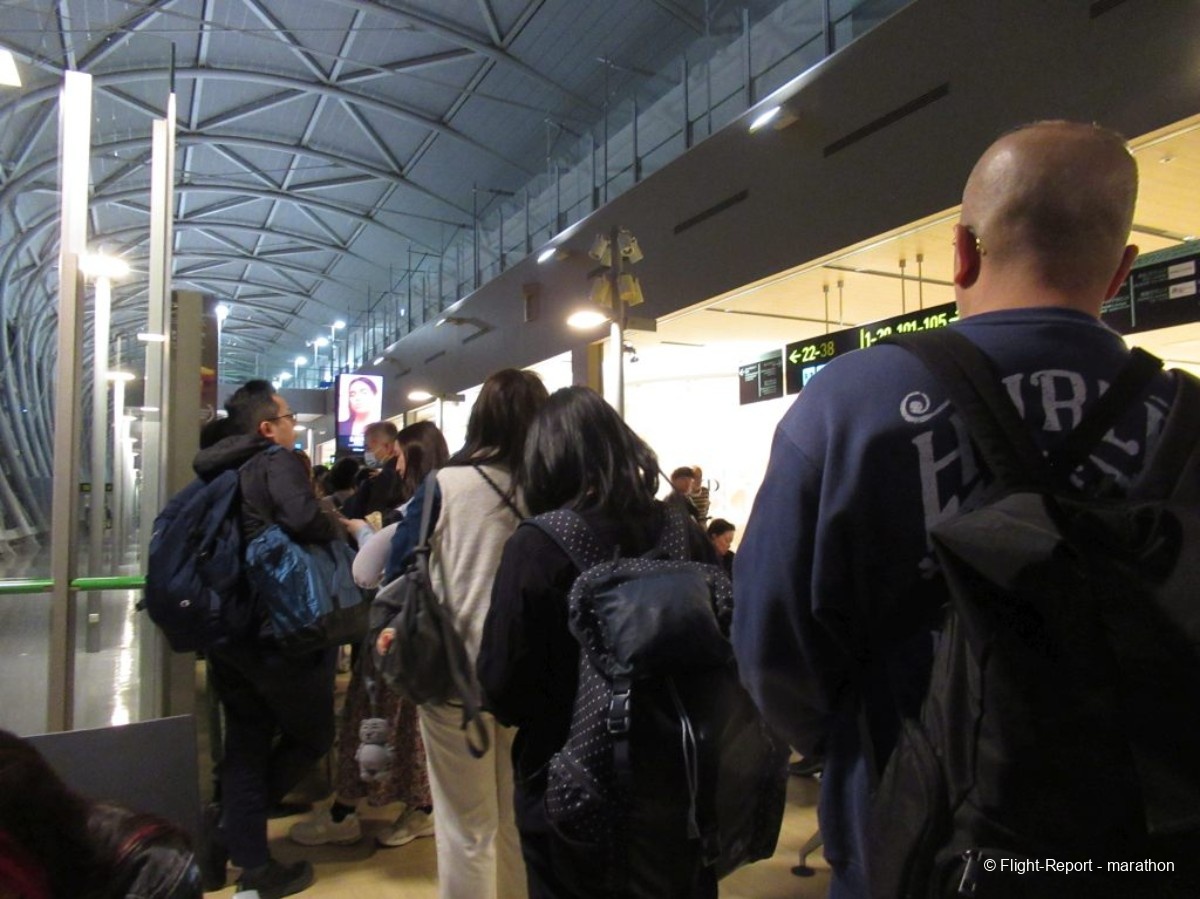
We were therefore among the last to board, finding it more comfortable to be seated while waiting, rather than inching our way forward in the waiting line.
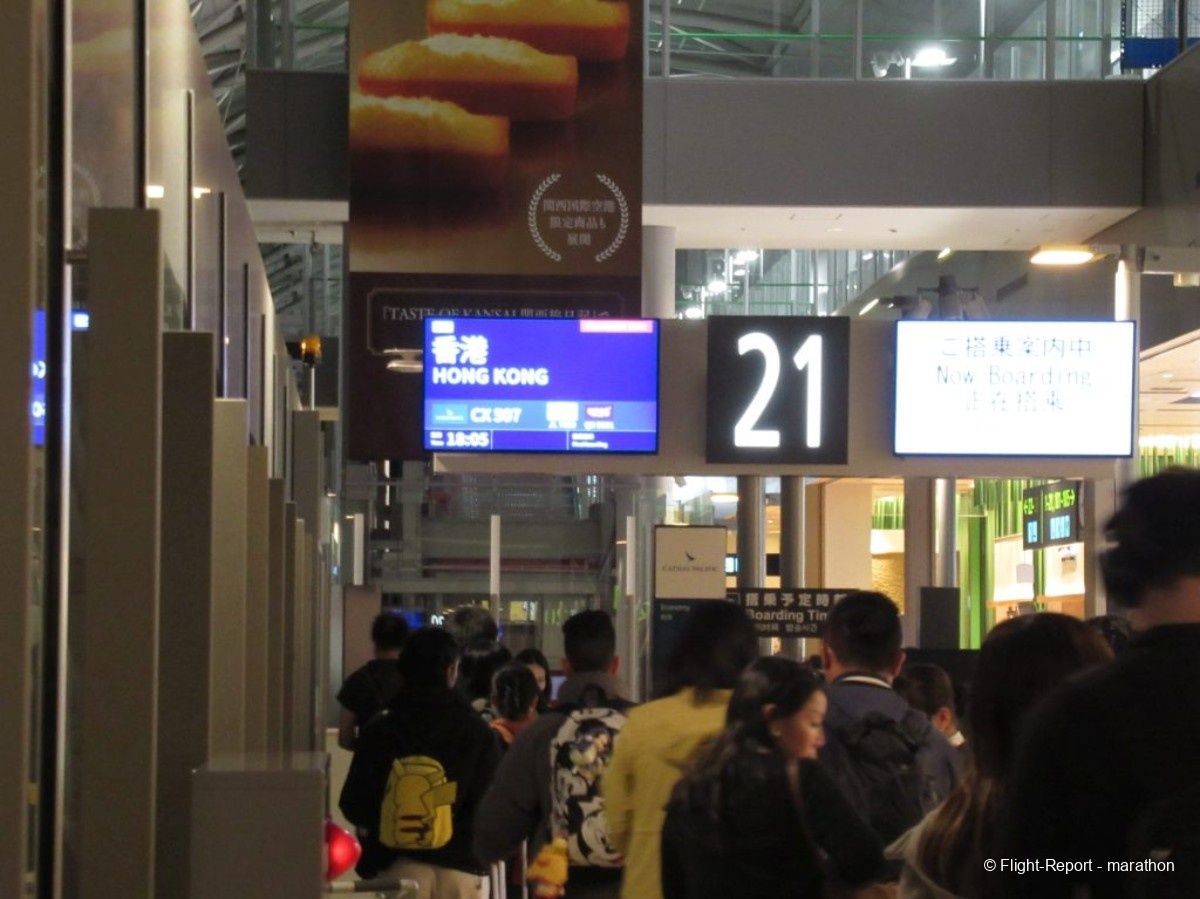
Plane spotting in the jetway: a Shenzhen Airlines 737-800 at the next gate
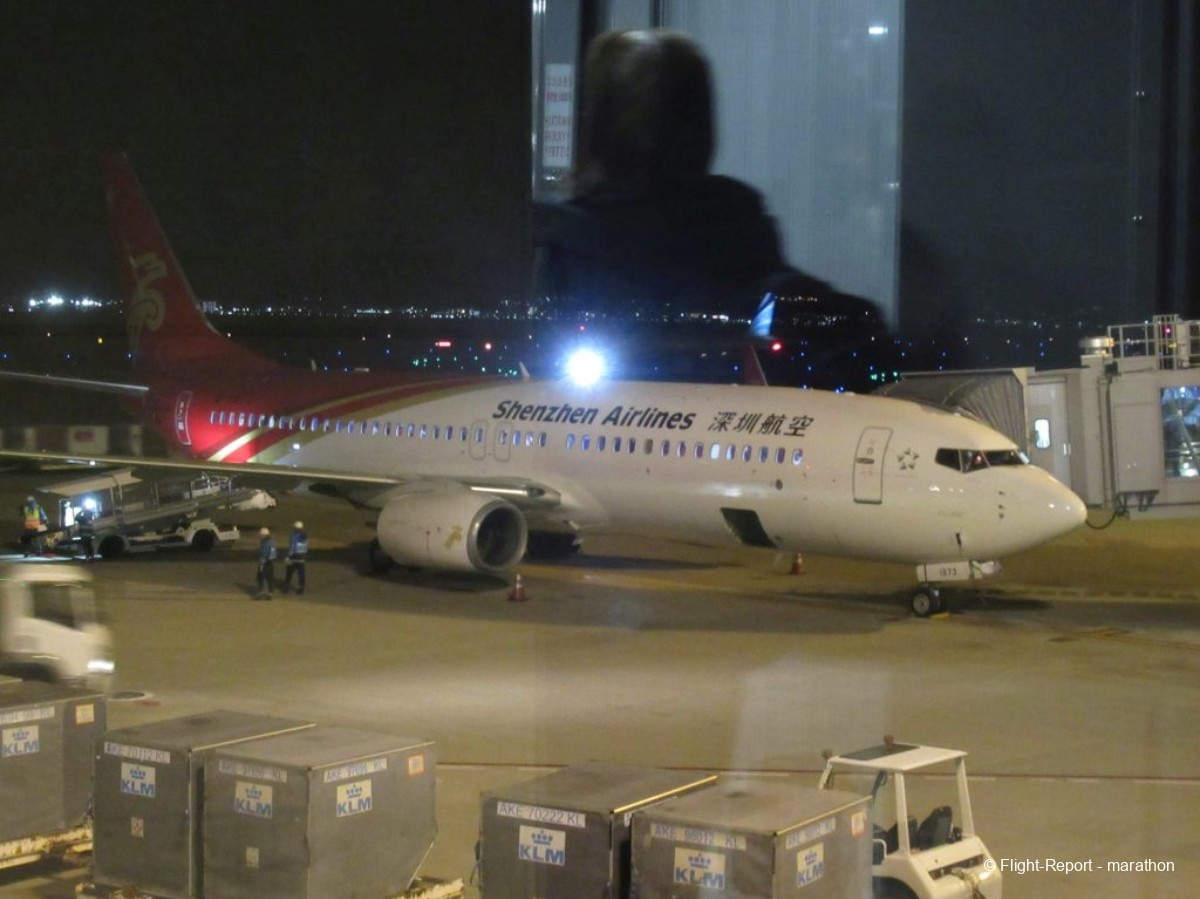
Gate shot. Hey, I didn't know that ShinMaywa (formerly Shin Meiwa) also built airport jetways! I only knew them for their Shin Meiwa US-1 and US-2 heavy seaplanes.
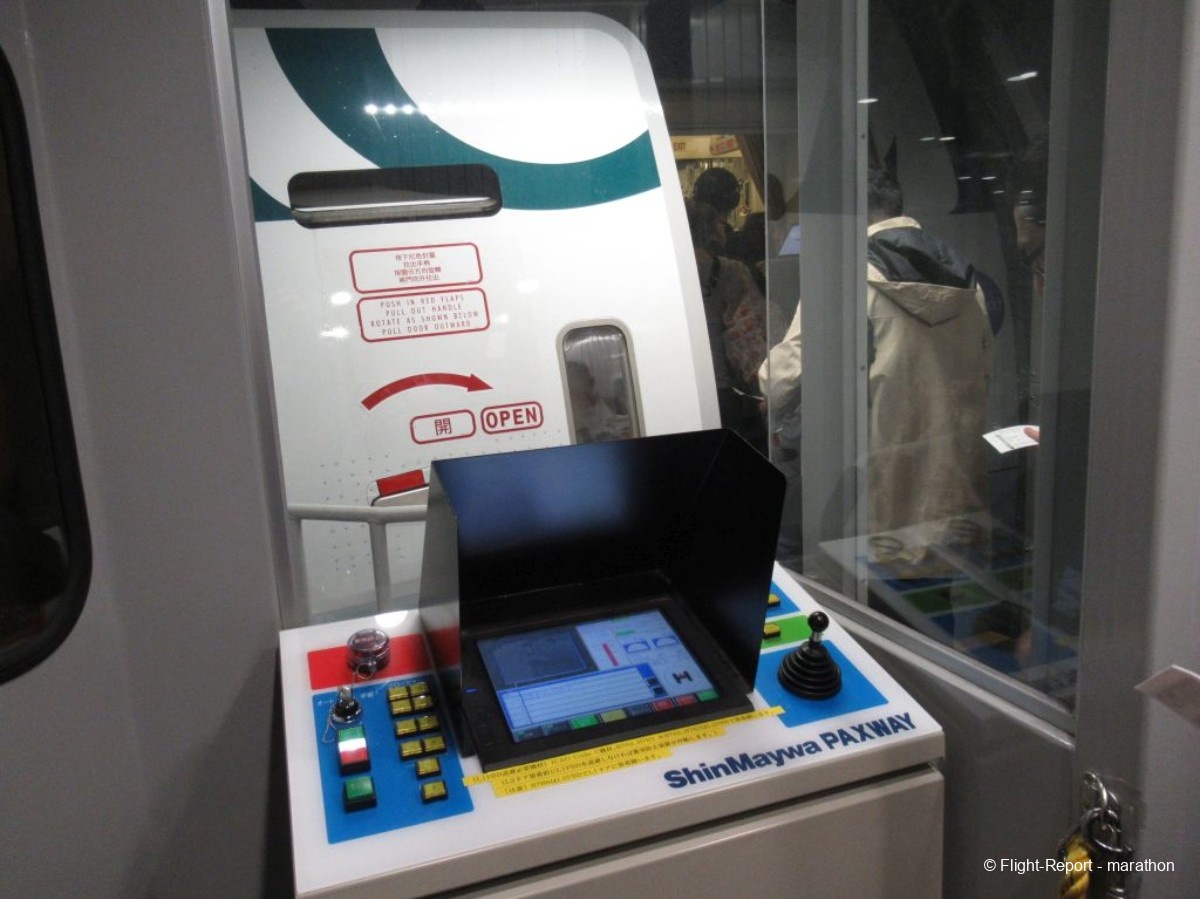
Reaching our seats: the width between the armrests was only 44 cm: it was a Boeing (it's typically 46 cm in an Airbus)
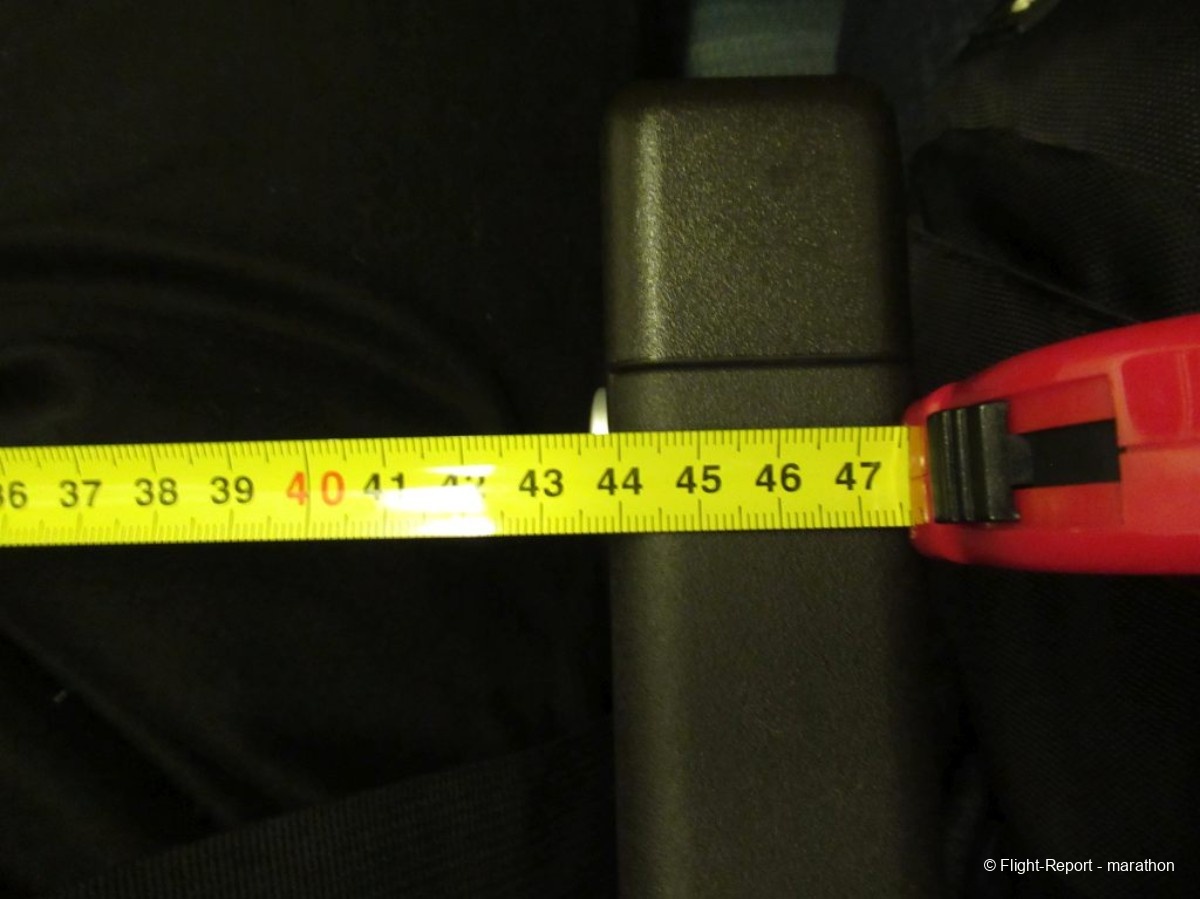
And worse, these meager 44 cm were reached only because the armrests are a narrow 36 mm wide only.text]
https://static.flight-report.com/media/photos/38/1732273200CYDM/img_8303a.jpg
On the other heand, the seat pitch, measured from the edge of the seat to the back of the seat in front, was decent for economy, at 27.5 cm.
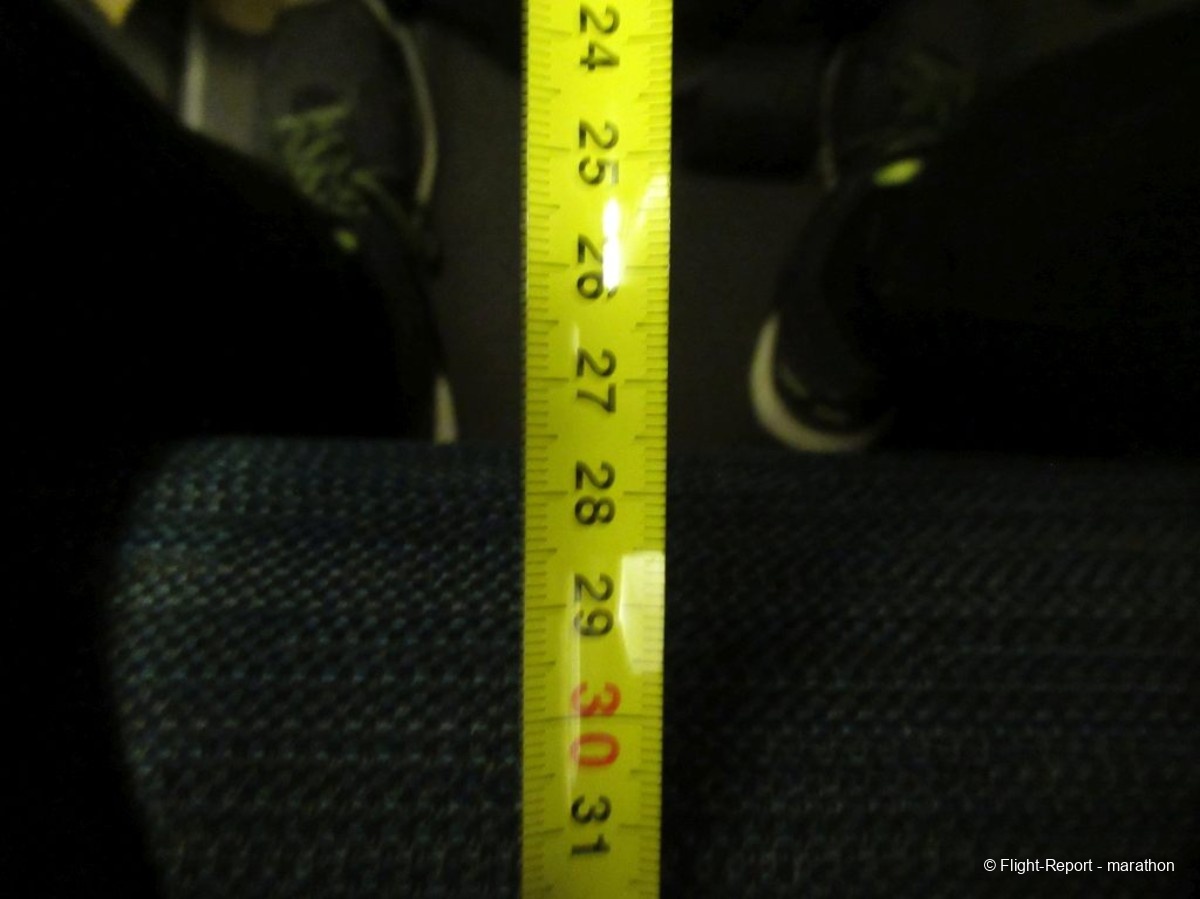
The backrest reclined 14°, somewhat low for the long-haul flights a 777 can handle, but this was a medium-haul flight.

As usual, there was no way to guess that there was a 110V 60Hz multi-standard power outlet under the seat.
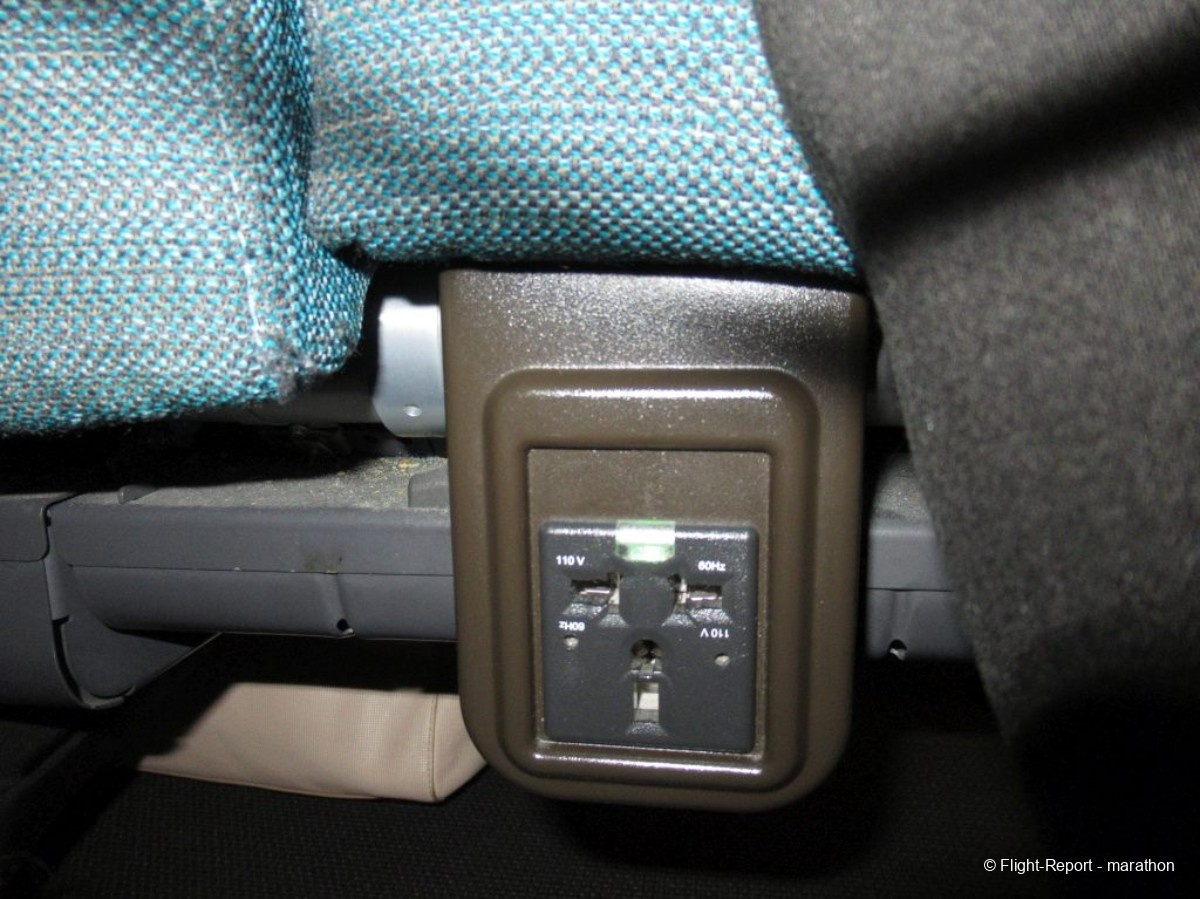
The safety card, both sides
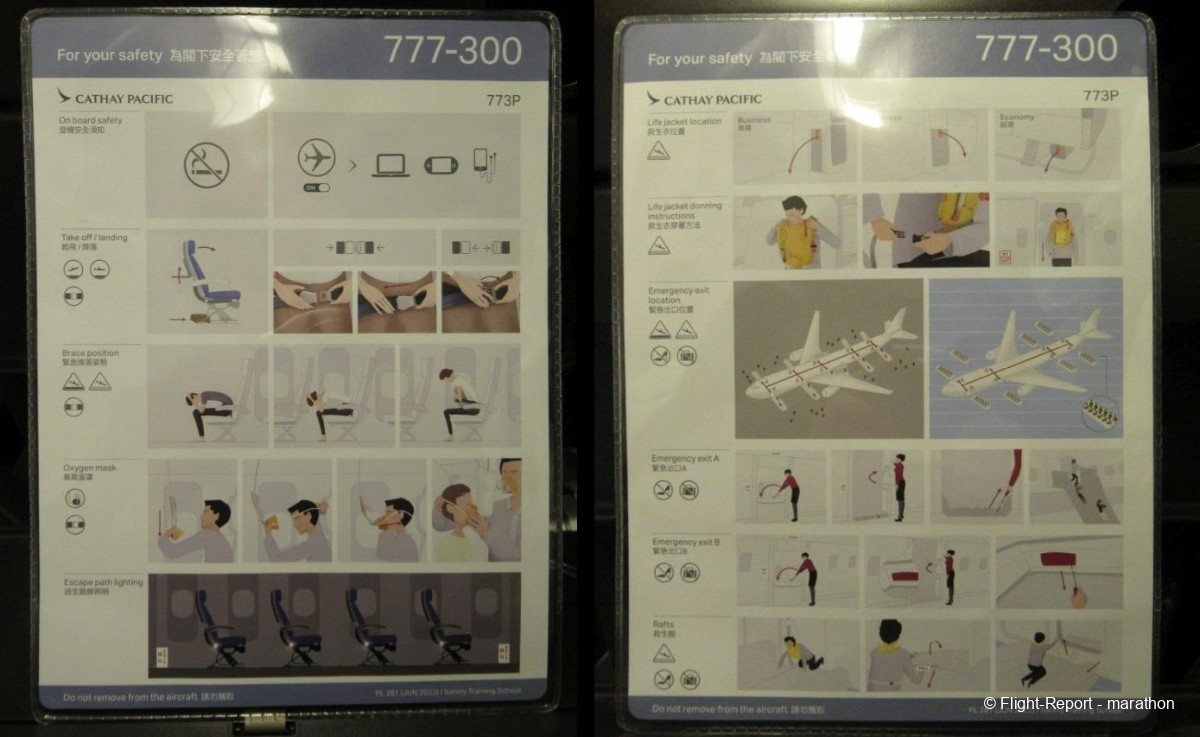
CX kept printing an in-flight magazine; this was its network map
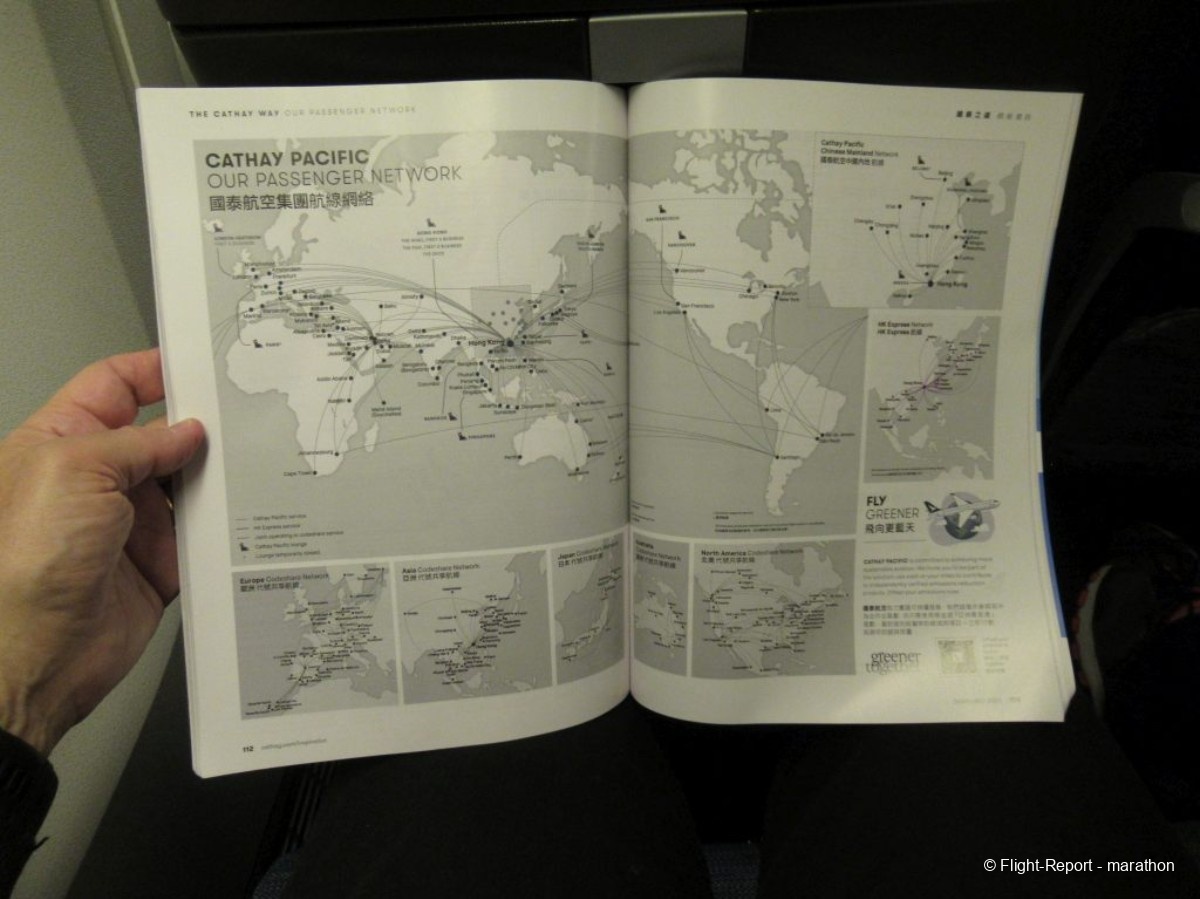
The IFE screen
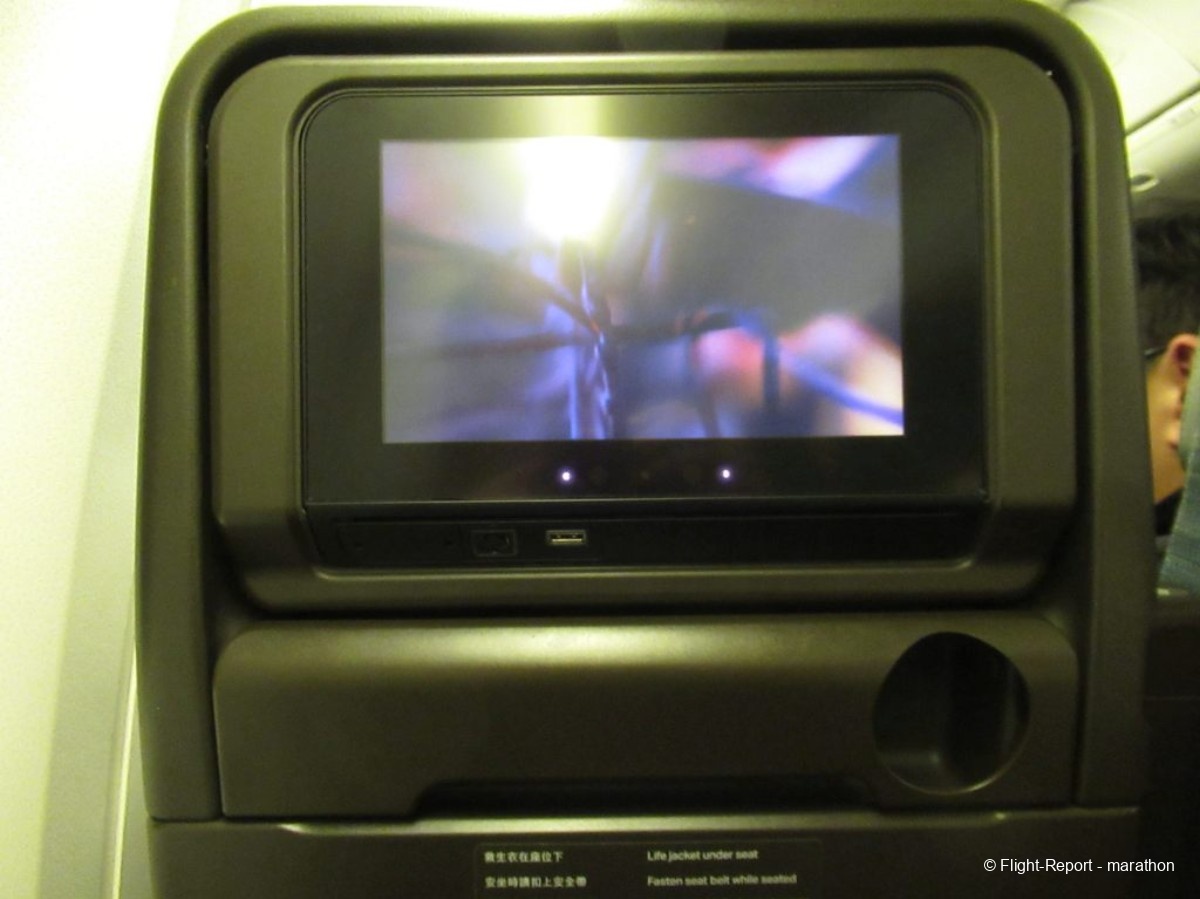
Two shelves, the top one being designed to prop up a phone to watch a video on your own device.
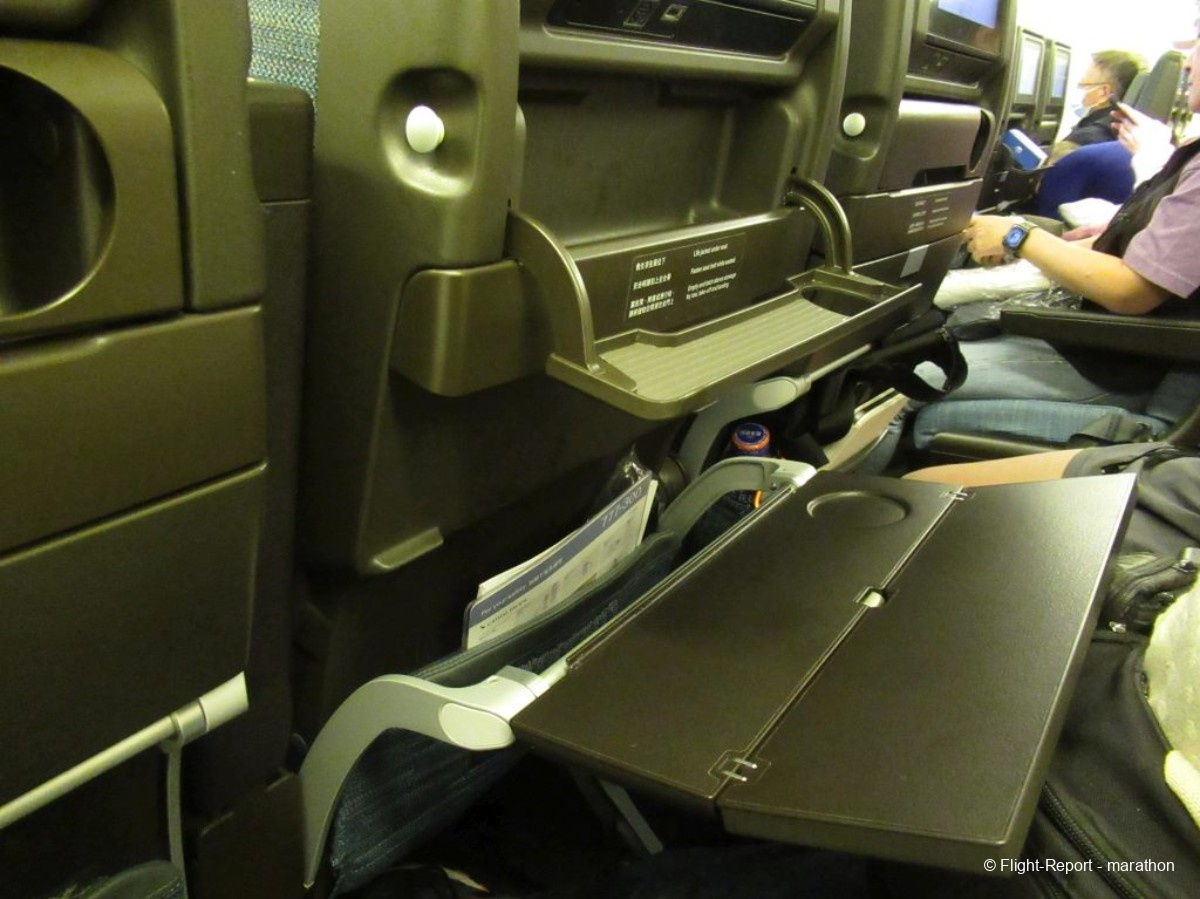
Some of the games available on the IFE
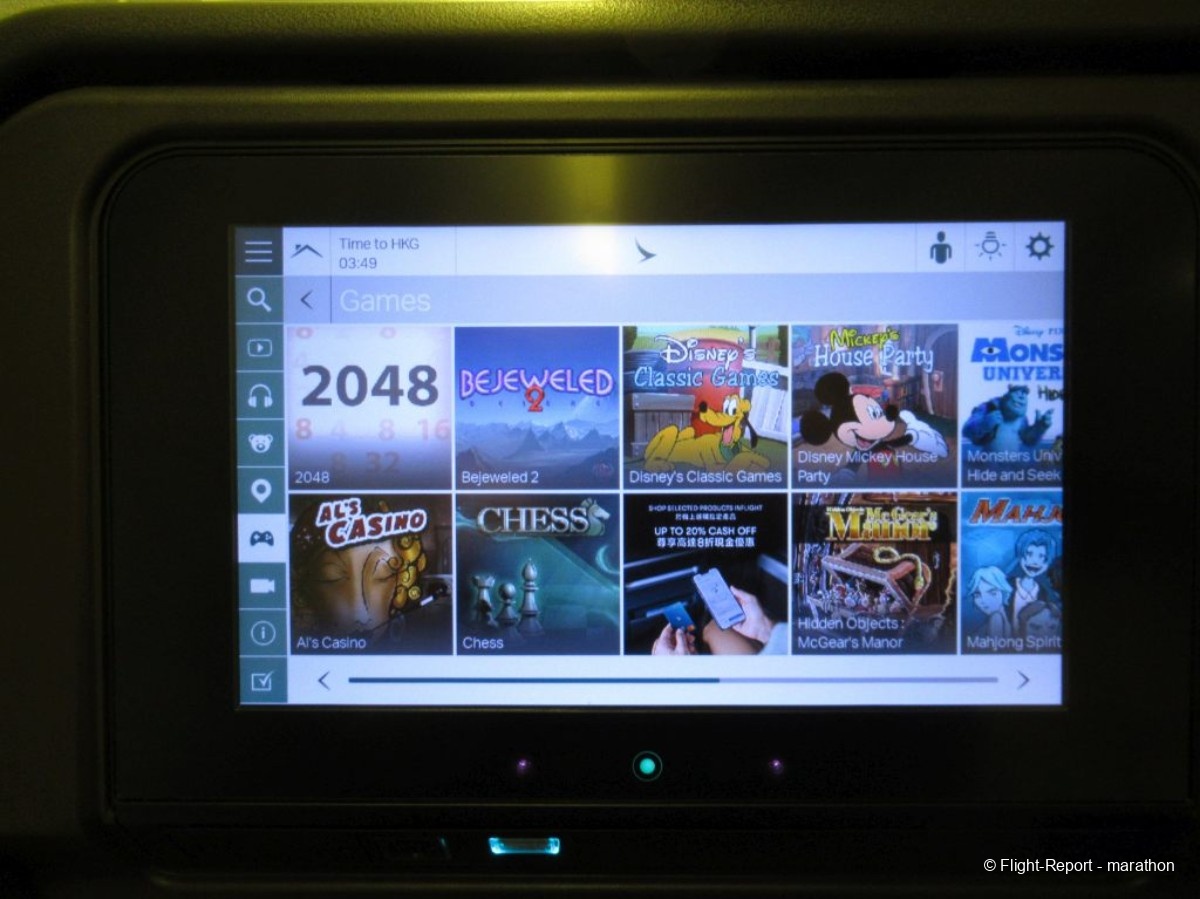
Playing on this screen was quickly uncomfortable, because it required streching your arm.
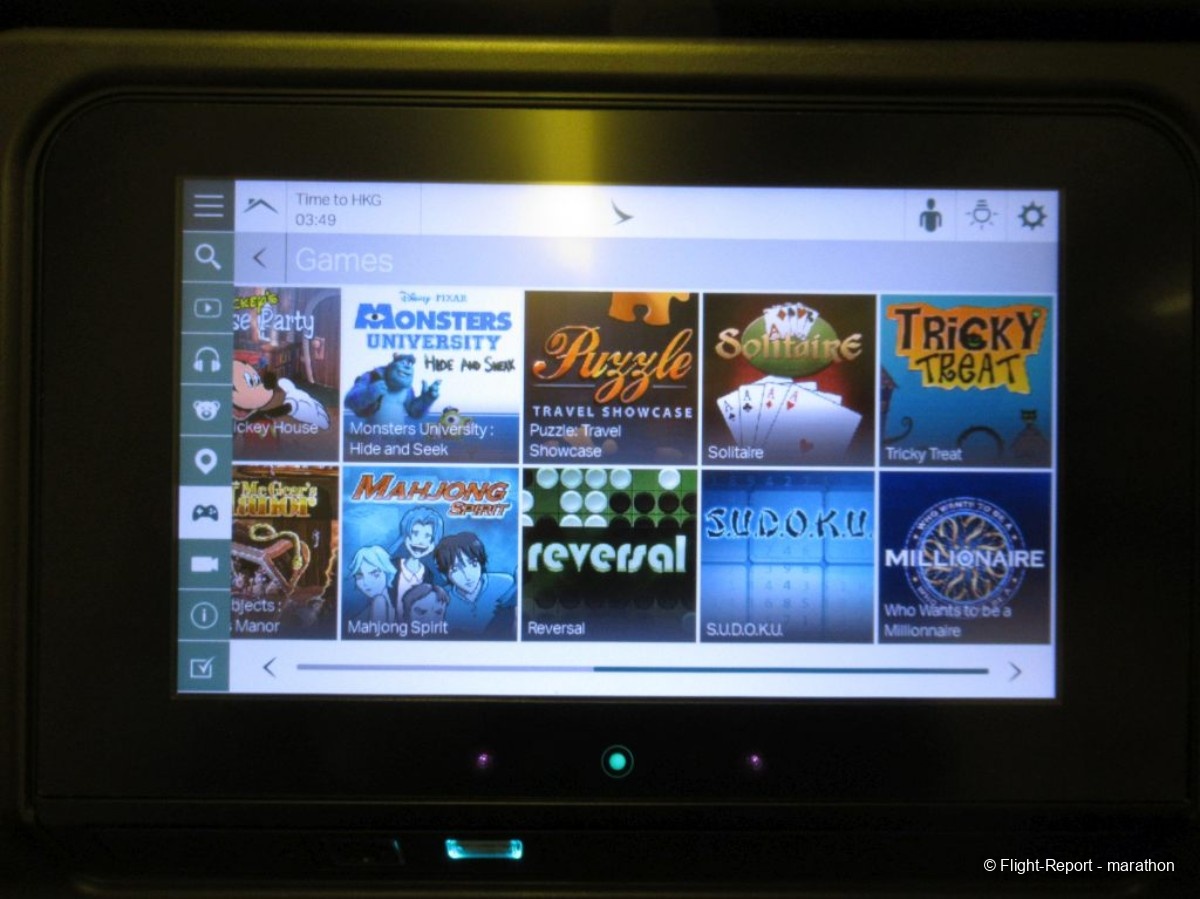
The moving map before departure

In flight
Departure

KIX seen from the air after takeoff, with the bridge to the mainland on the far left
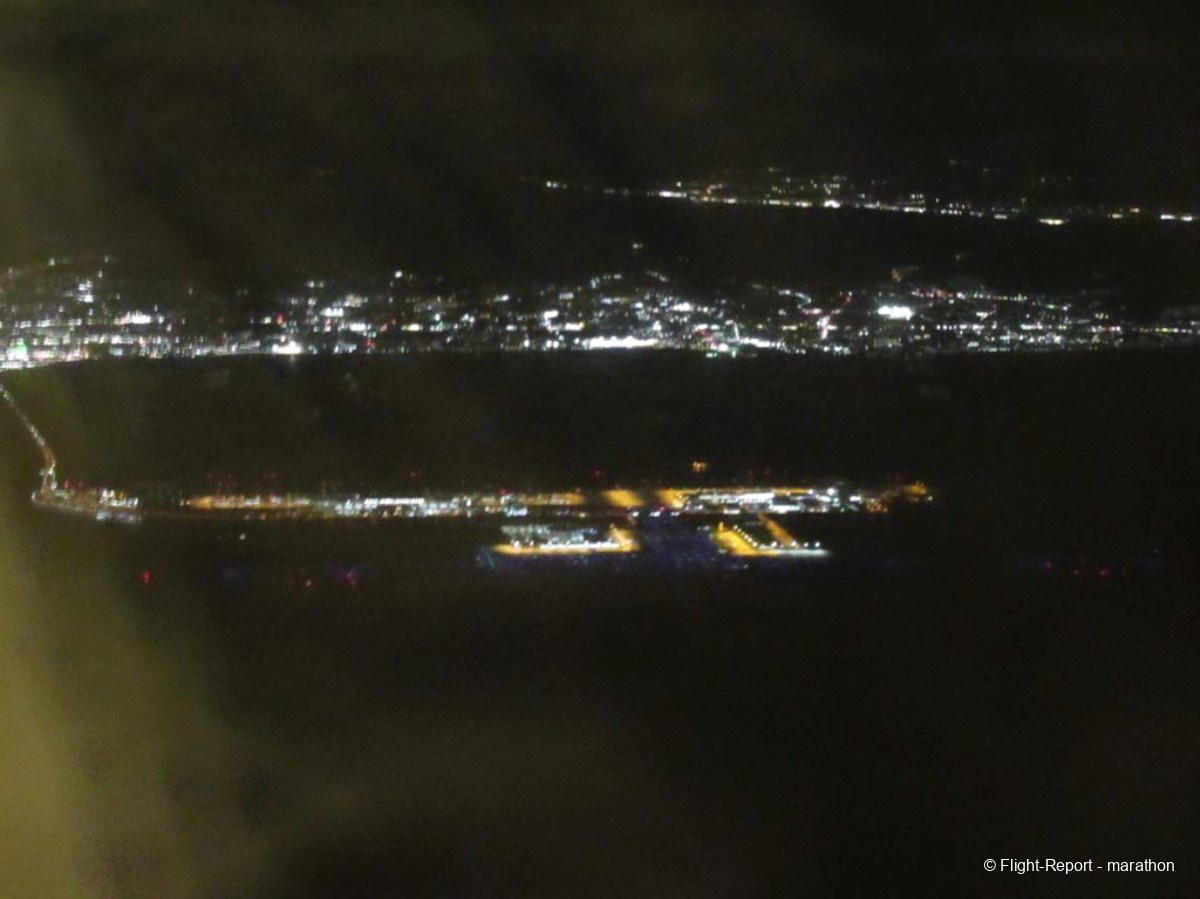
Sample of the display of the moving map
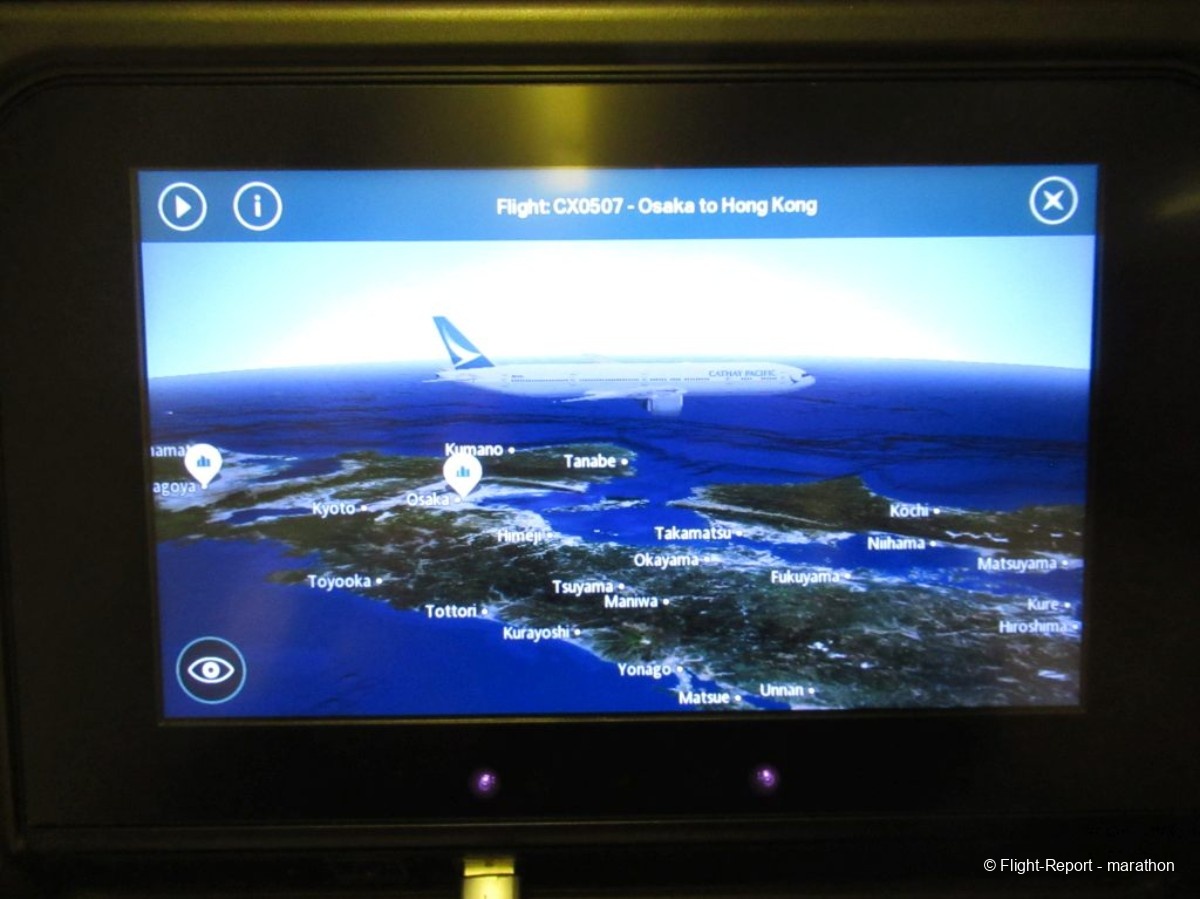
The meal, as served
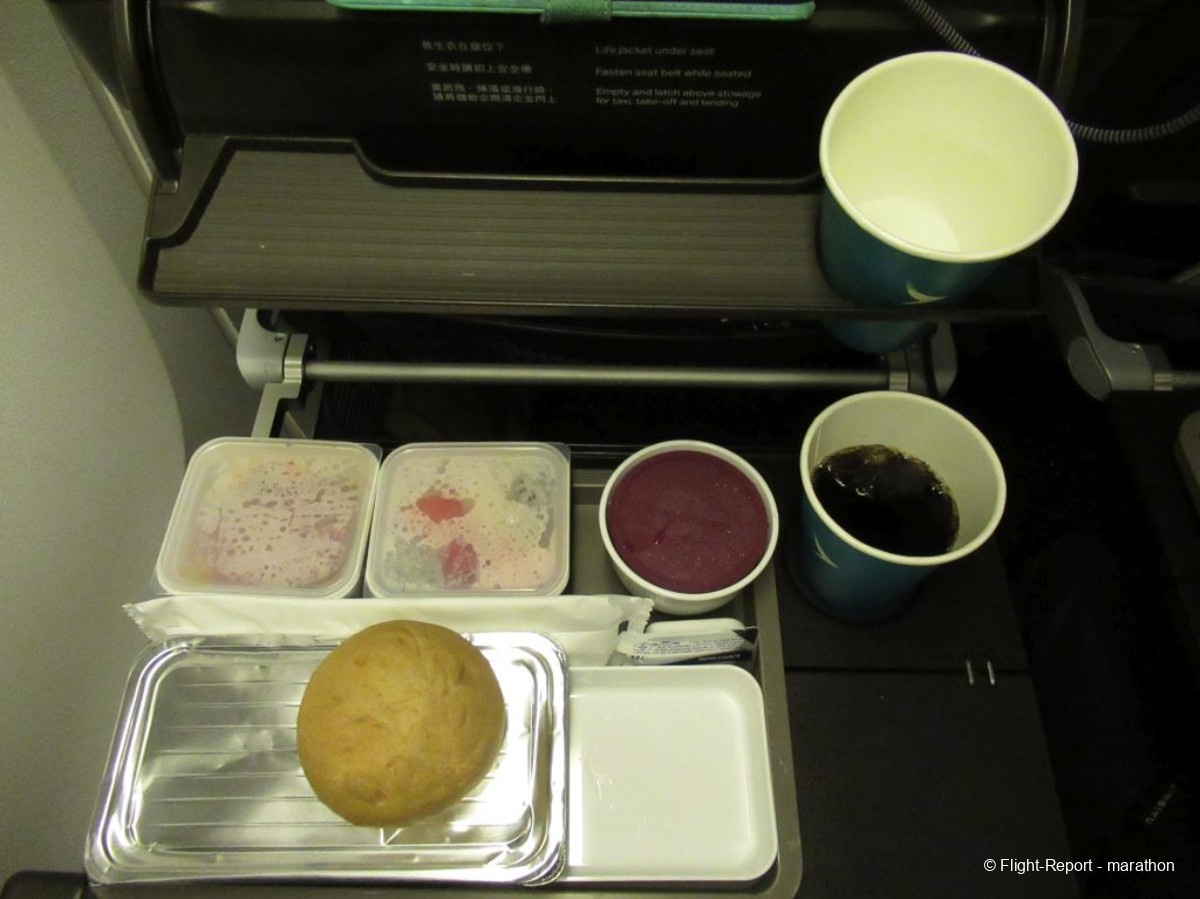
There was a 75 ml Häagen-Dazs ice cream in the top right corner of the tray.
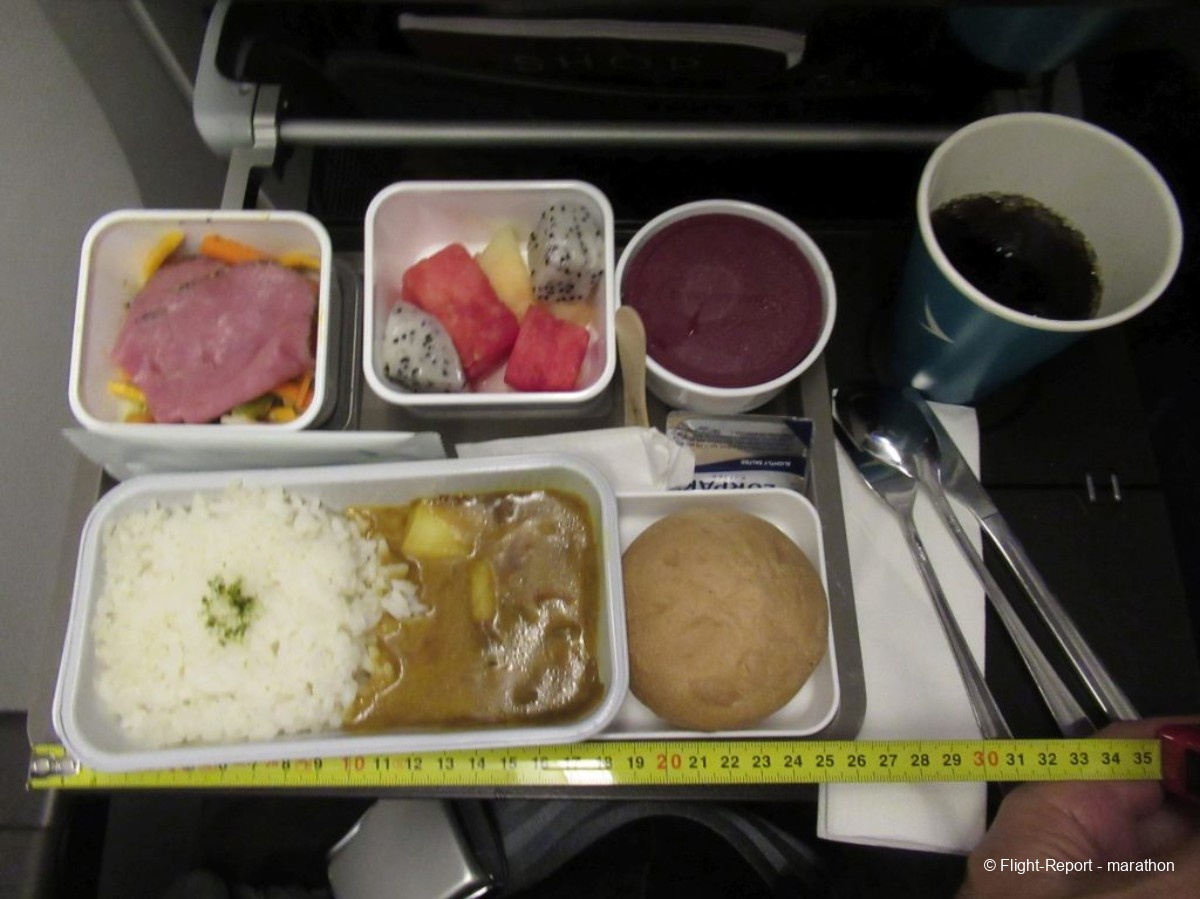
The tray after unpacking: I chose rice + chicken curry (a Japanese classic)
My wife chose mashed potatoes and vegetables with beef, which she didn't like
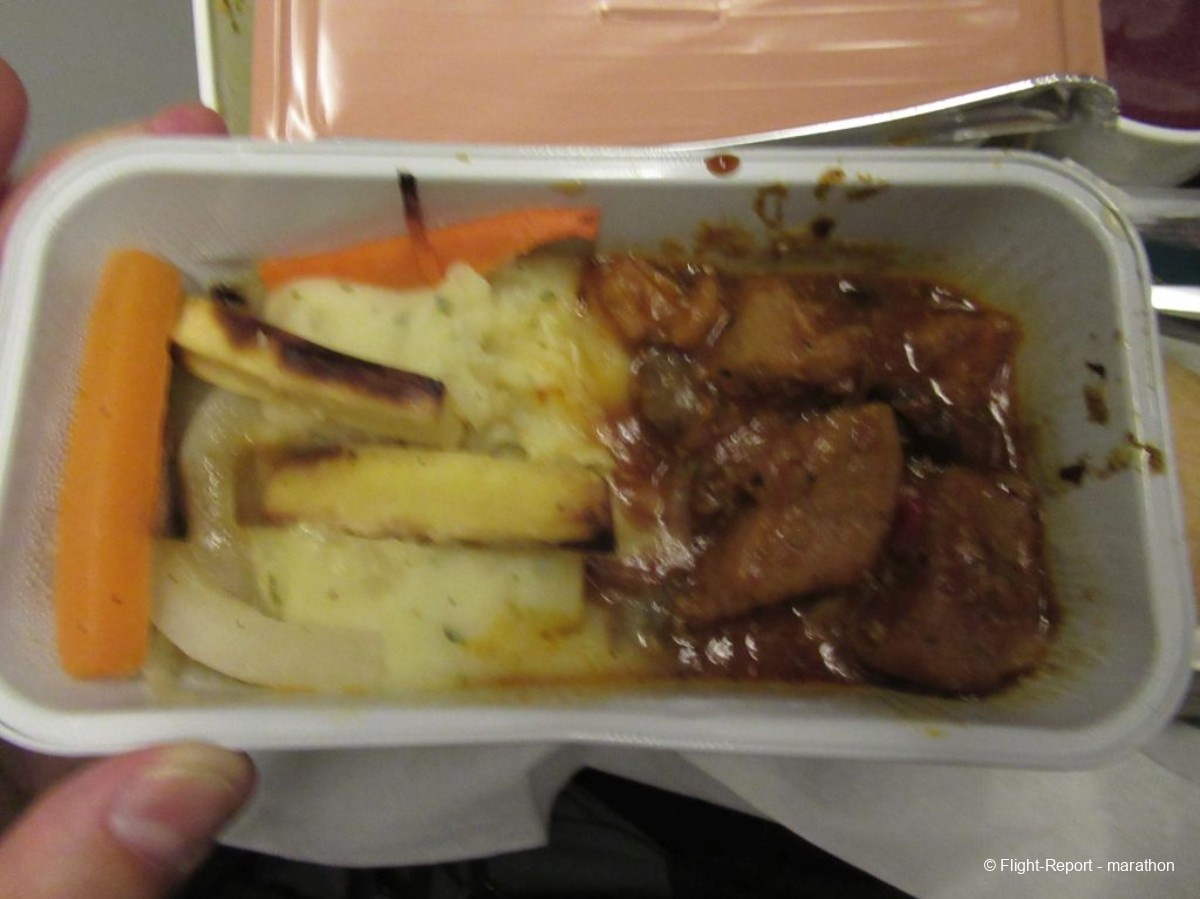
The seat pitch, and also the fact that the passenger seated in the previous row didn't recline their seatbacks made it comfortable to use my laptop.
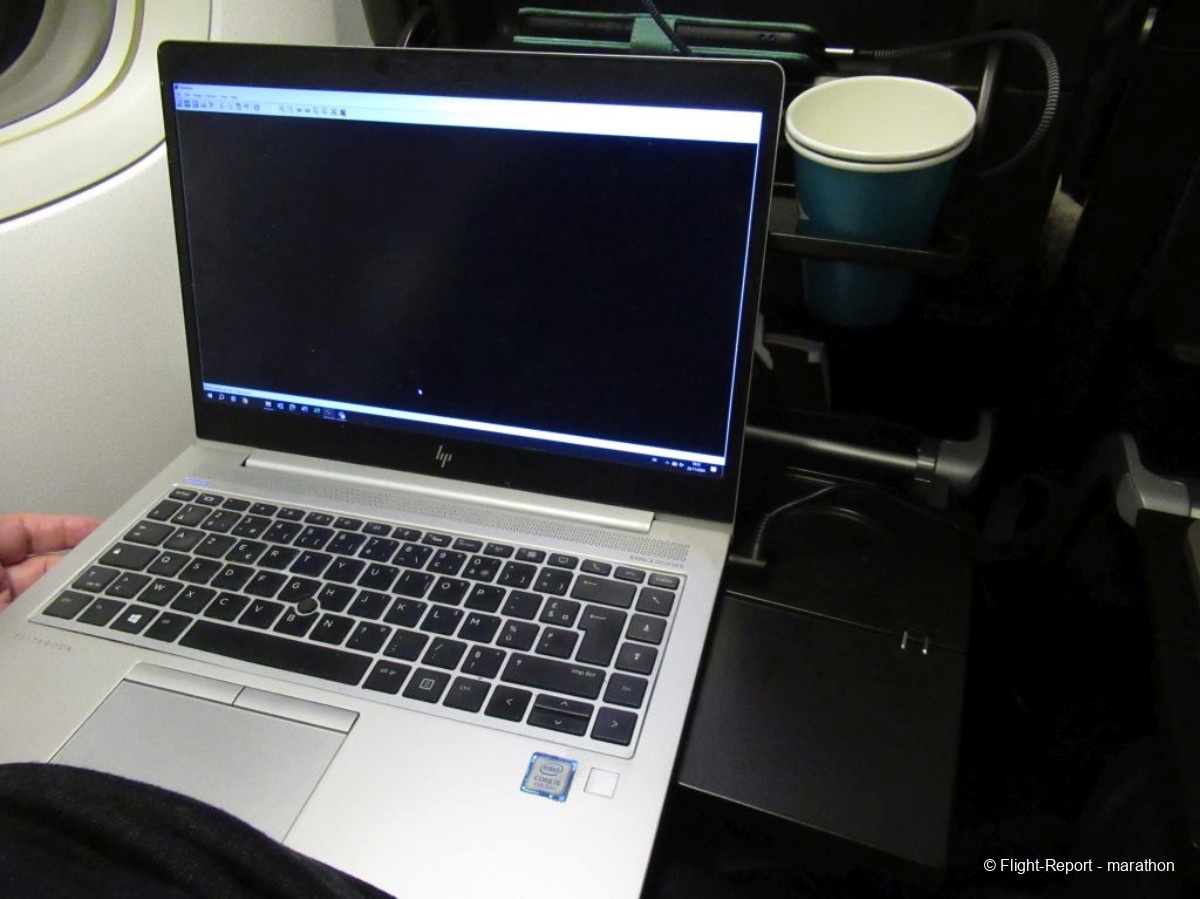
There would not be anything to see outside while cruising on this night flight. The IFE displayed the gates for the first connecting flights; ours ws significantly later.
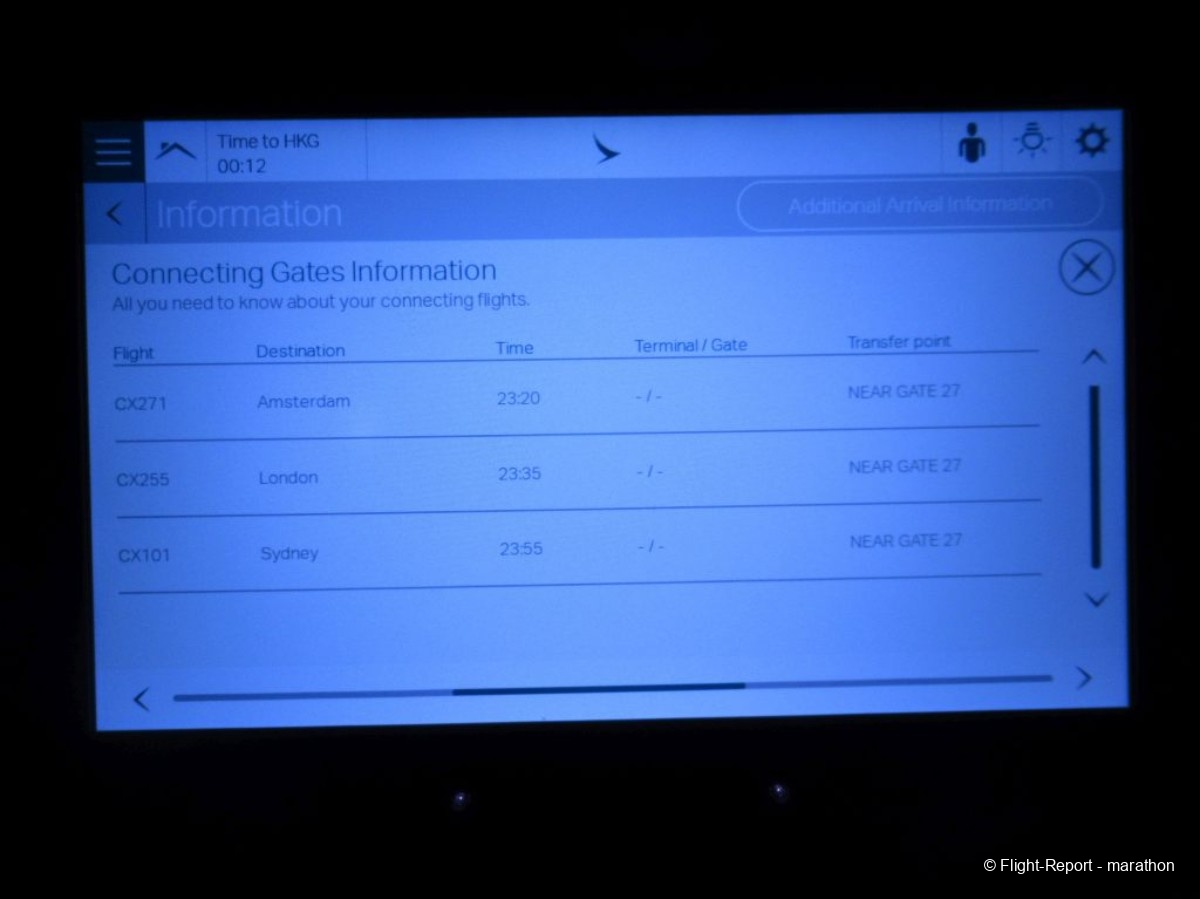
Arrival in Hong Kong
One of the viaducts of the combined bridge-viaduct-tunnel structure connecting Hong Kong on the one hand, and Macau and Zhuhai on the other, crossing the fifty-kilometer wide Pearl River estuary. This was the one we had taken for the round trip to Zhuhai on the outward journey - see my FR HKG-KIX.
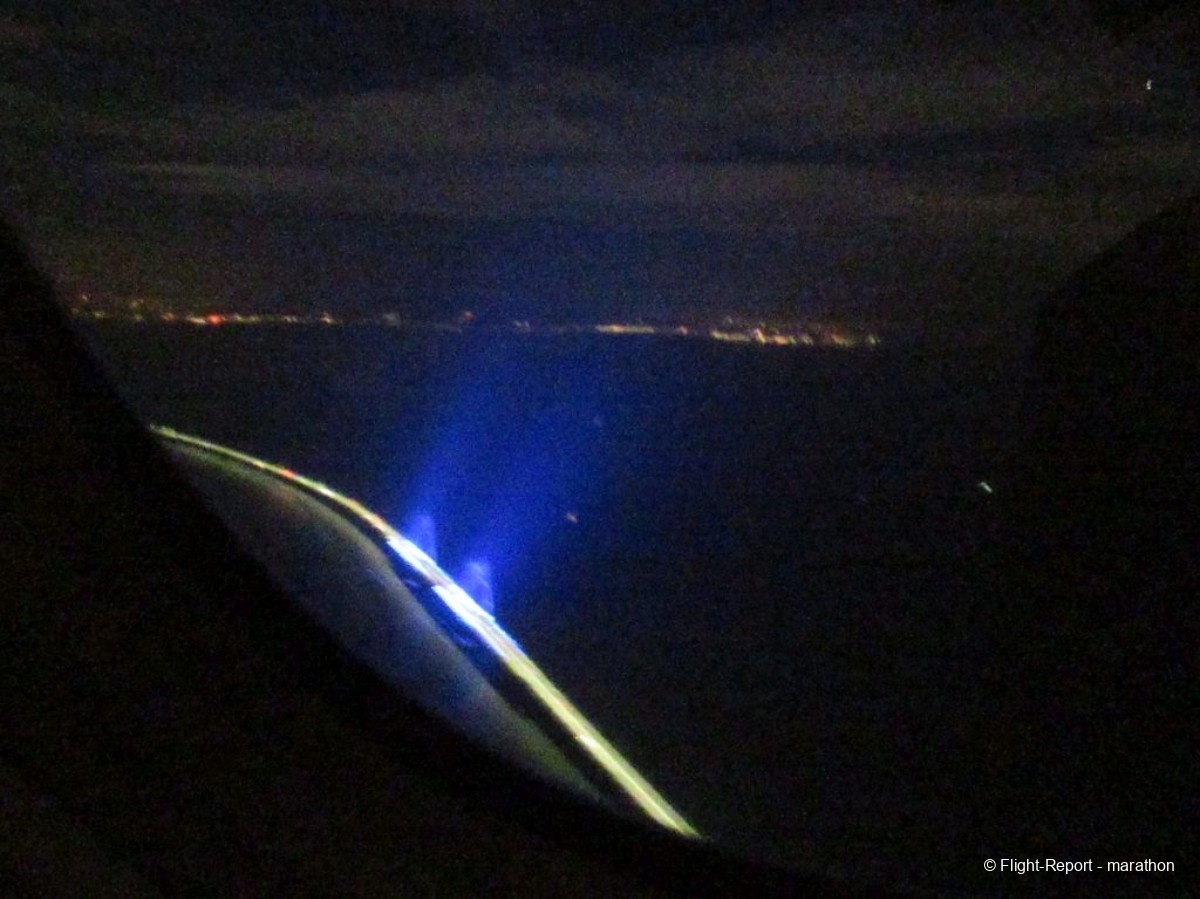
Landing at 9:55 PM local time
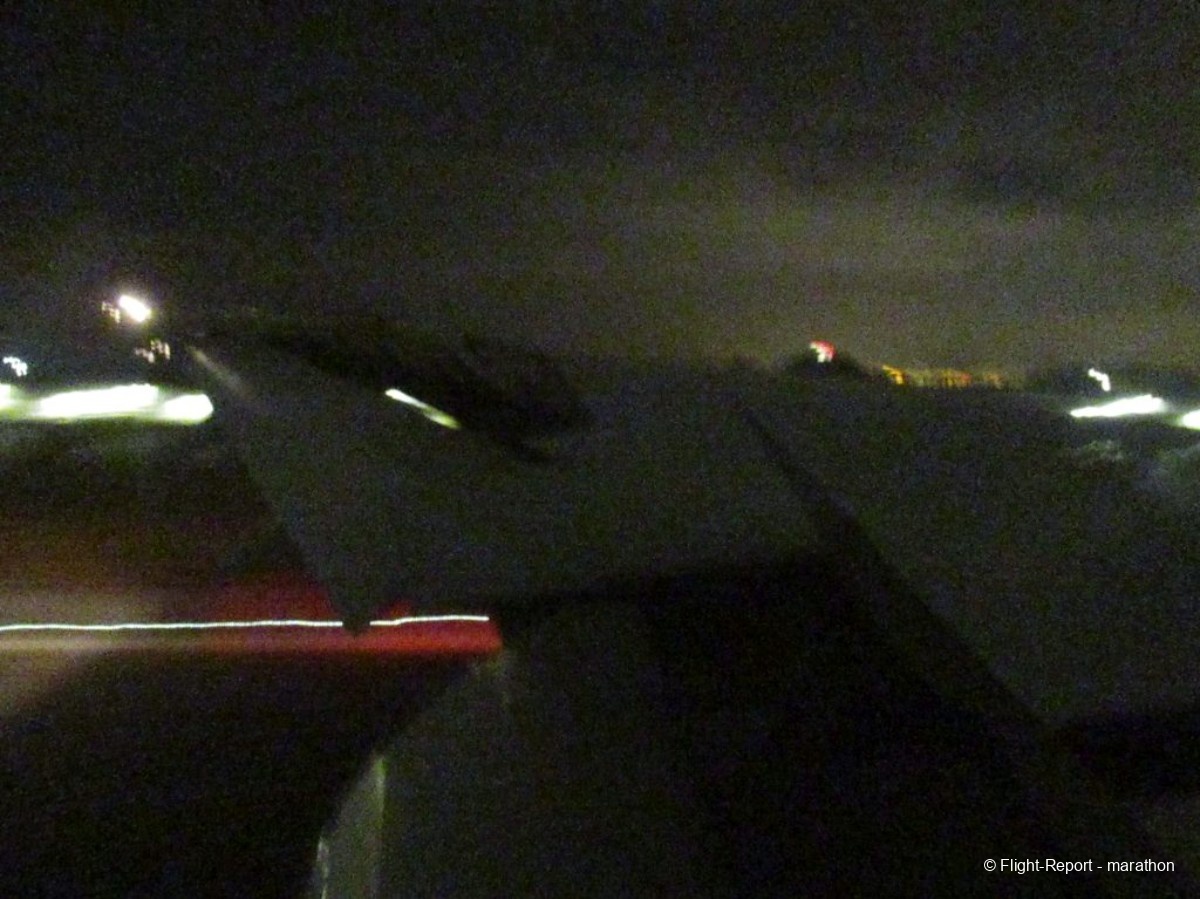
HKG’s control tower

The passengers waited for the complete shutdown of the aircraft before raising from their seats
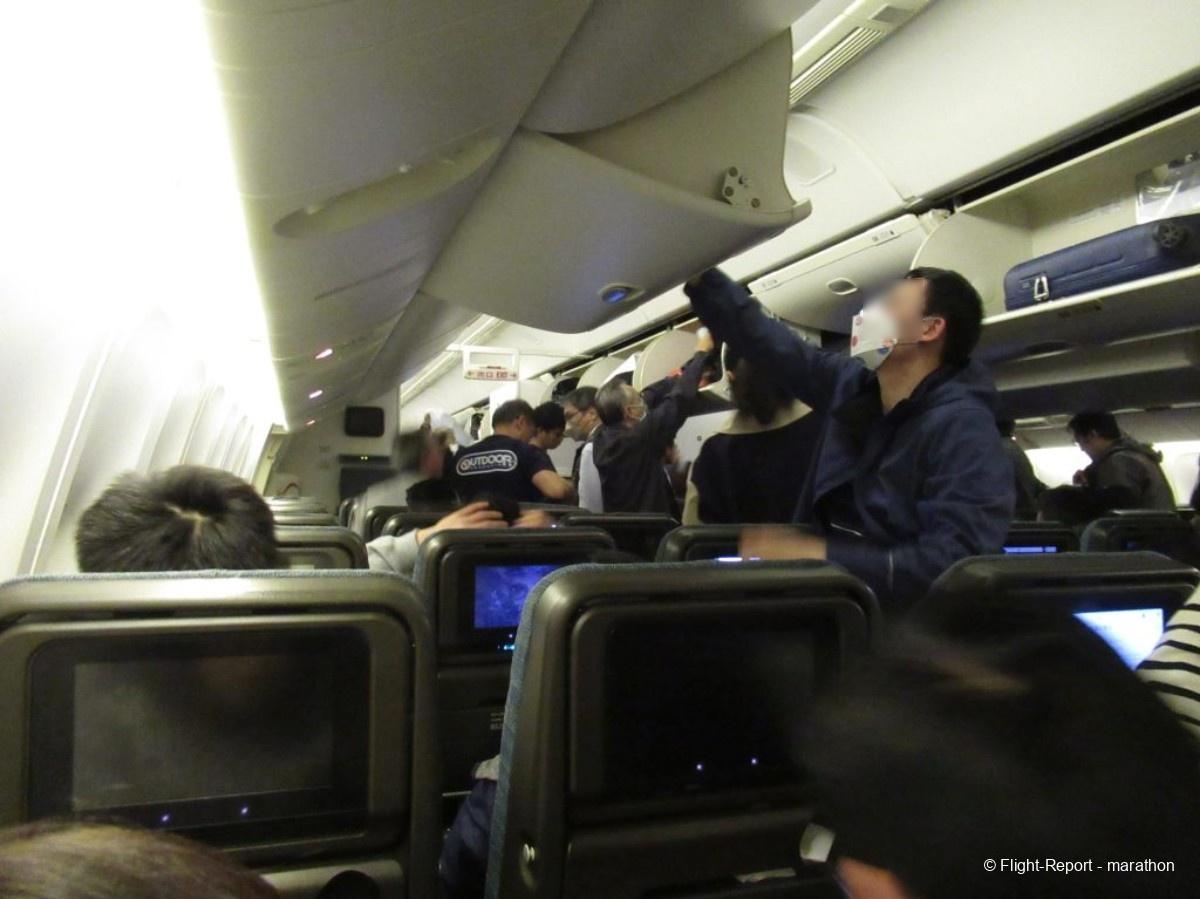
Economy cabin
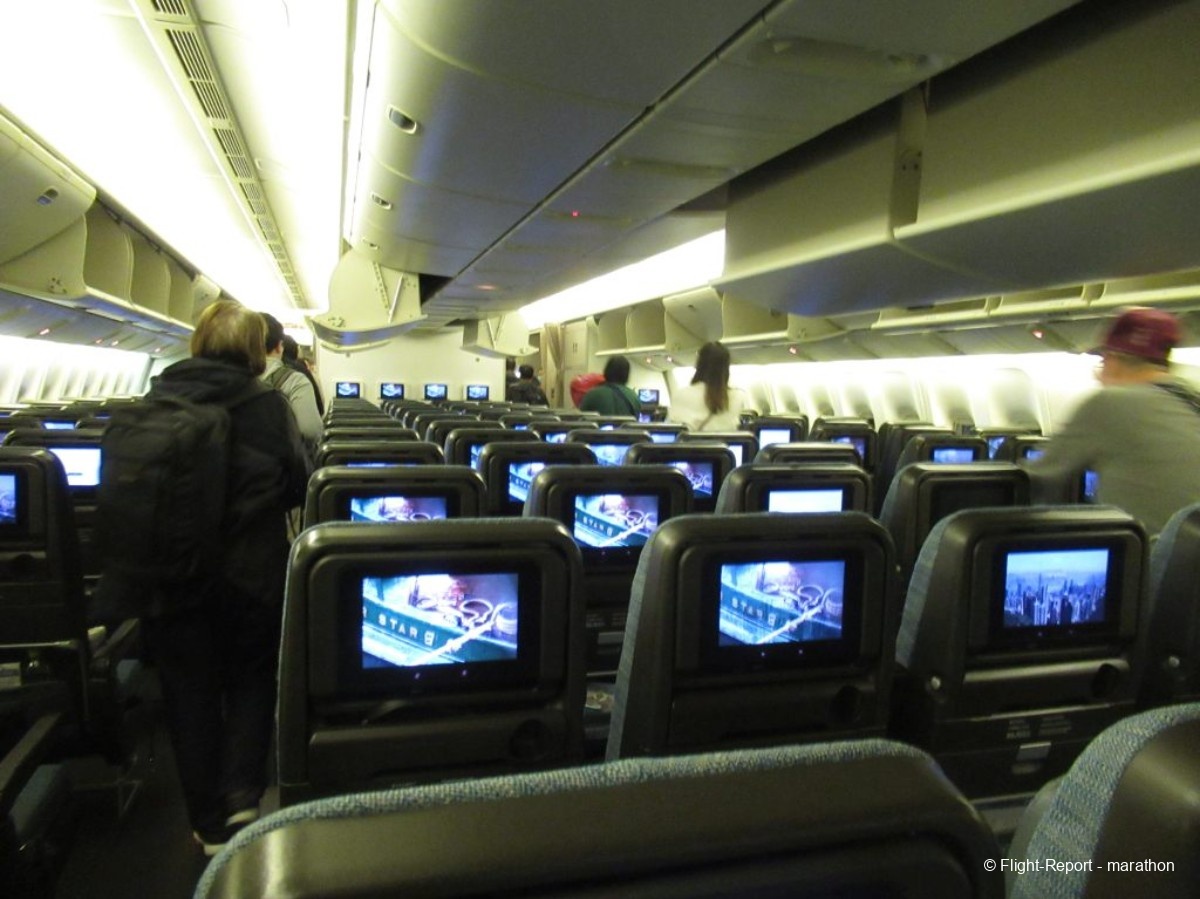
There were three options: connecting, exiting in Hong Kong, or transiting to the mainland or Macau without entering Hong Kong.
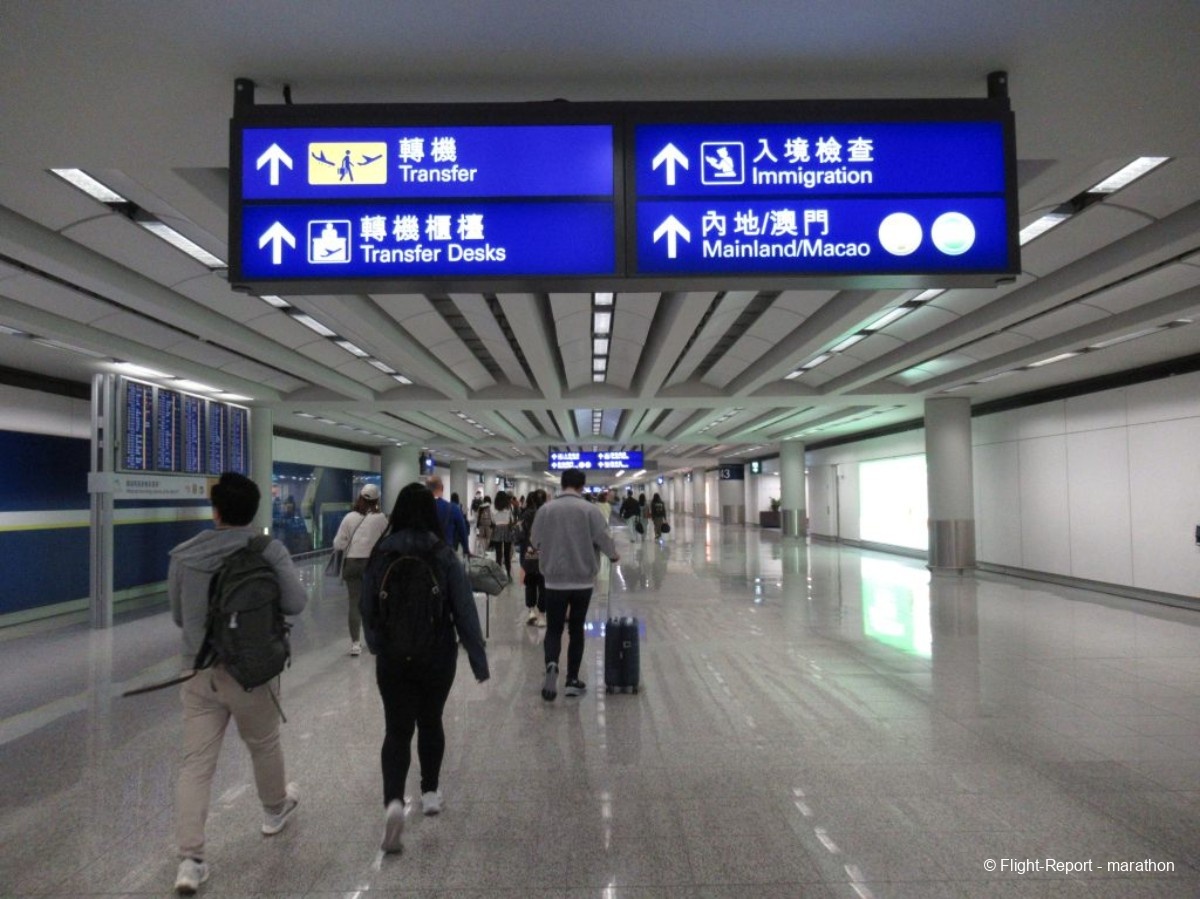
Good to know: there are showers available for free, which can be nice when arriving in the morning from a long-haul flight, but I don't know the waiting time at rush hour.
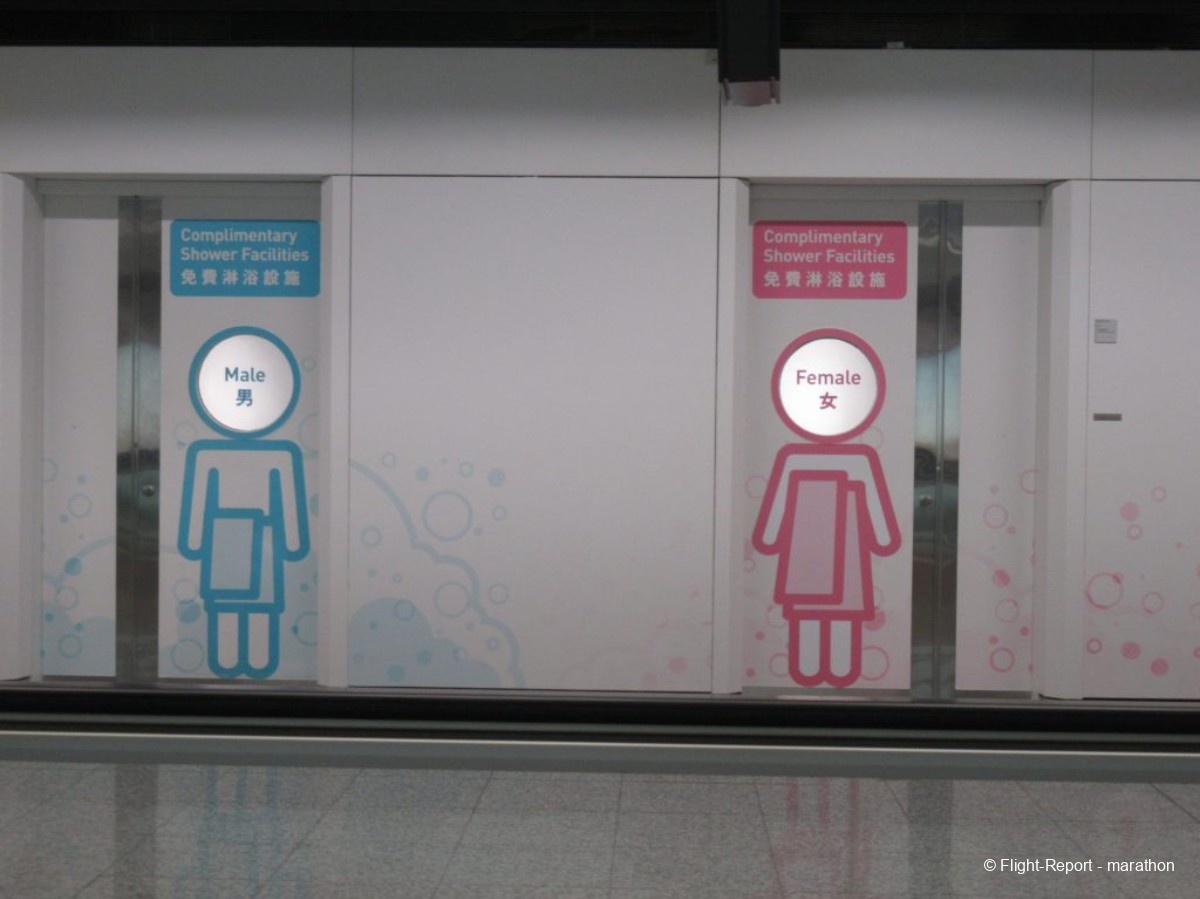
Transit is there on the right
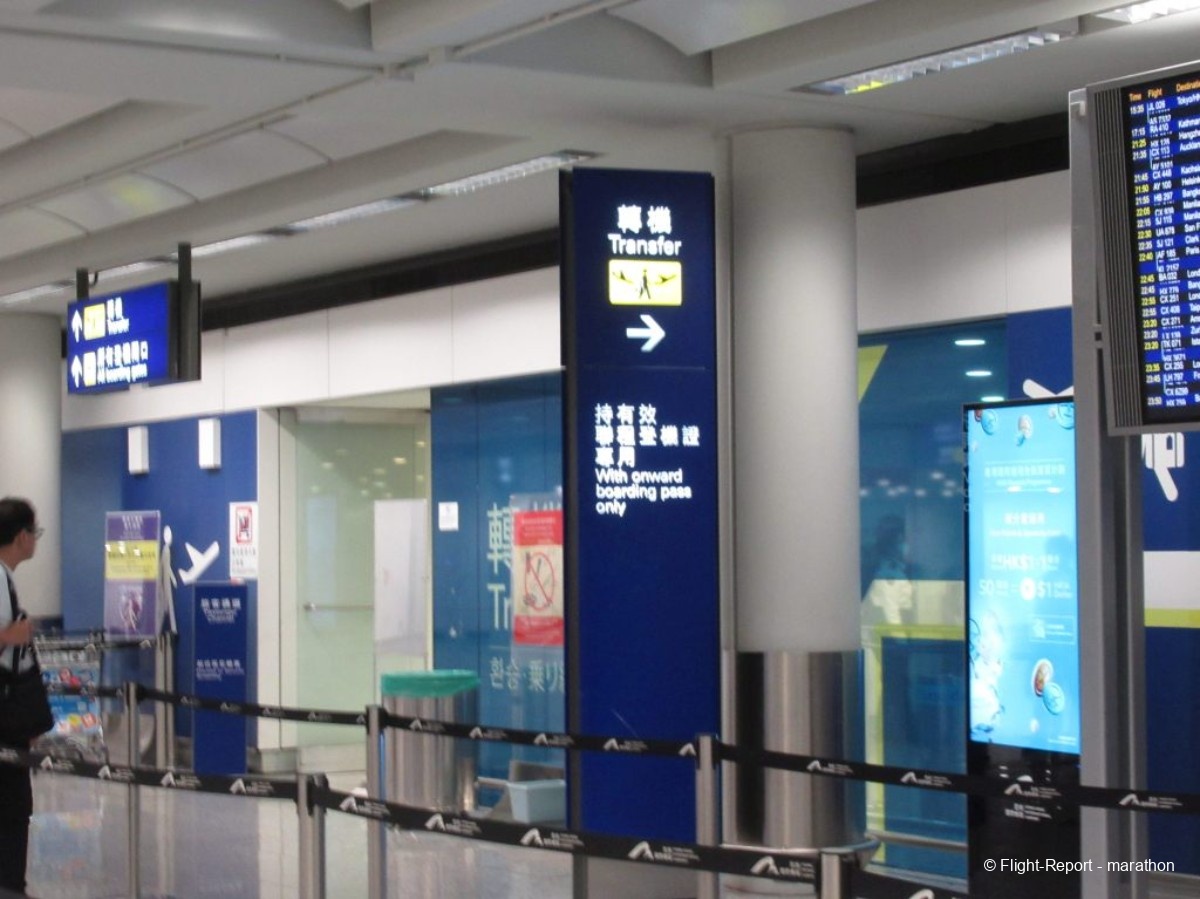
Boarding is upstairs
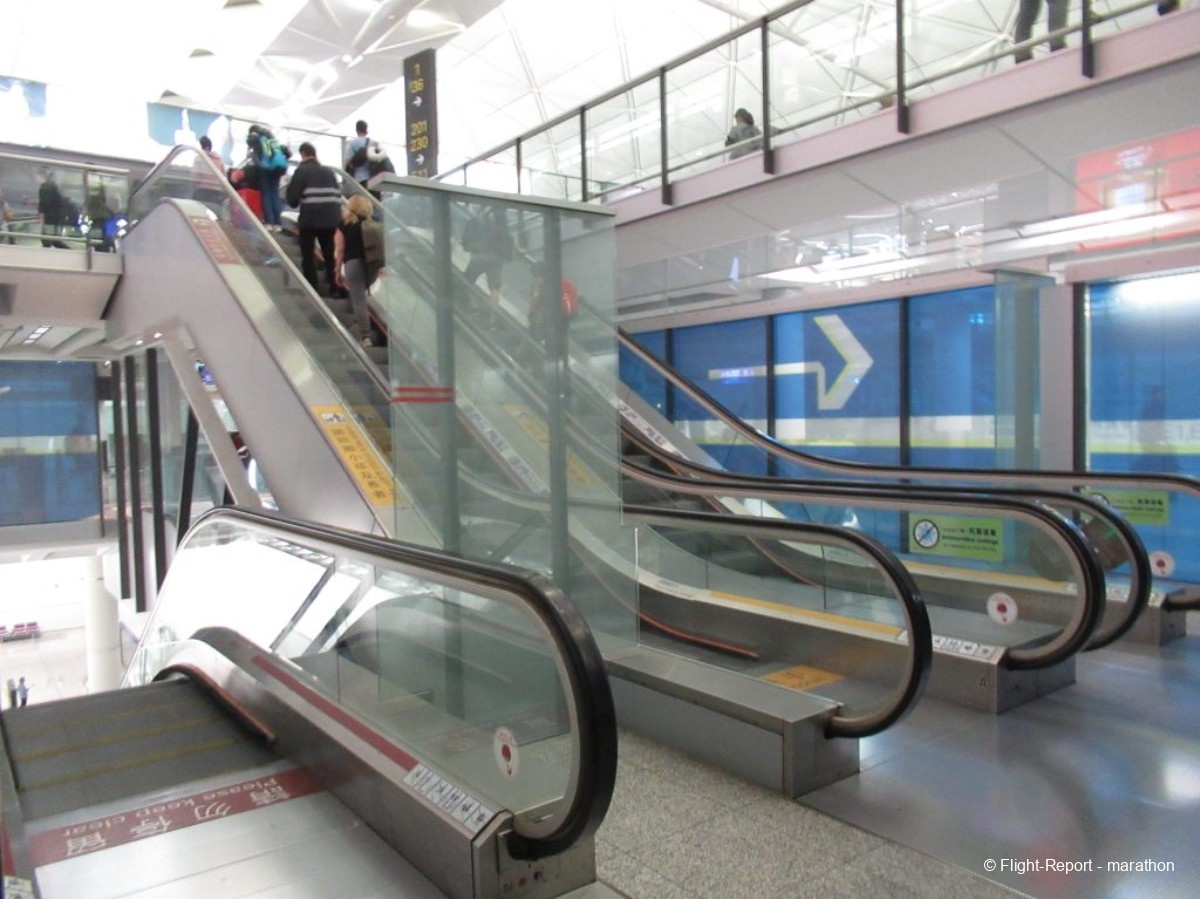
Our flight to Paris was displayed on the FIDS.
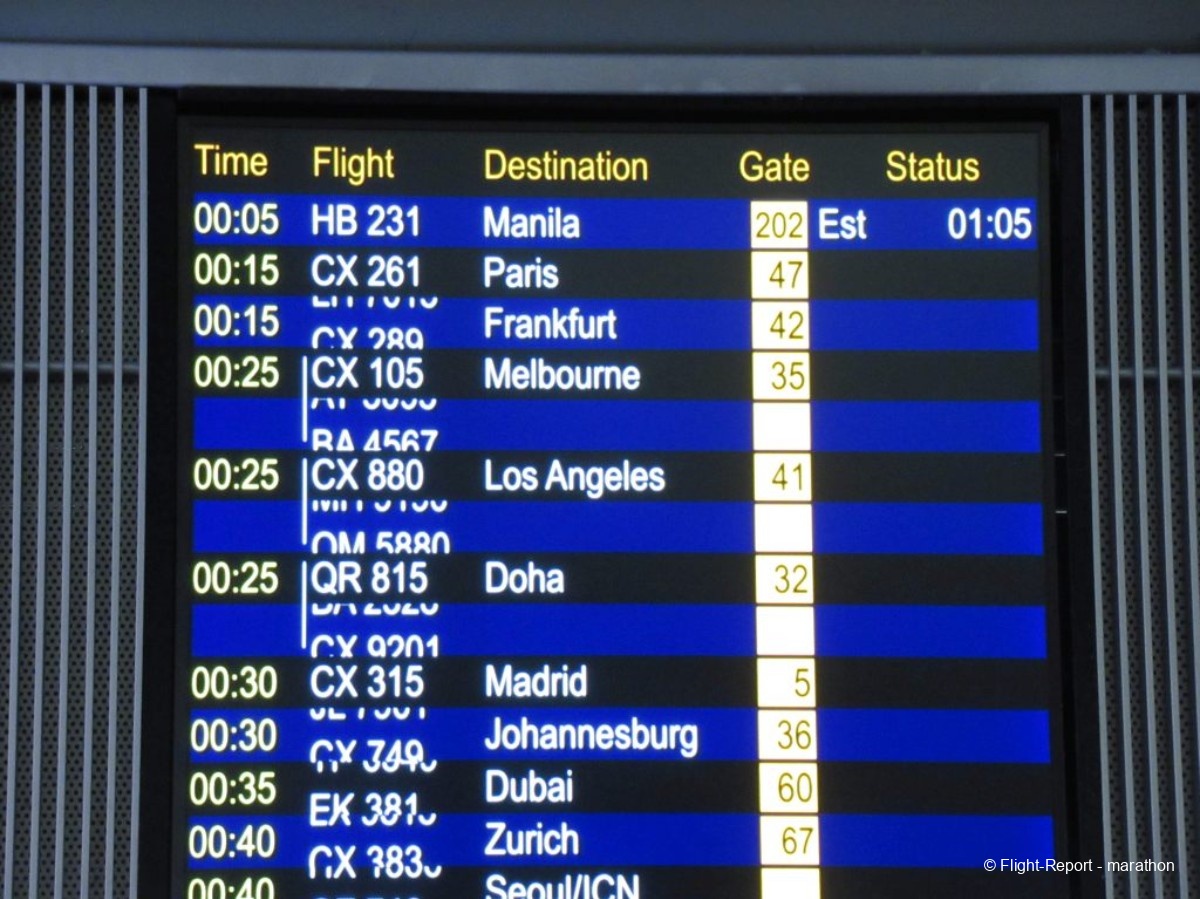
More in the next FR!
Bonus: the Kofun near KIX
I'm offering you a tourist bonus on a part of Japan's ancient heritage. It is as little-known as it is widespread, large in size and yet very difficult to see properly: the kofun.

